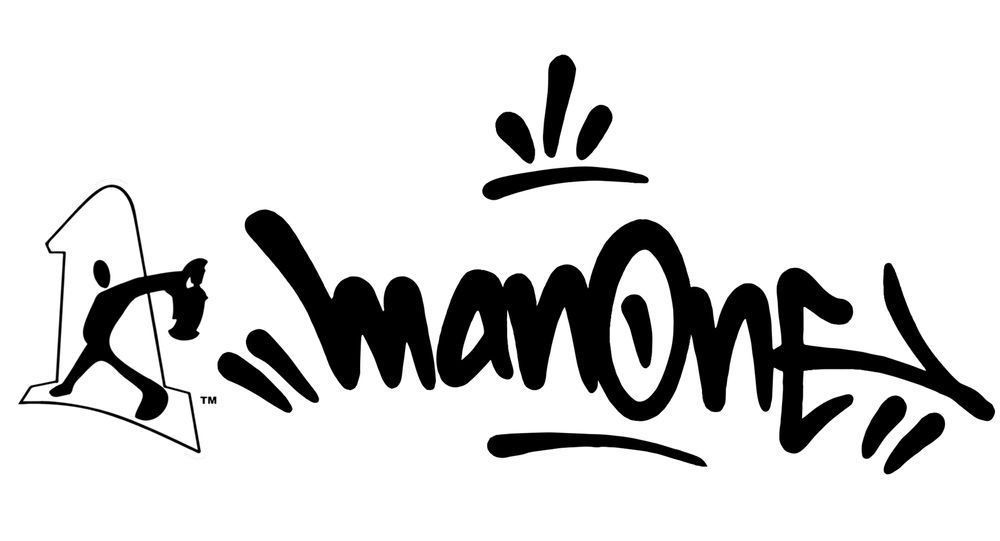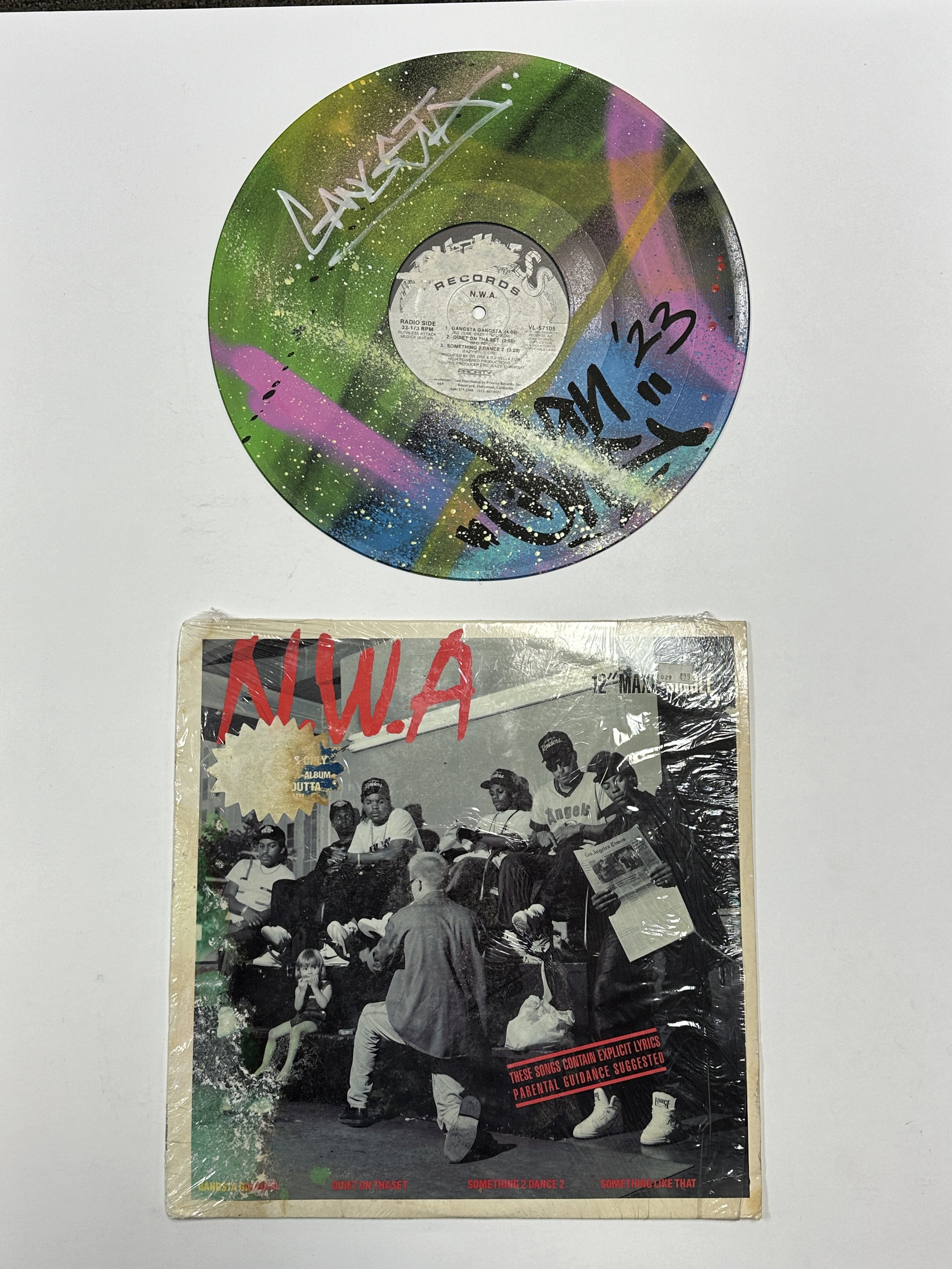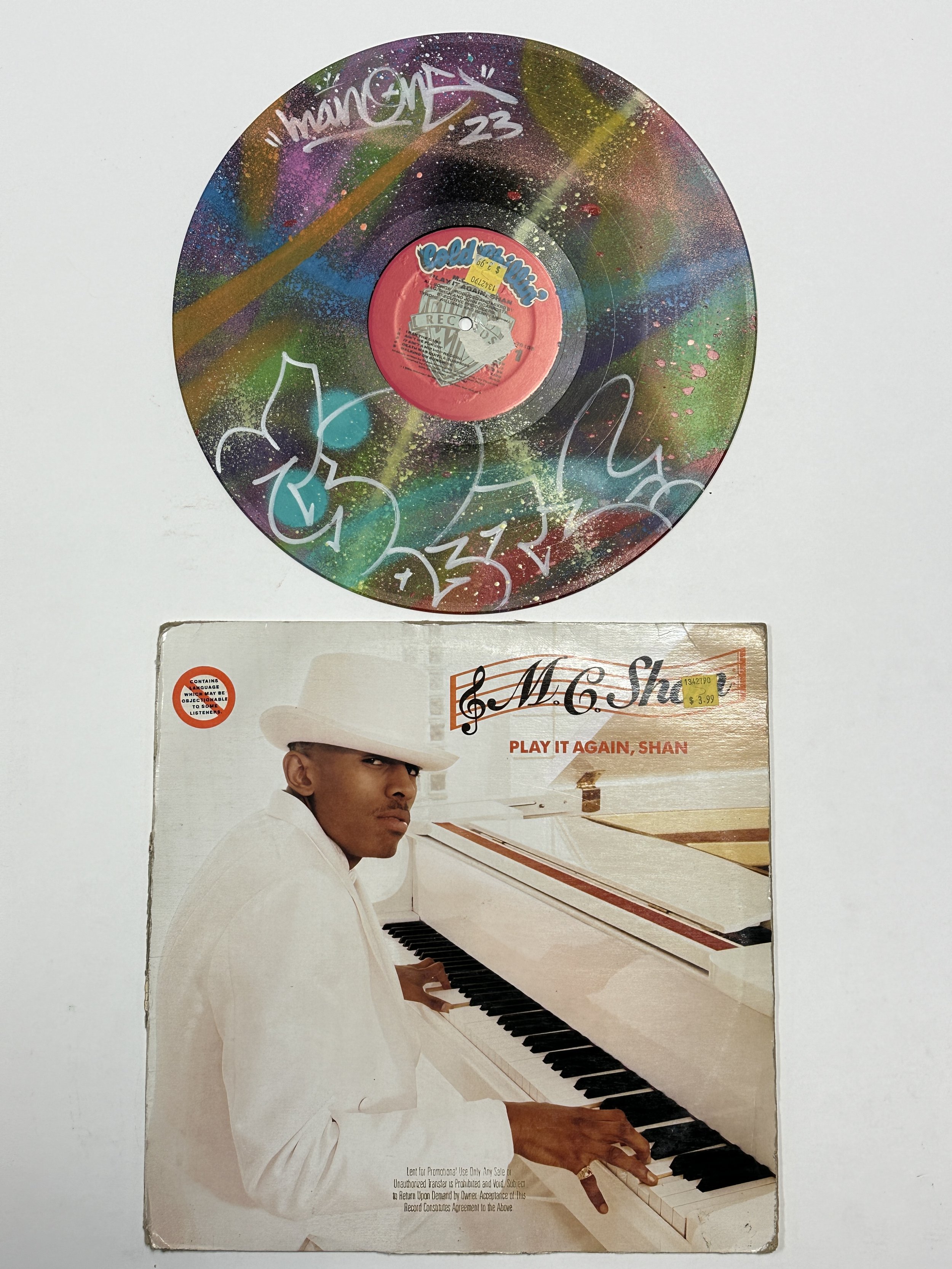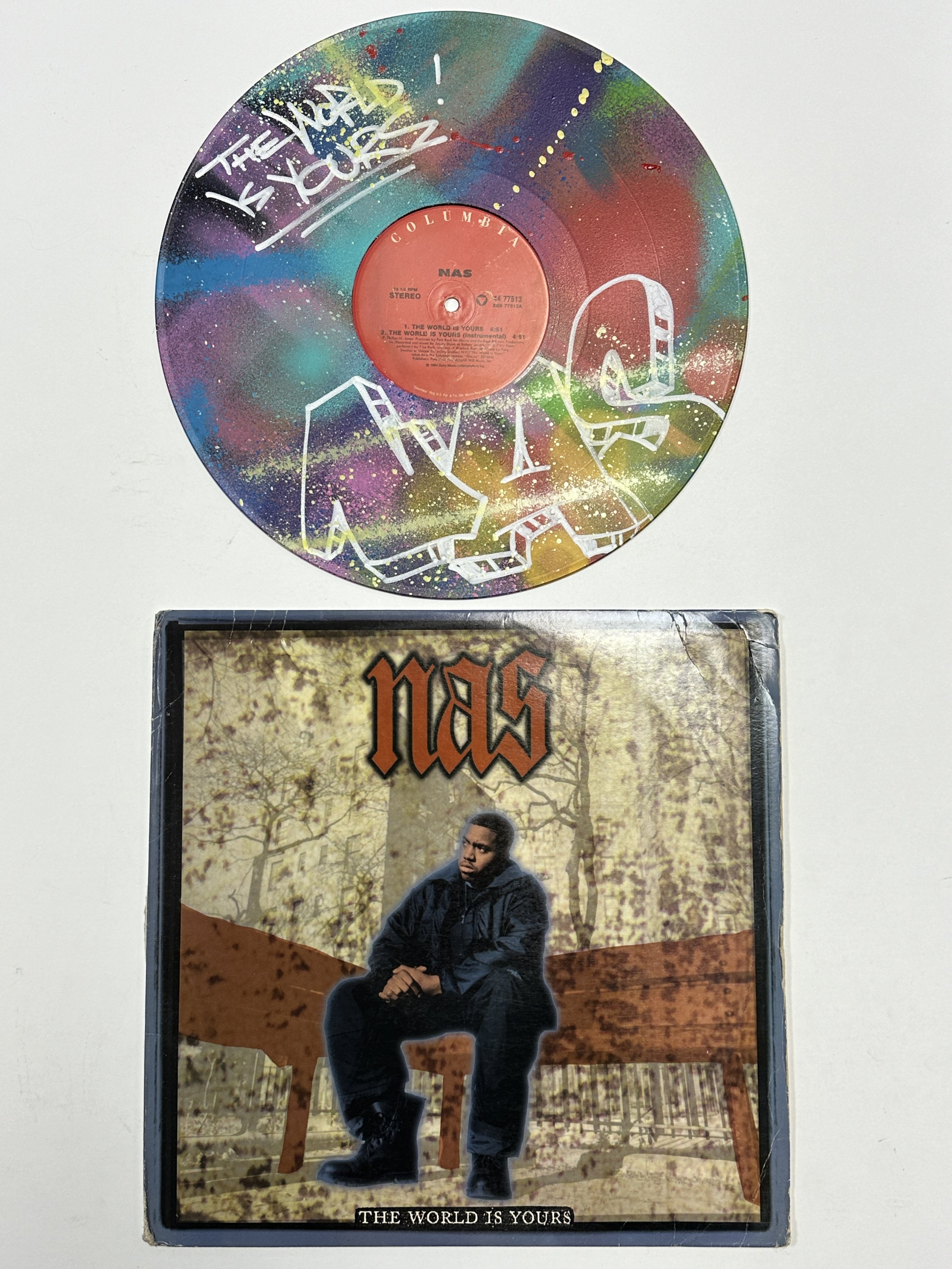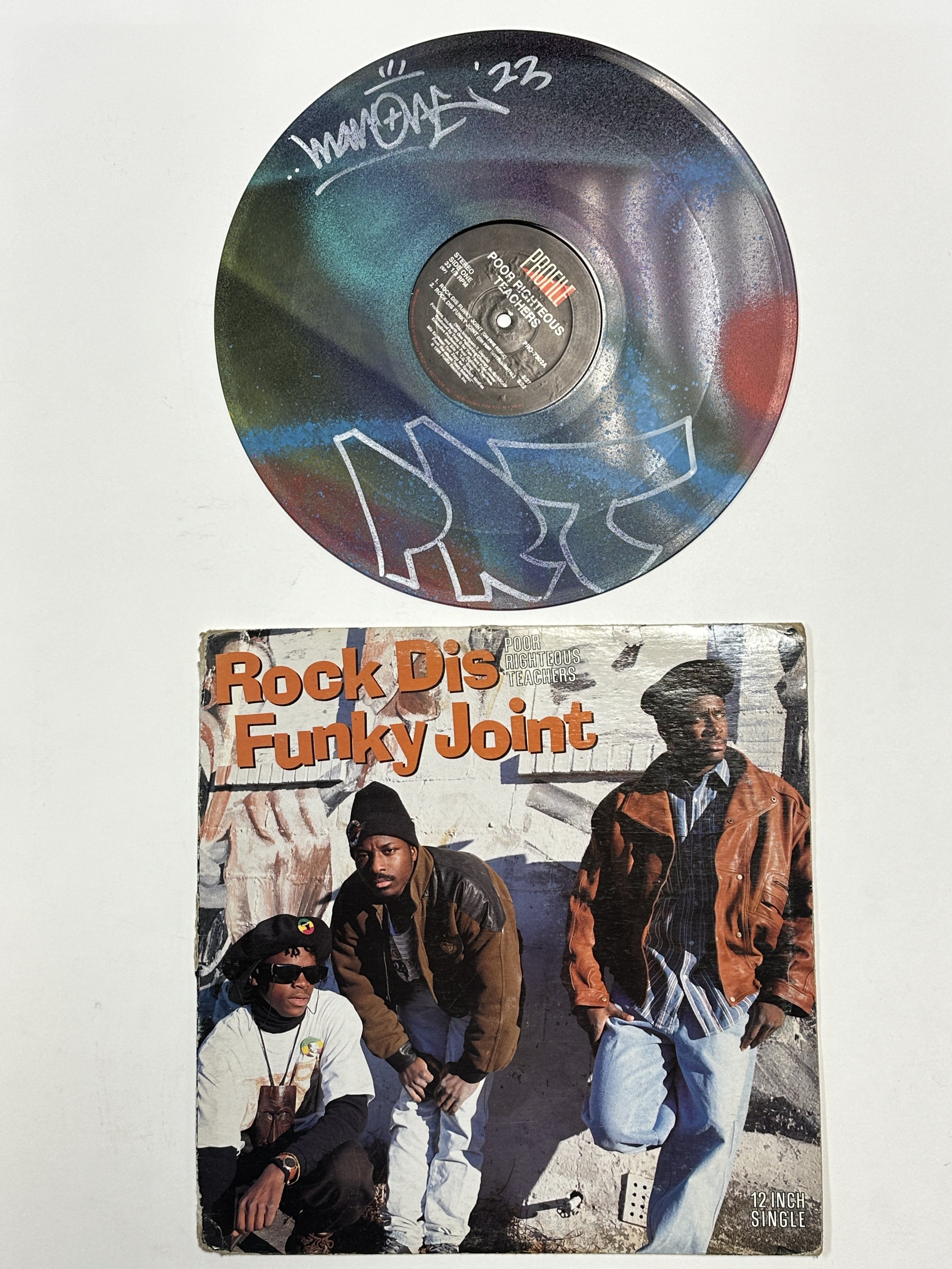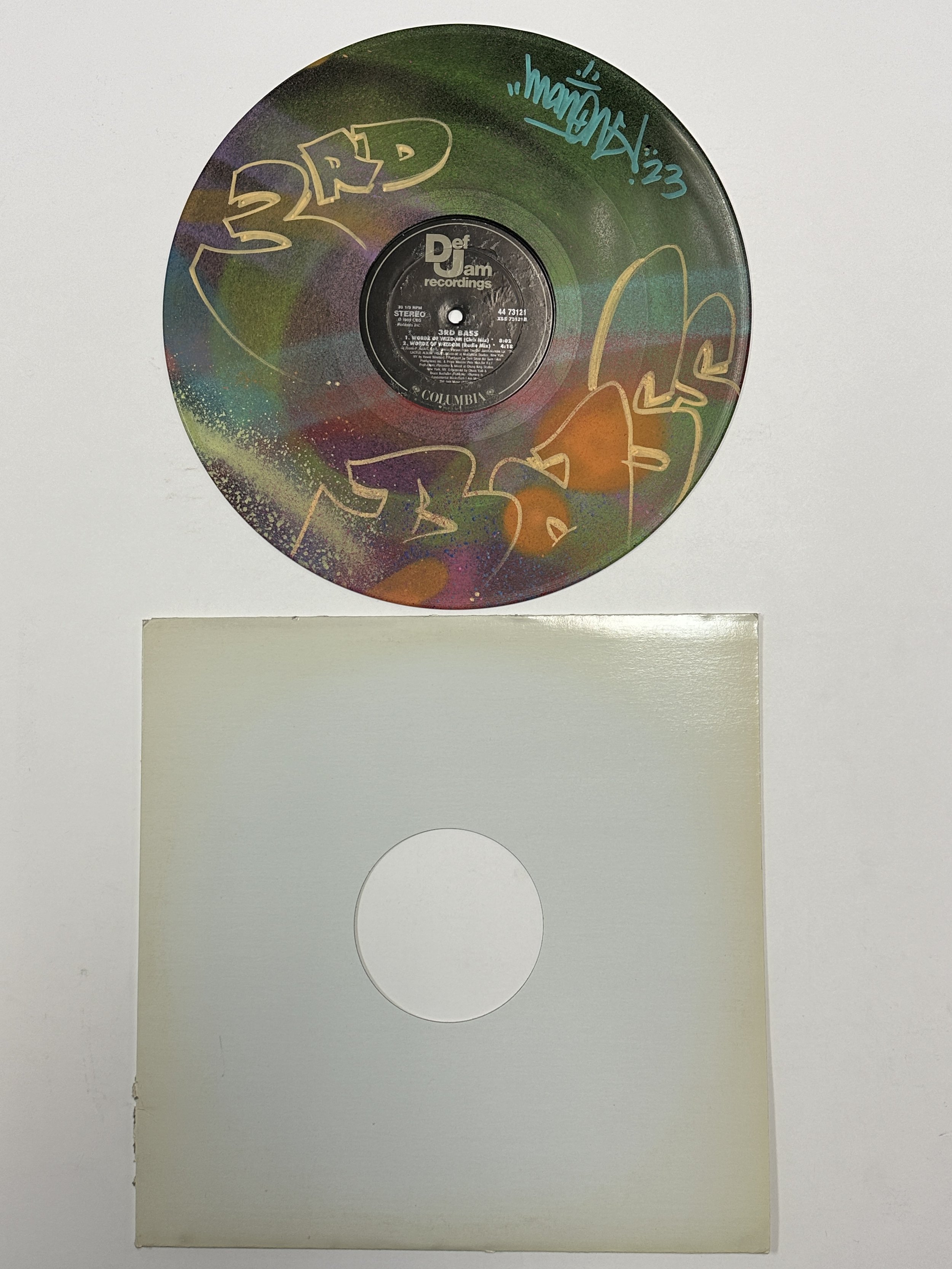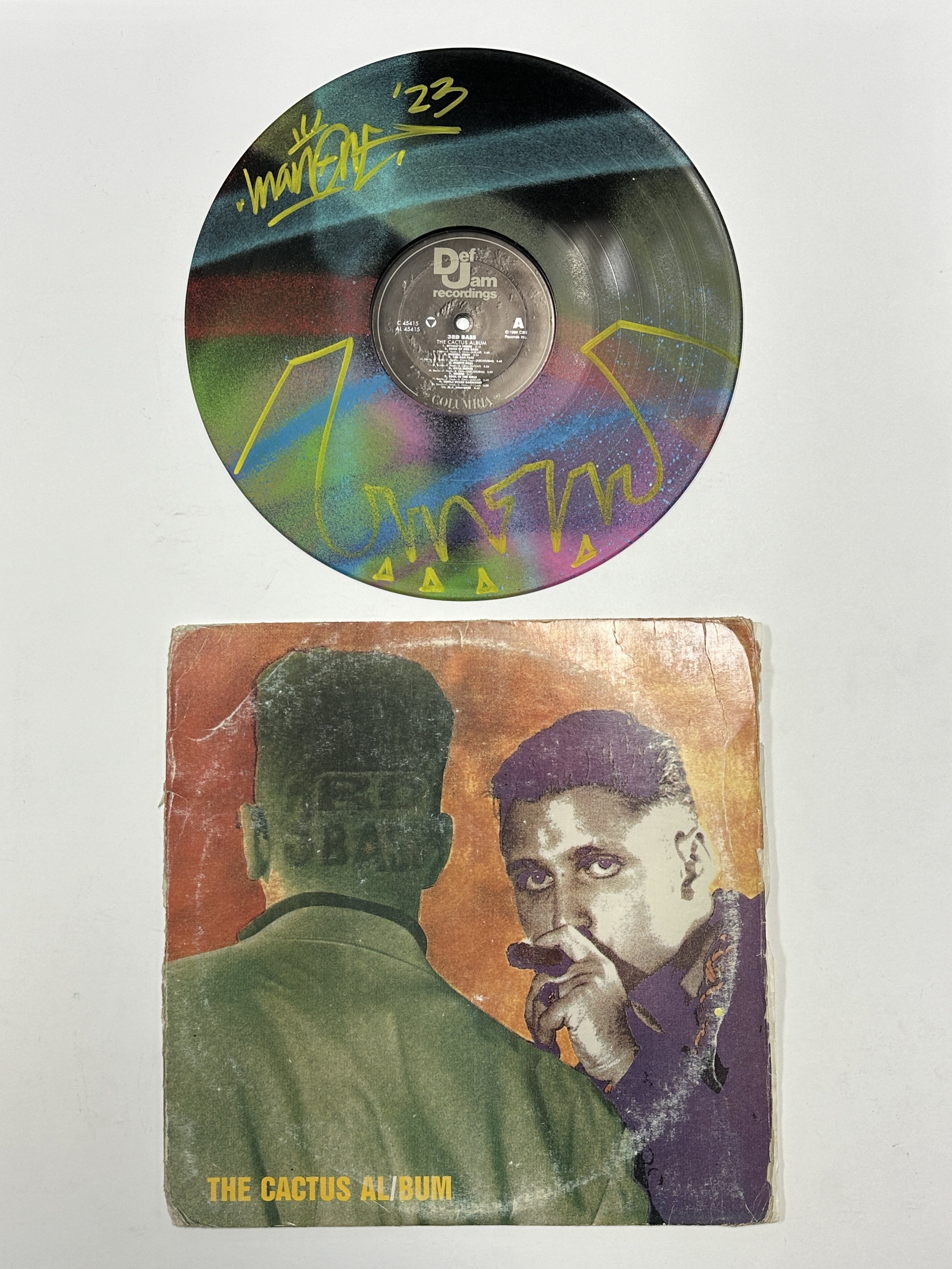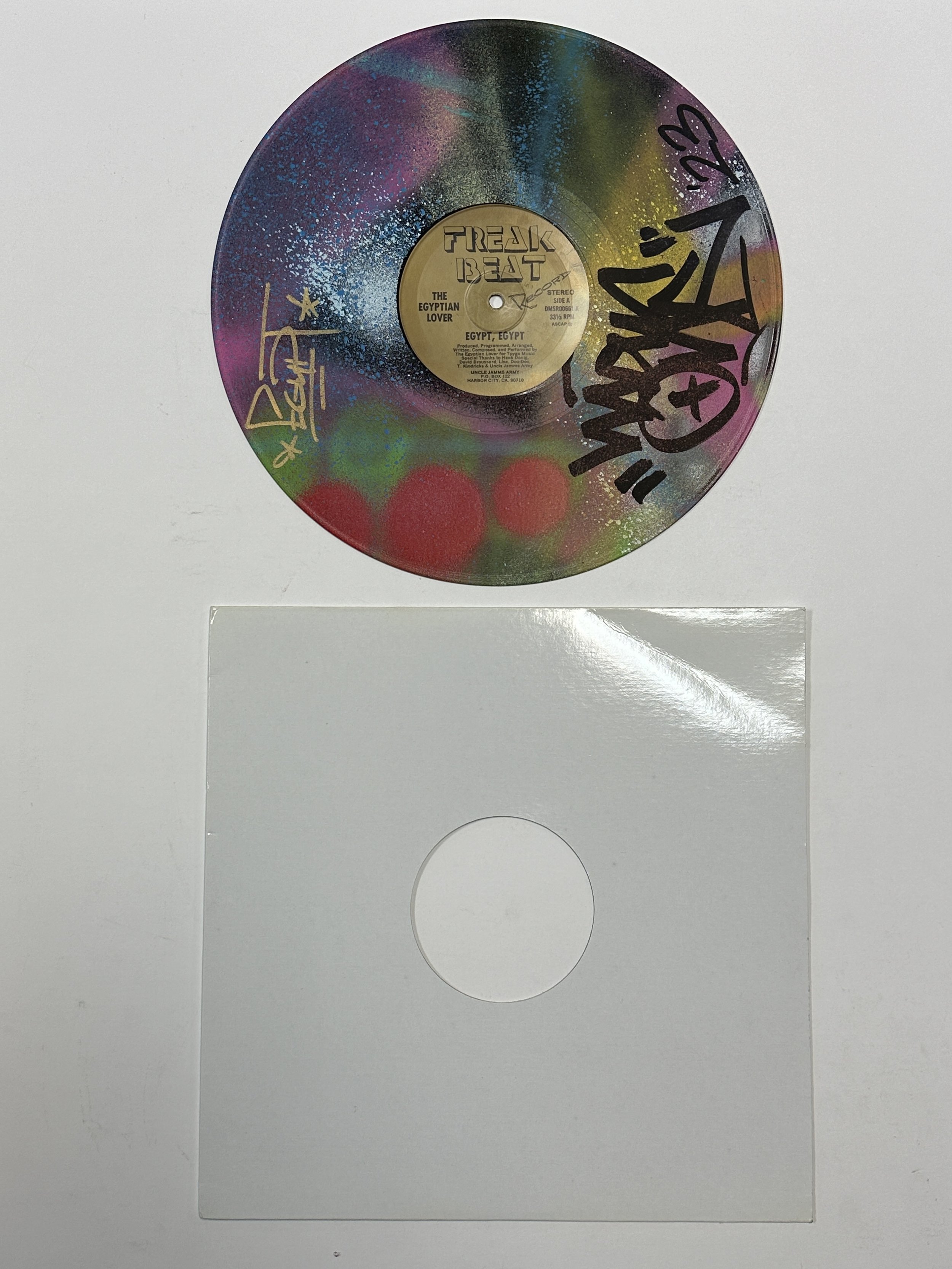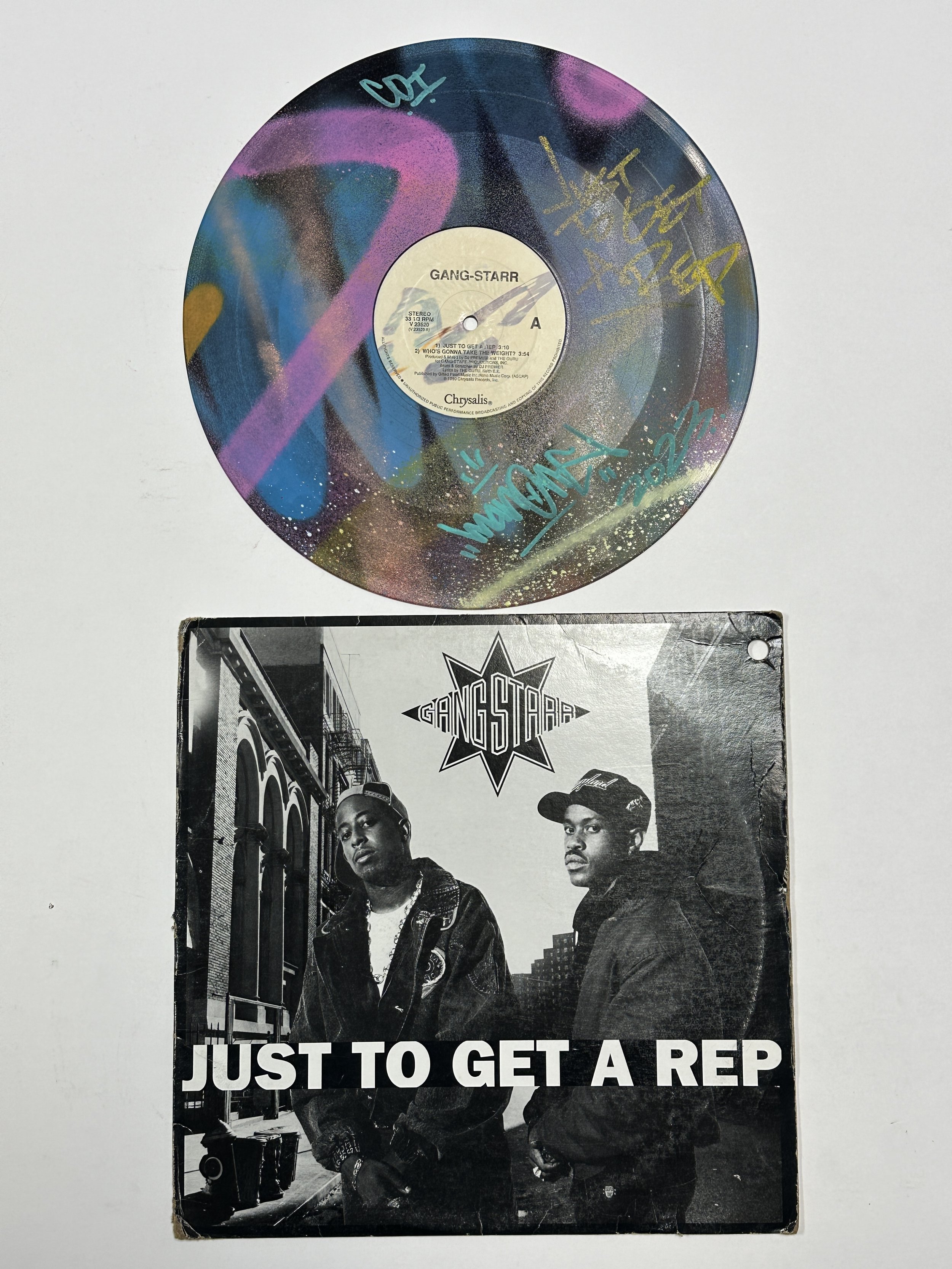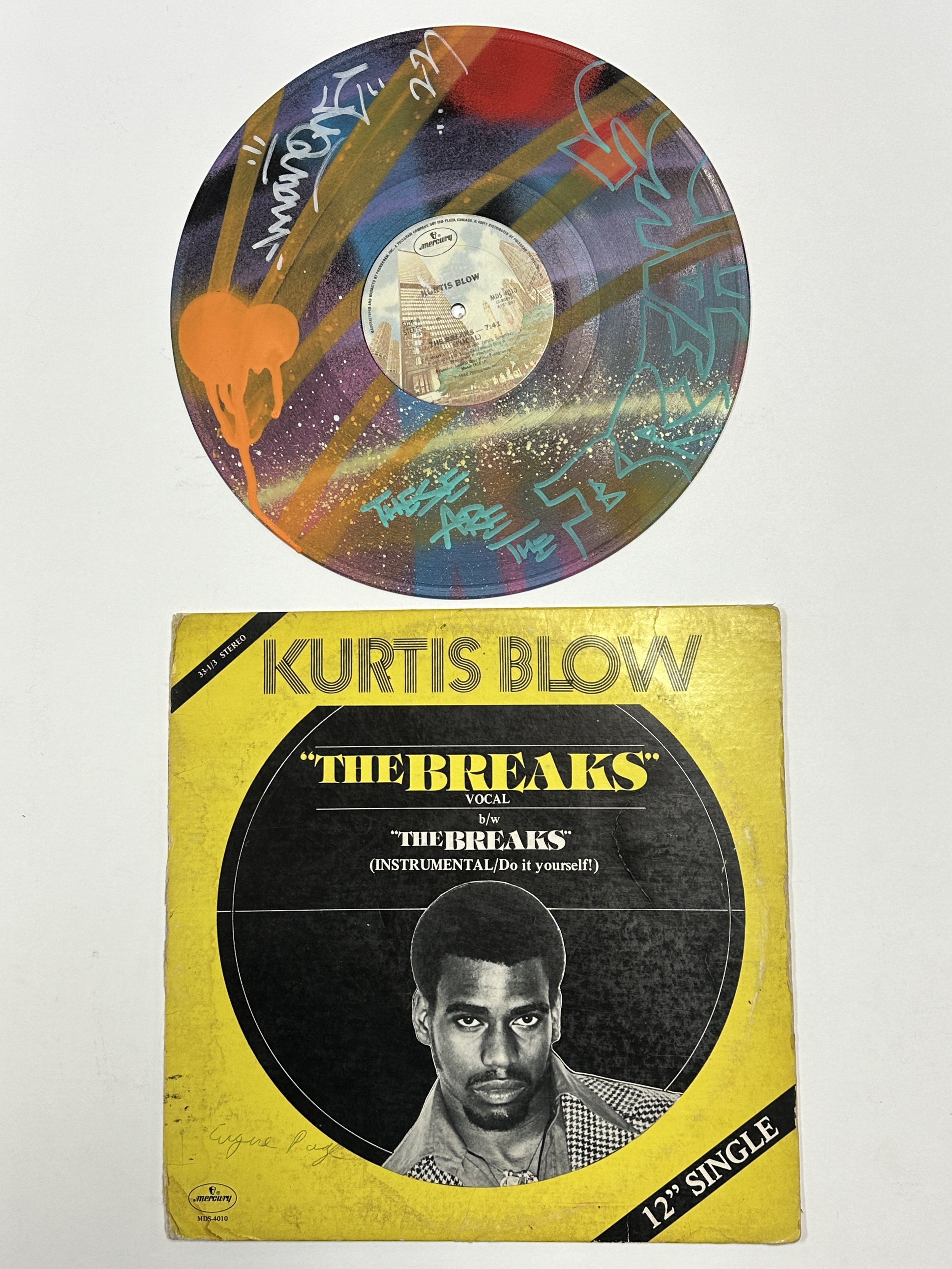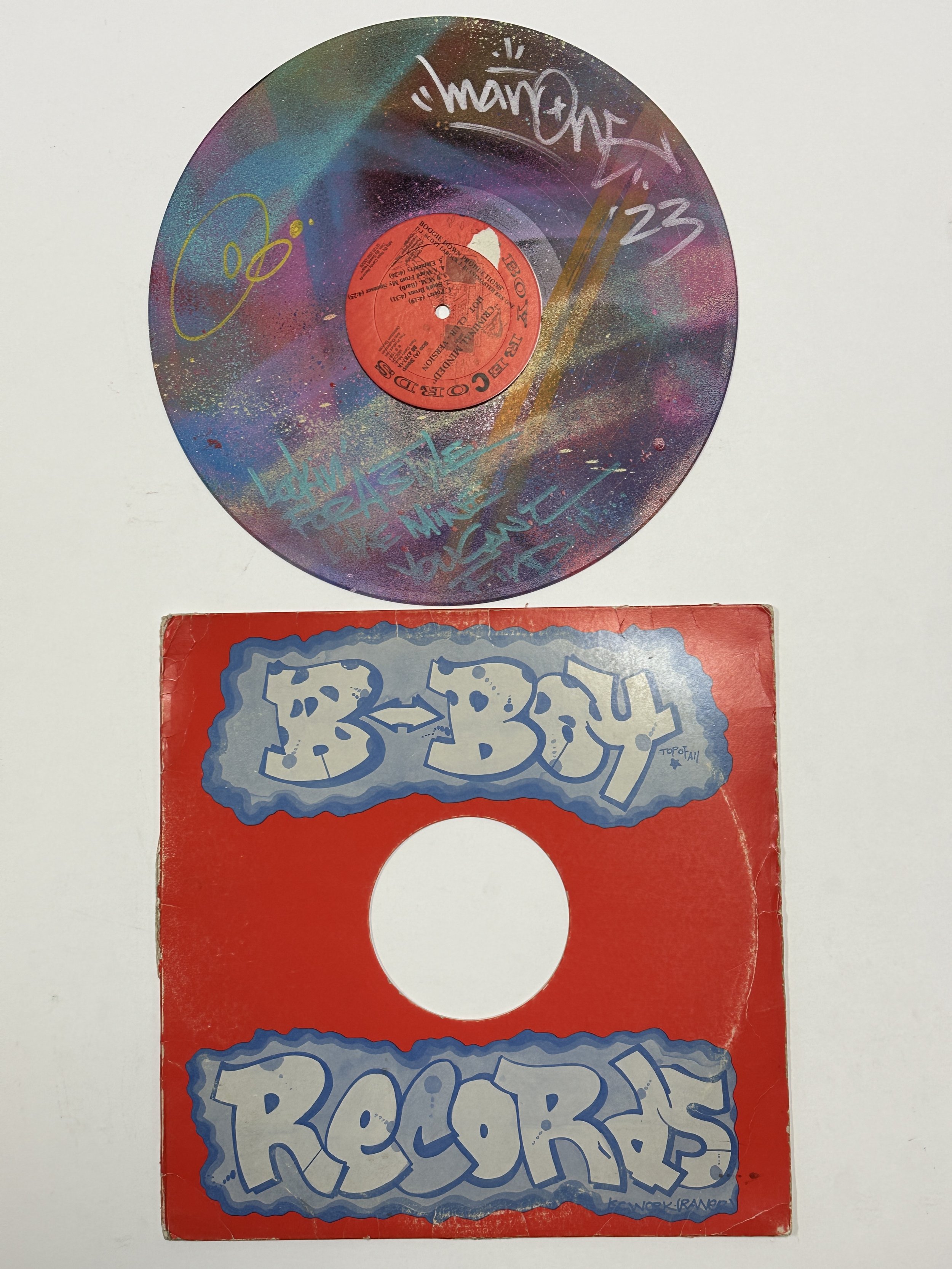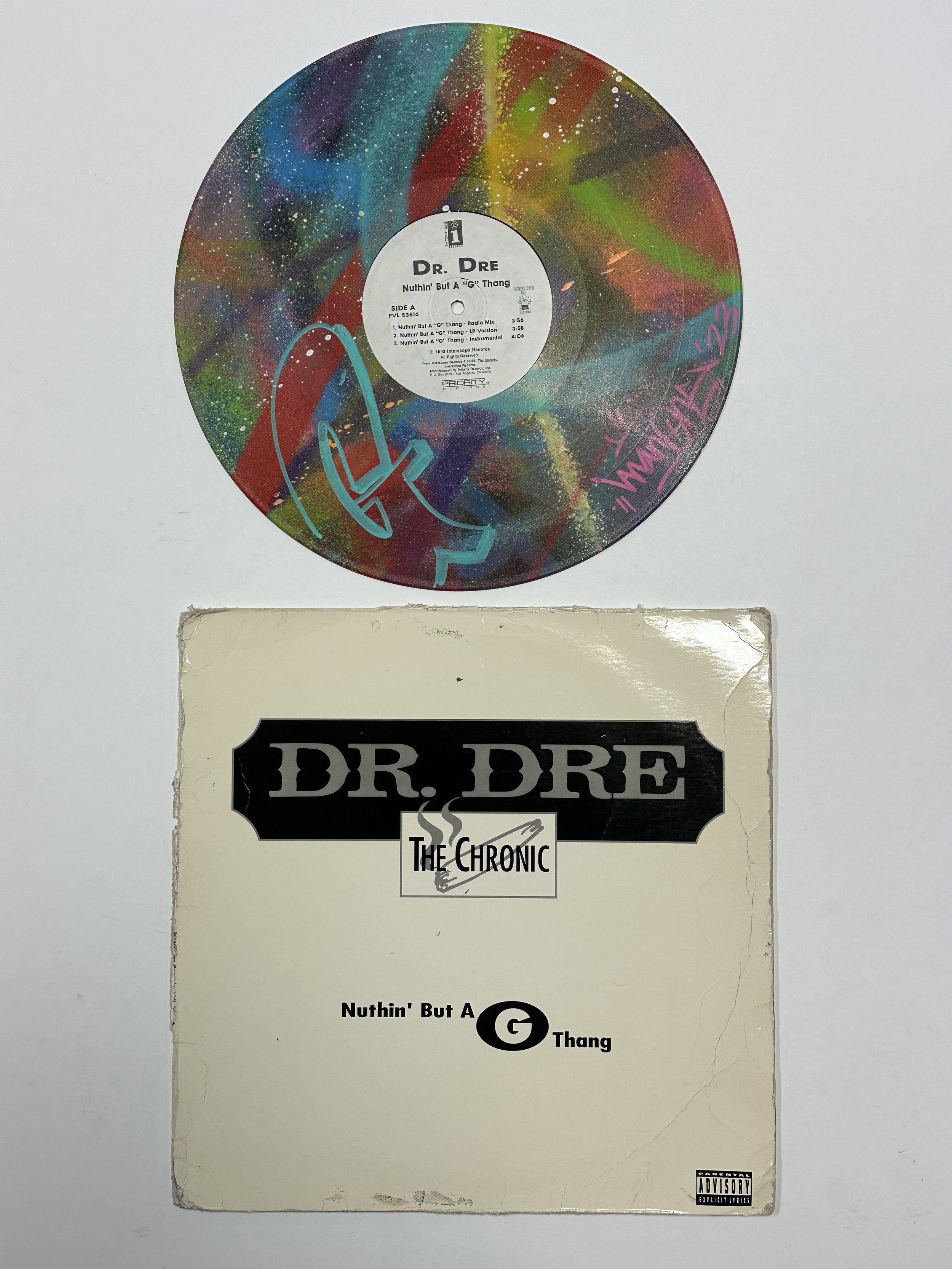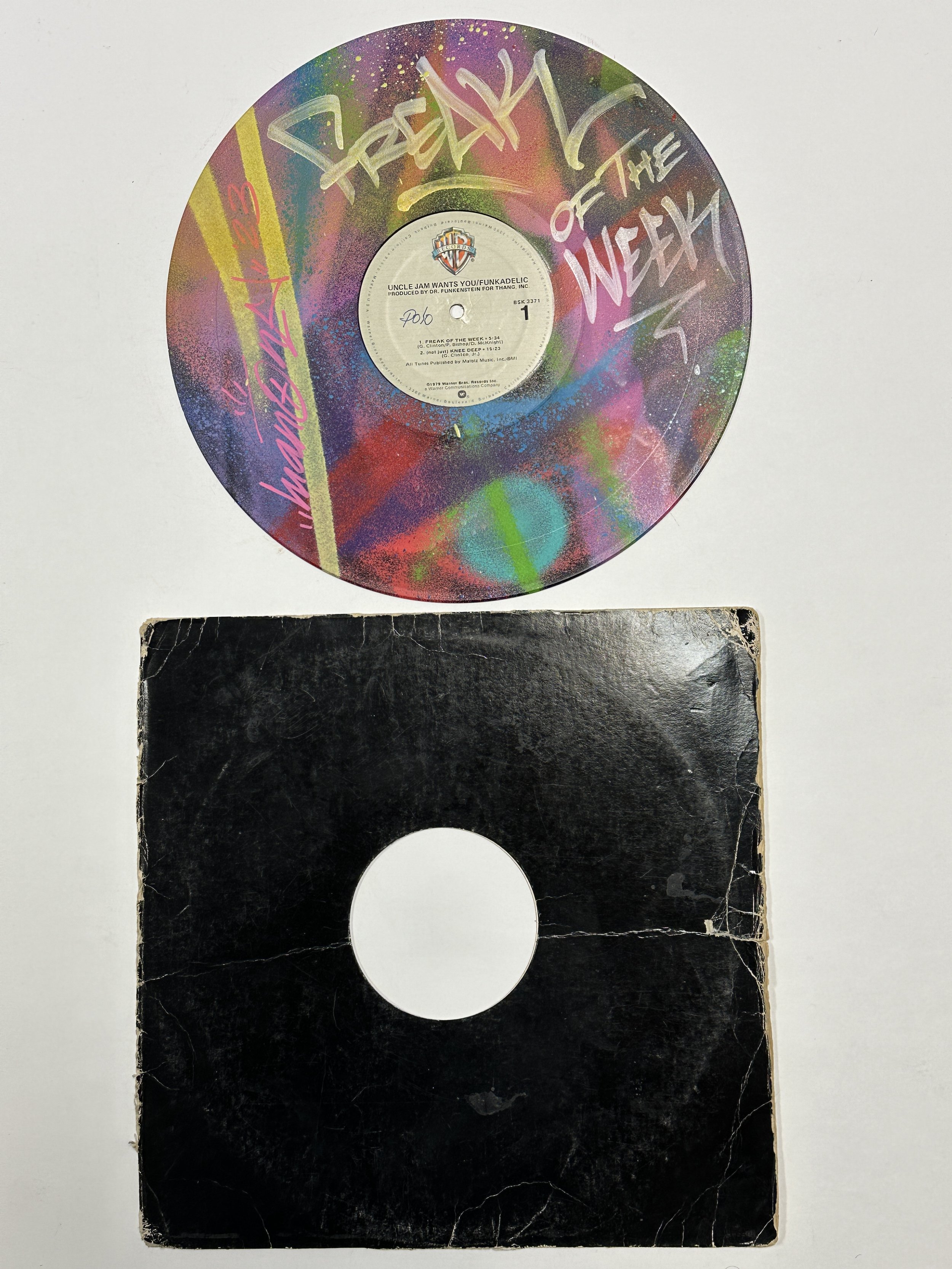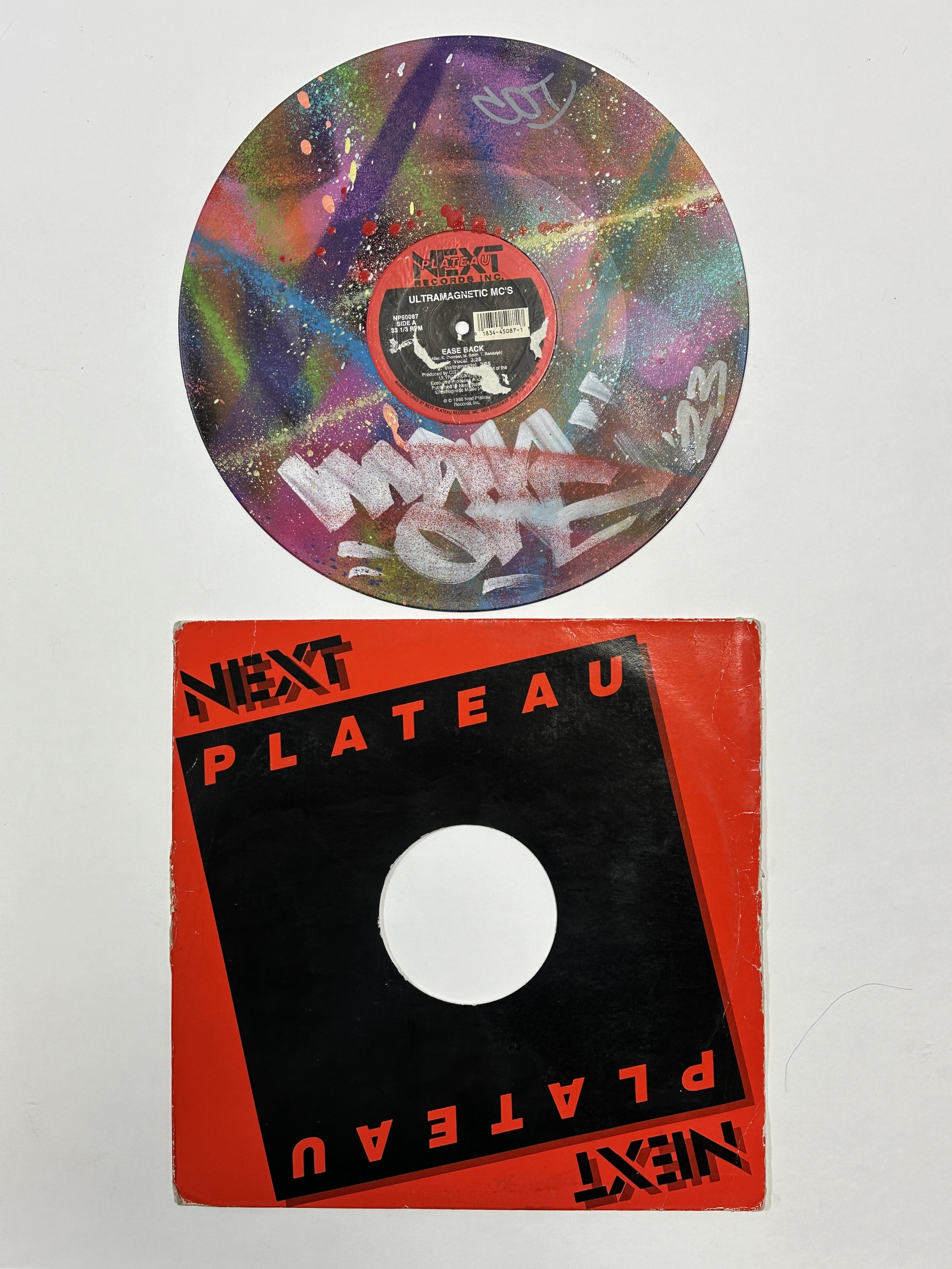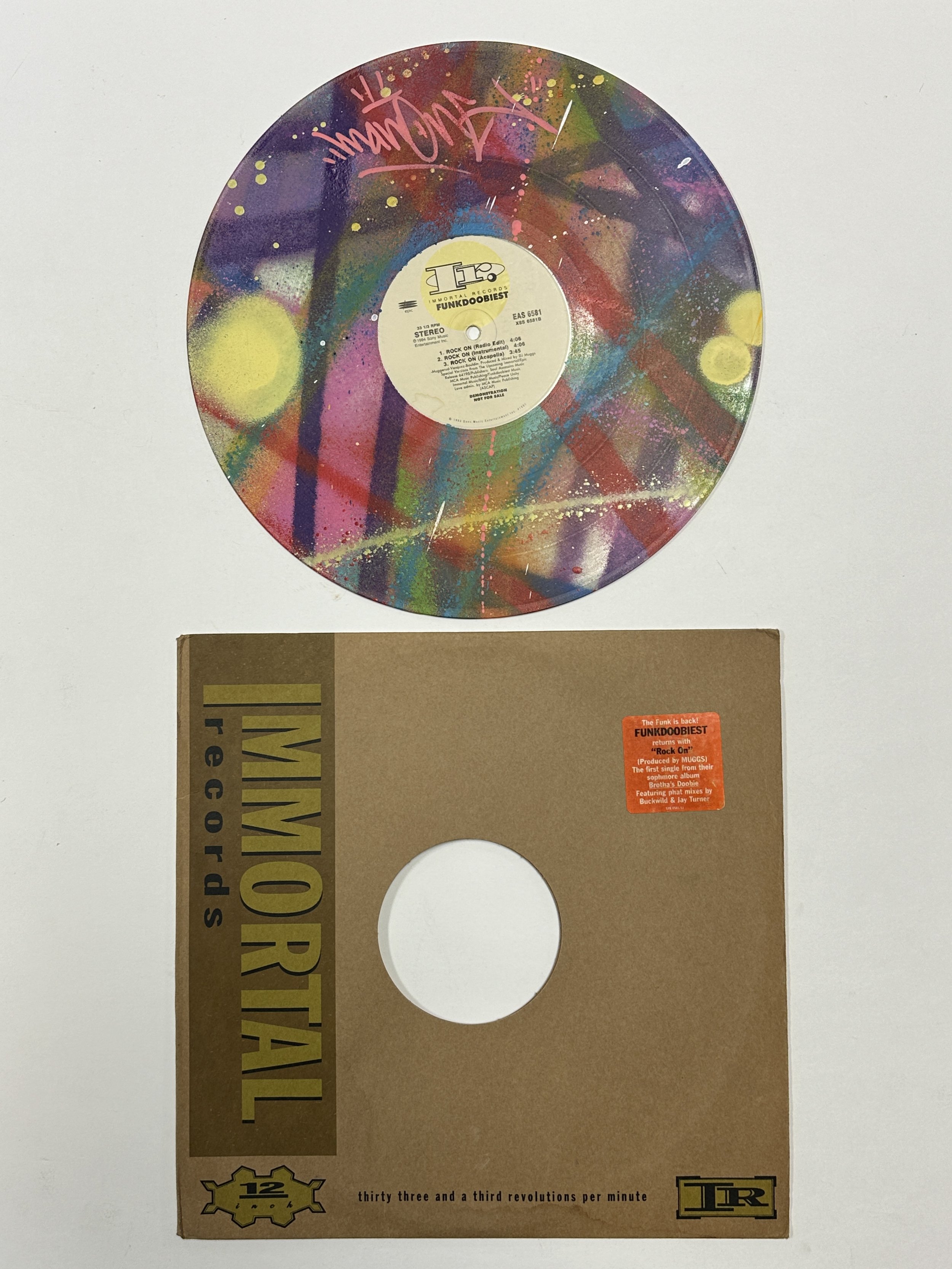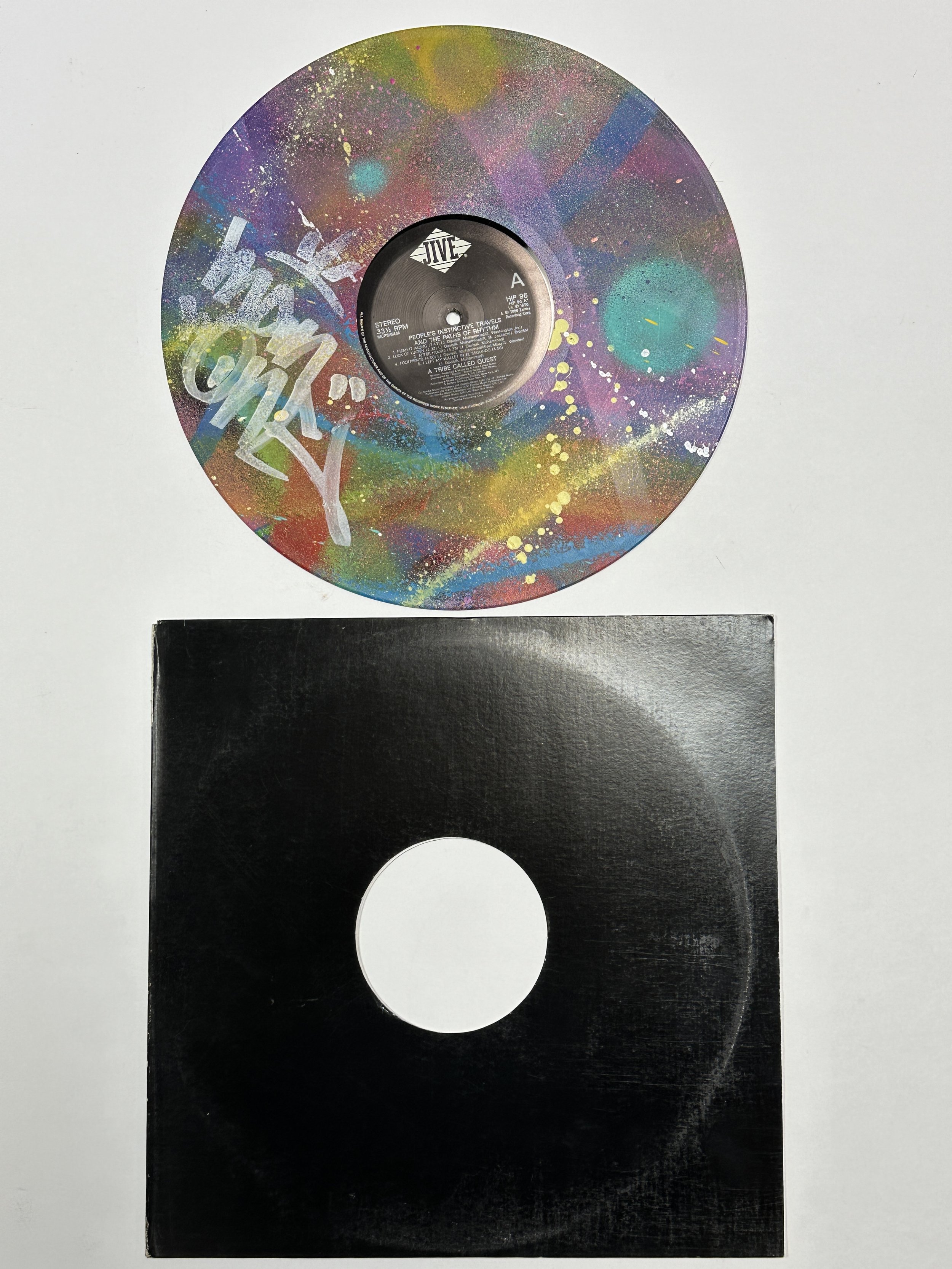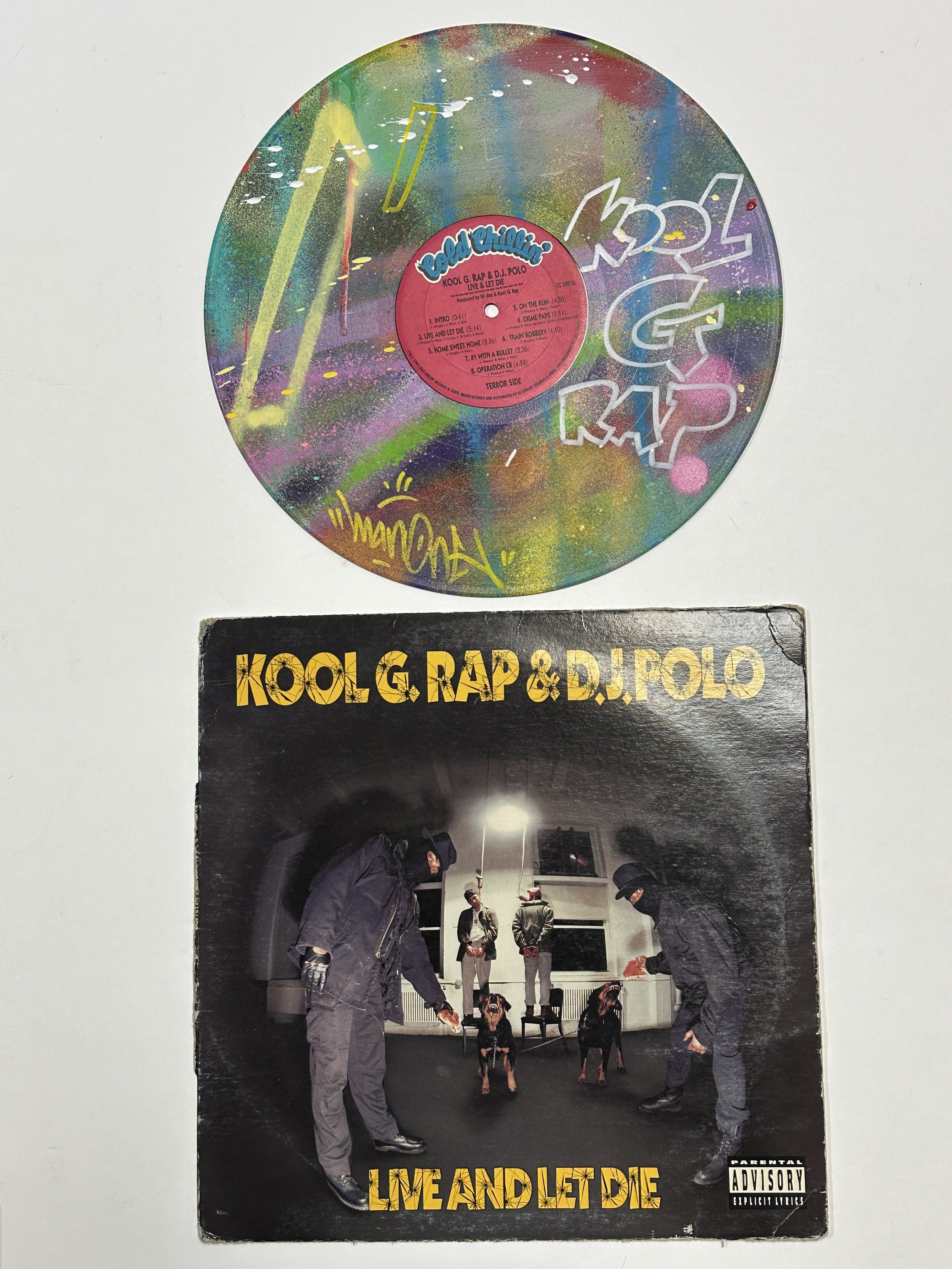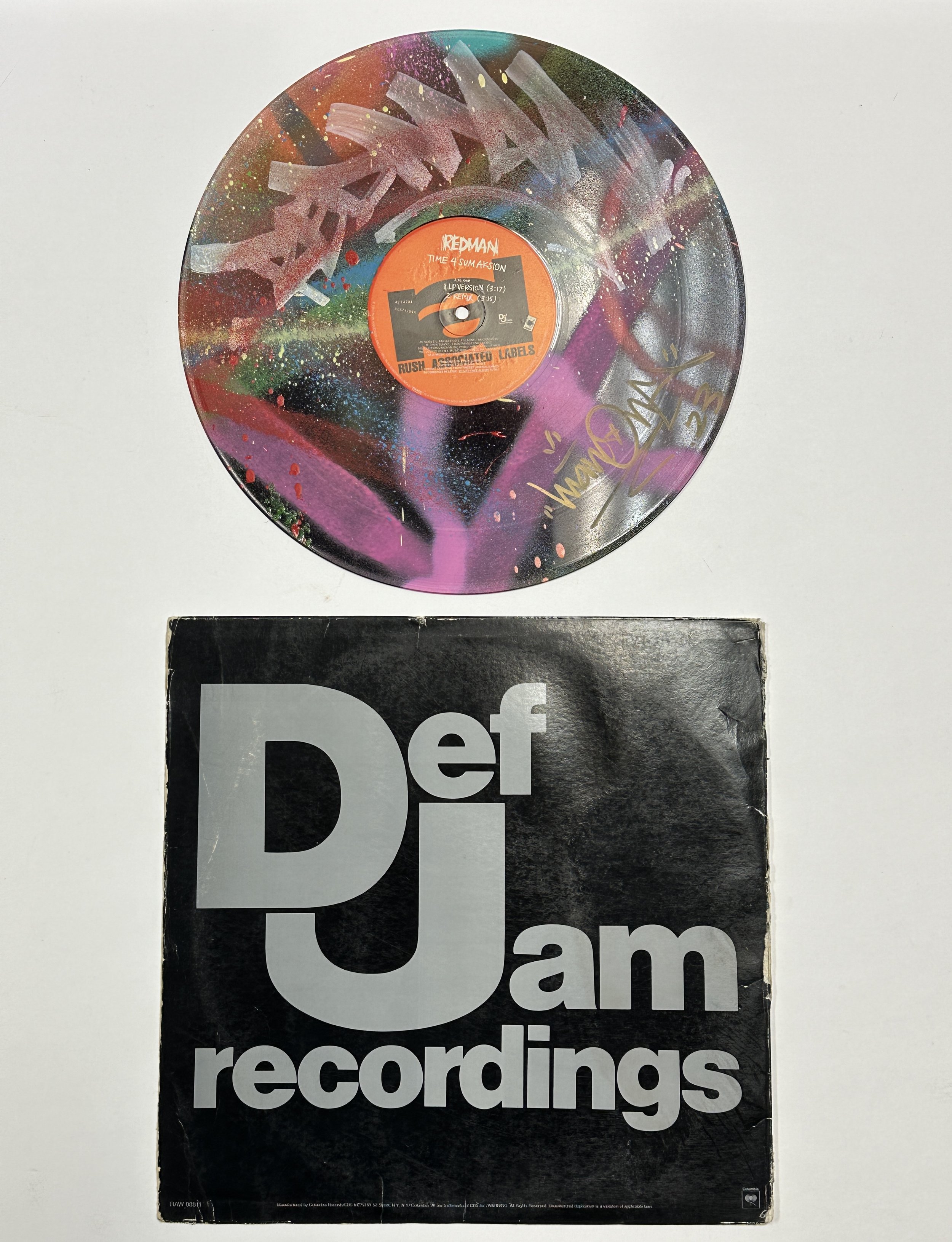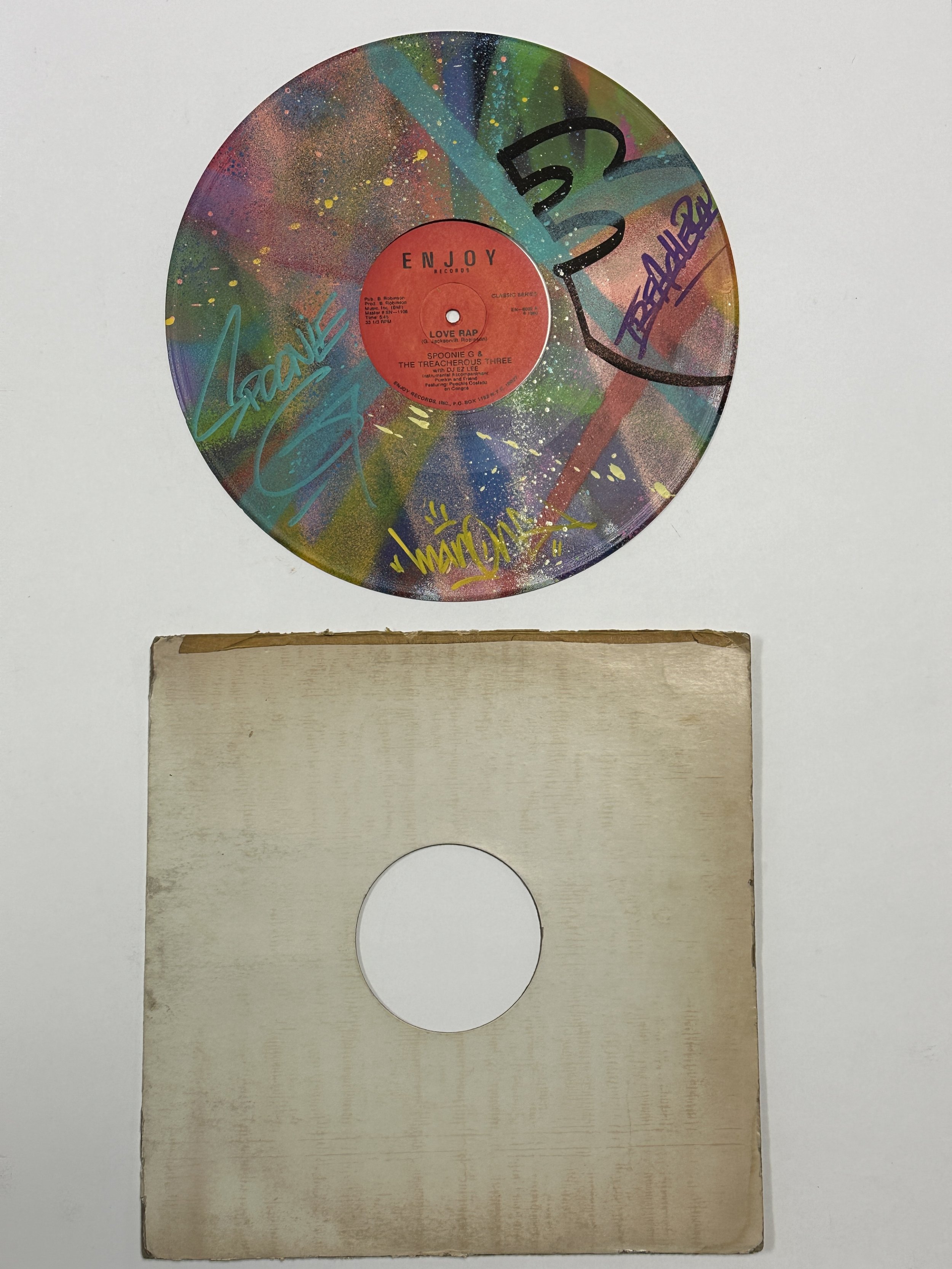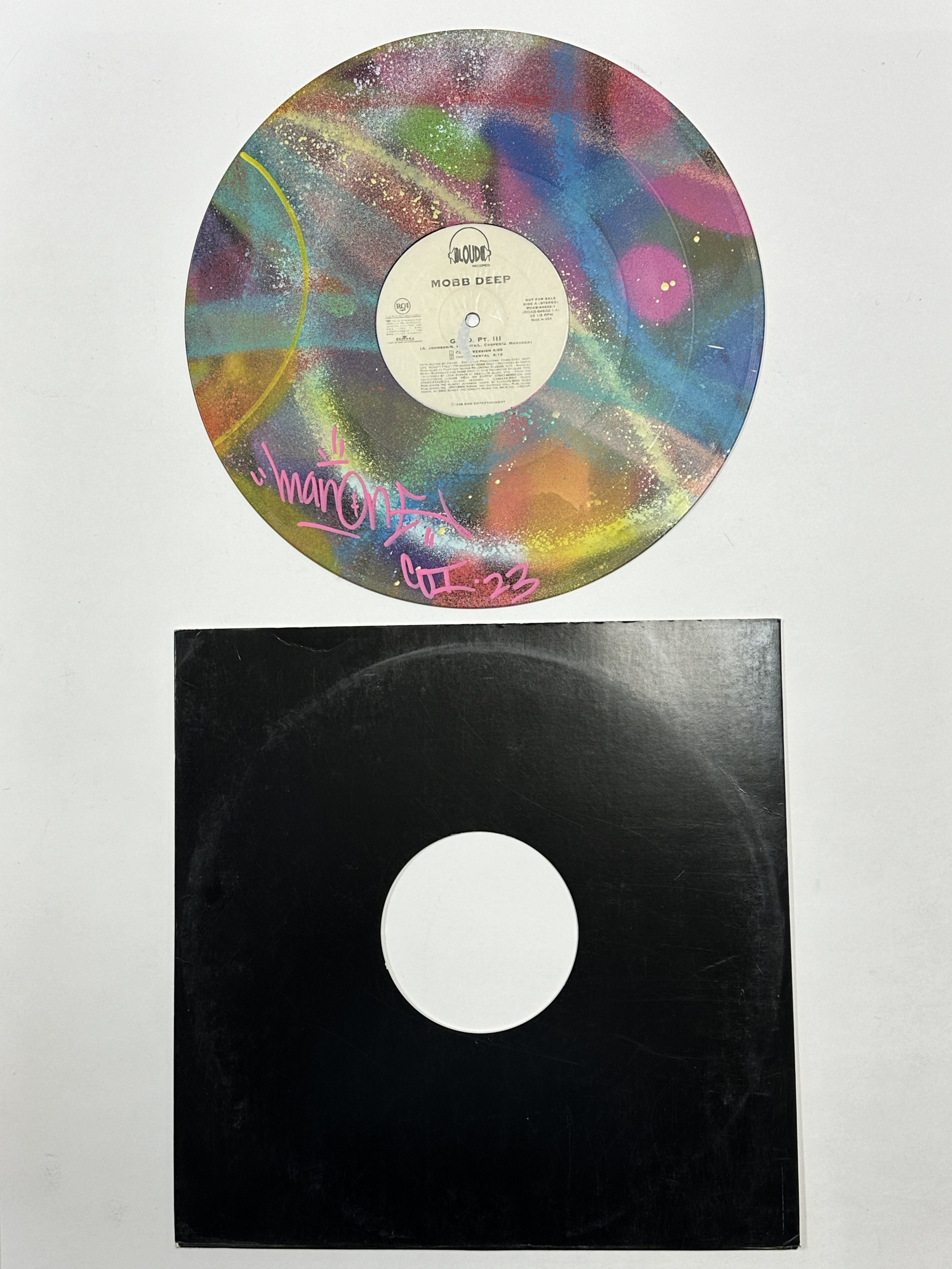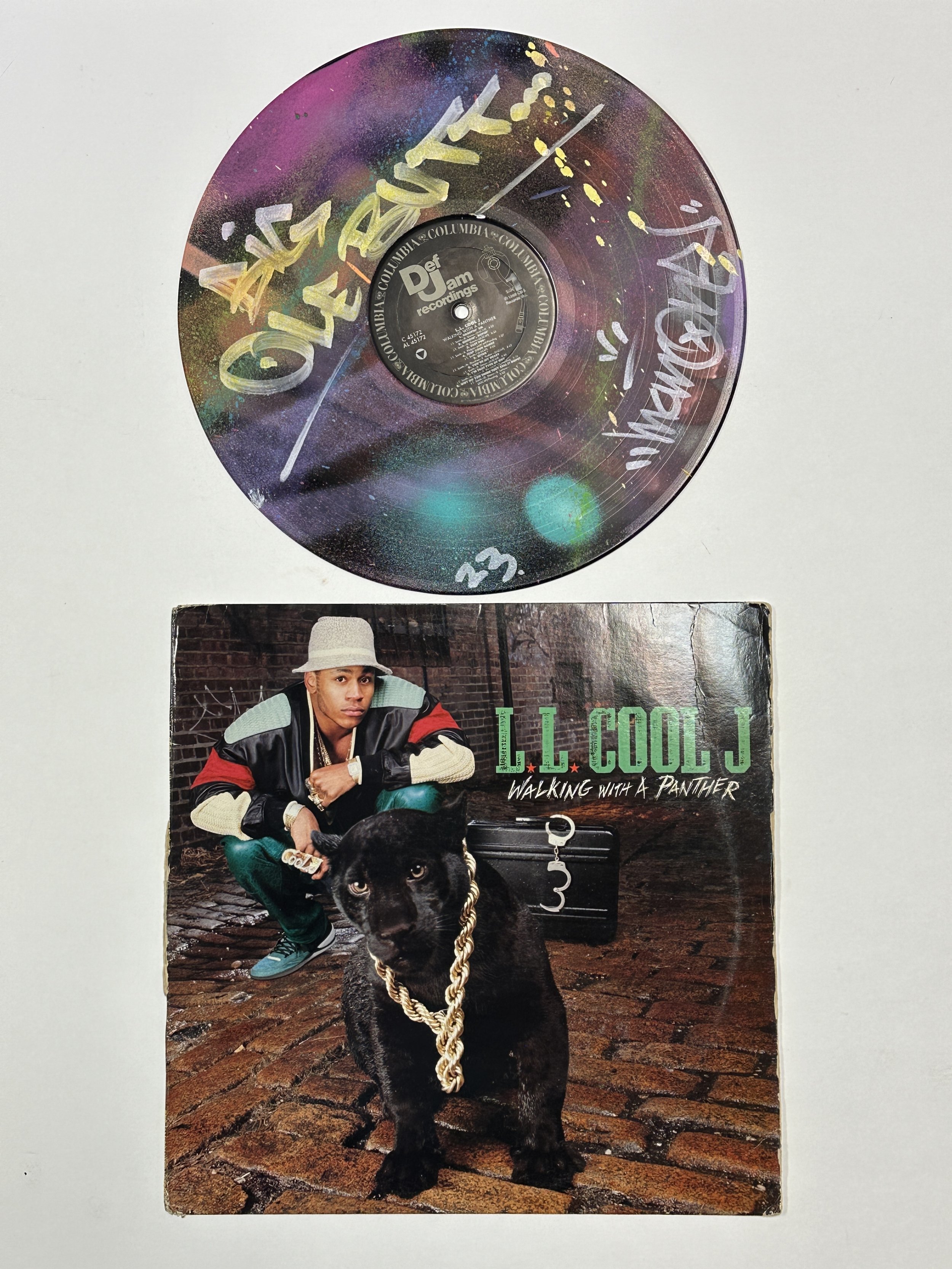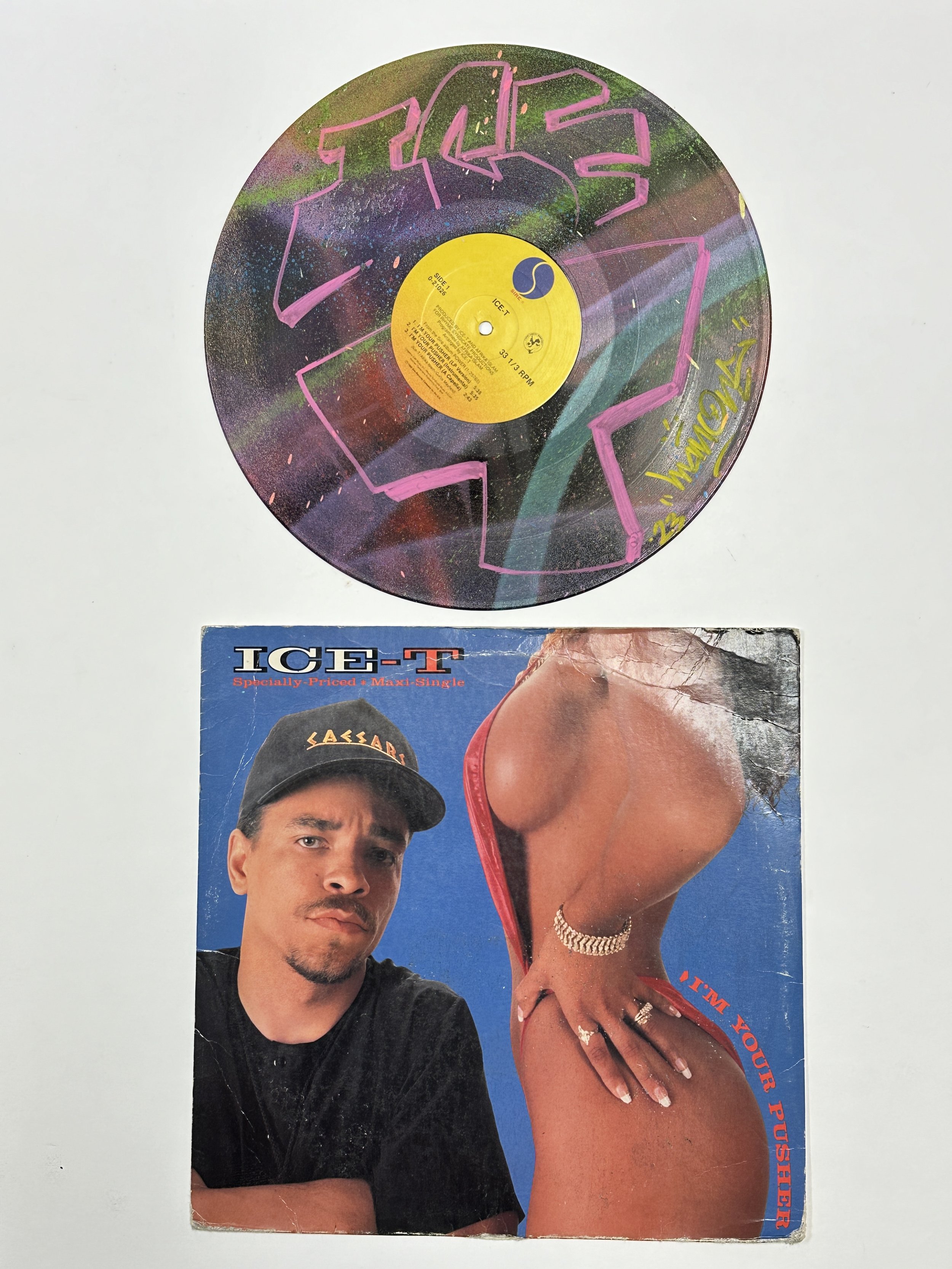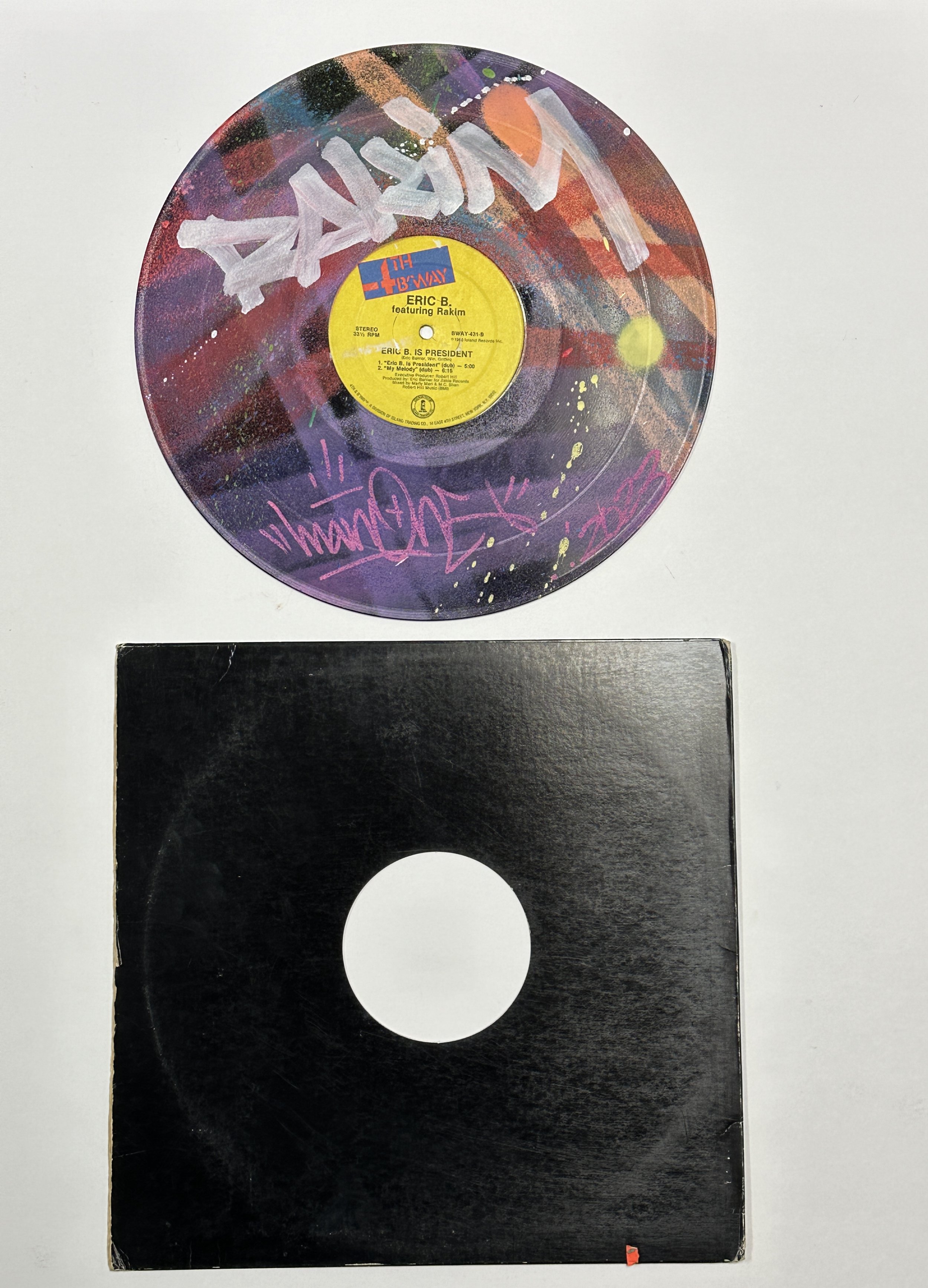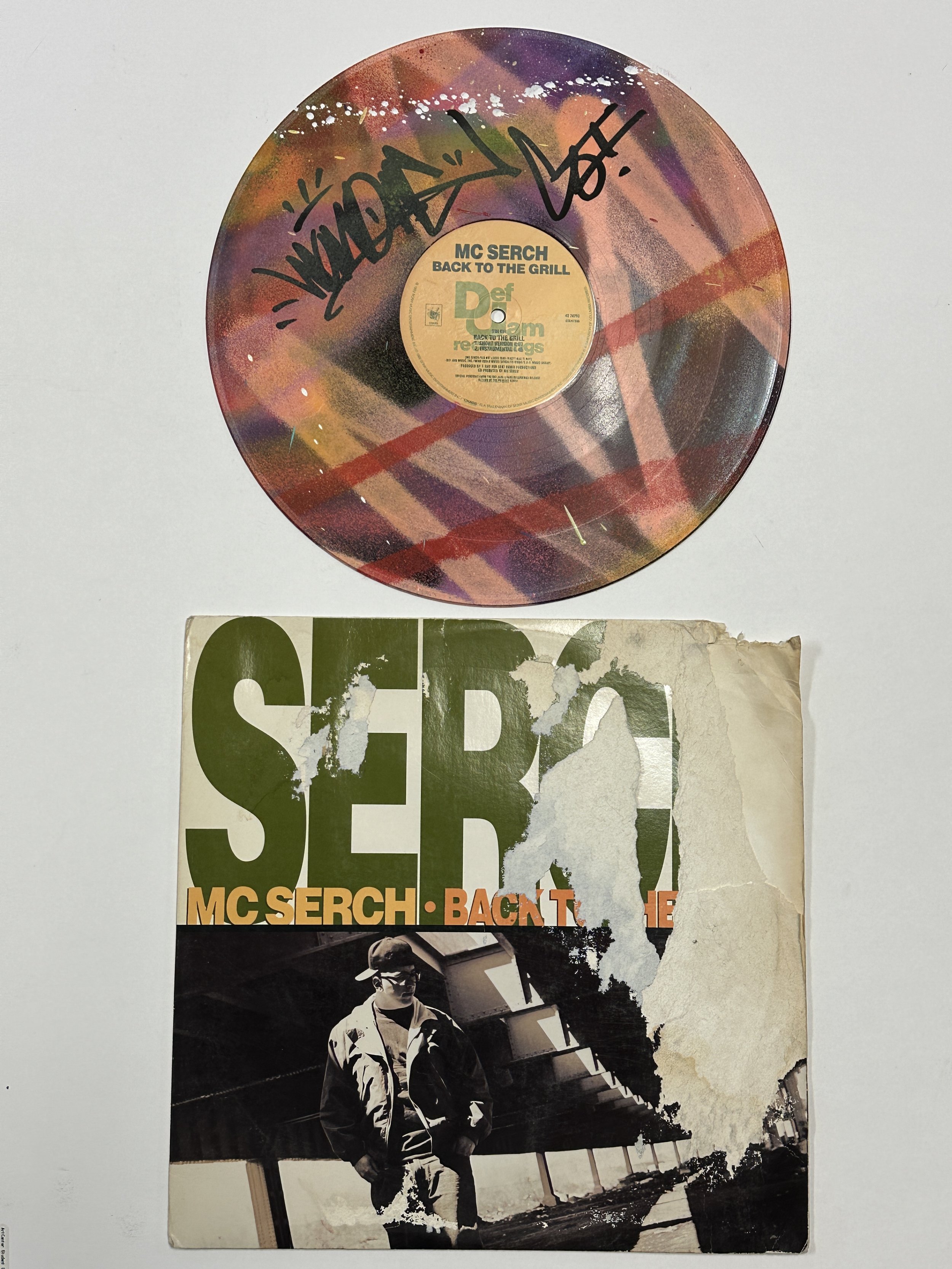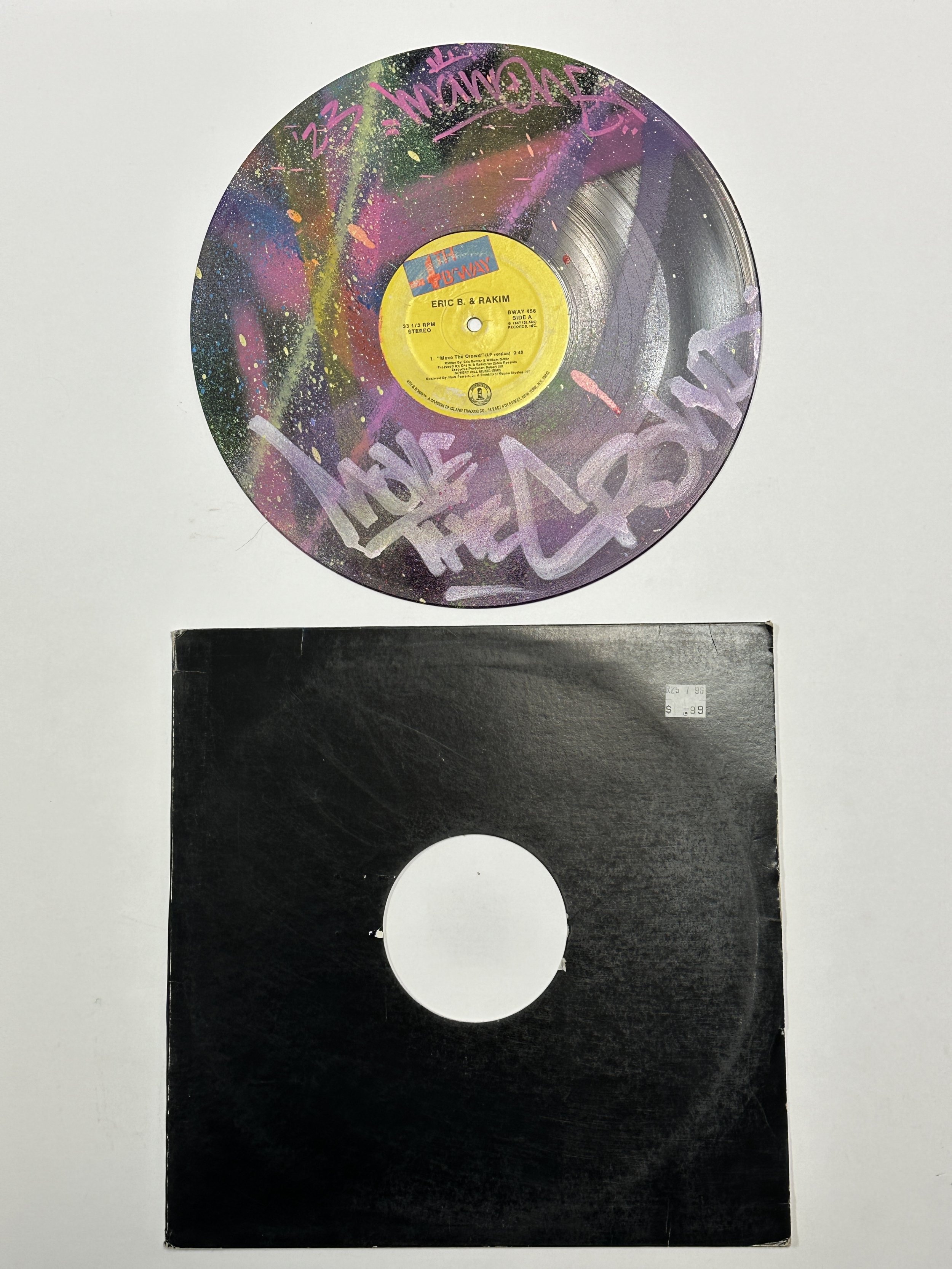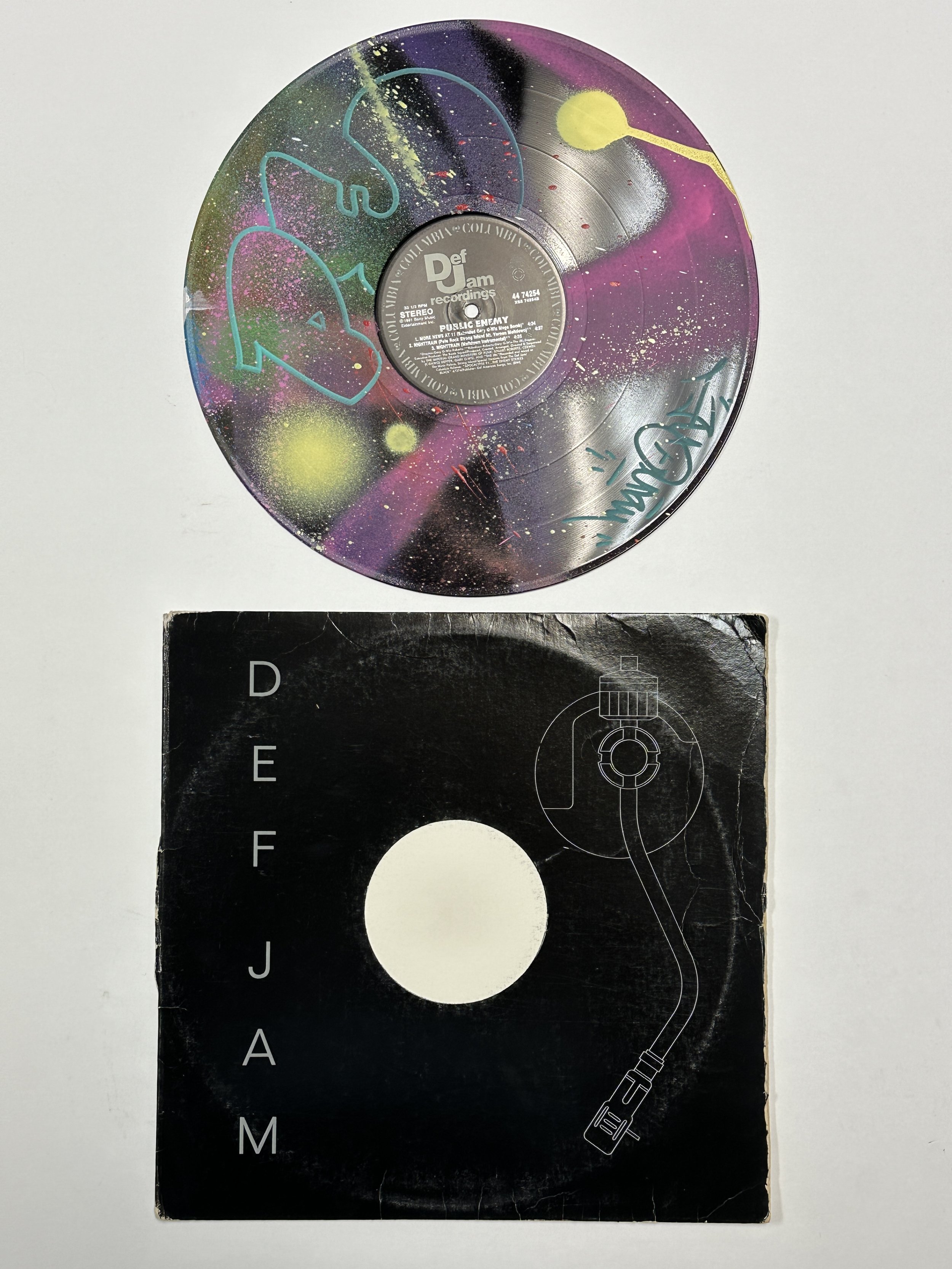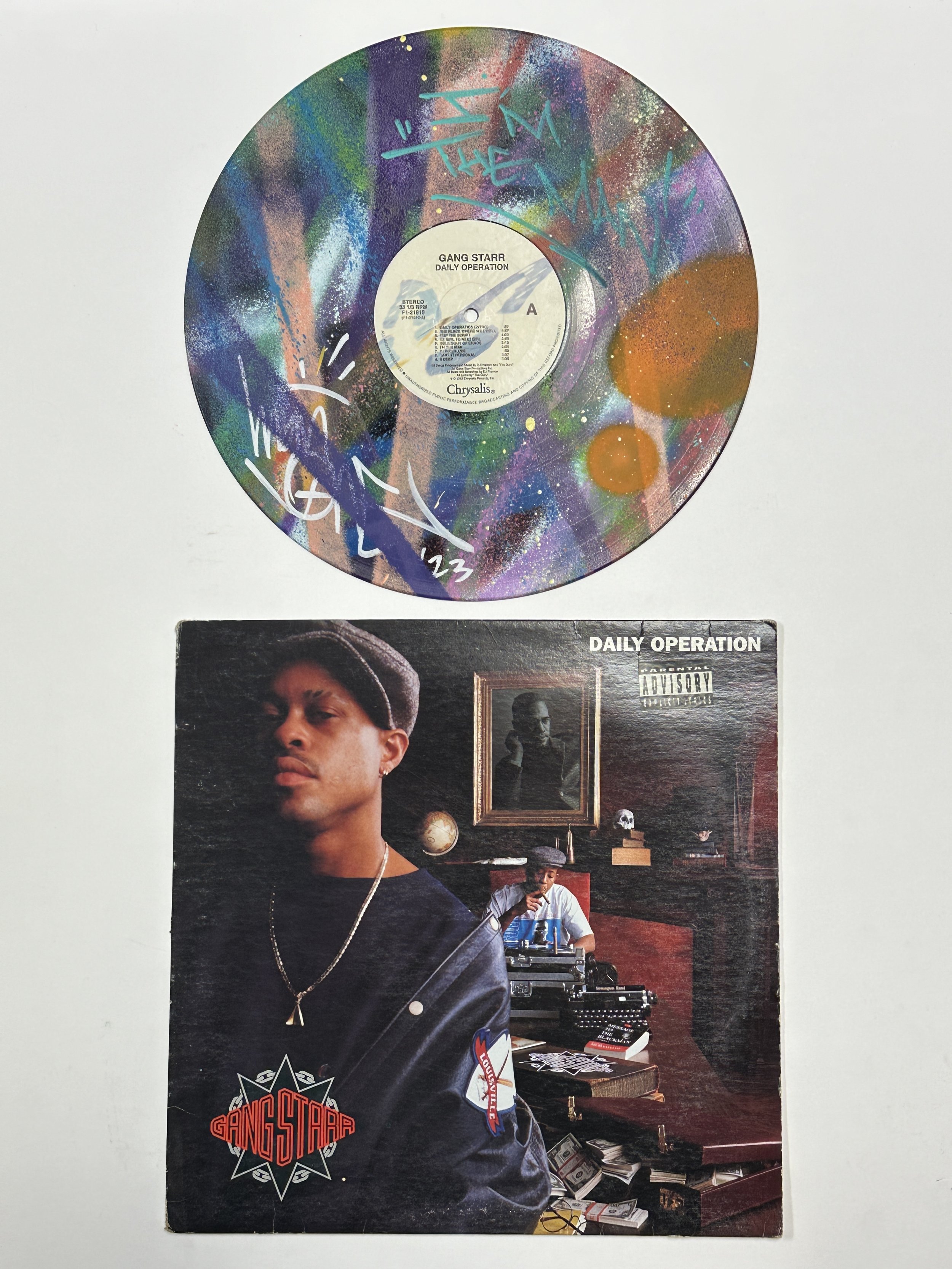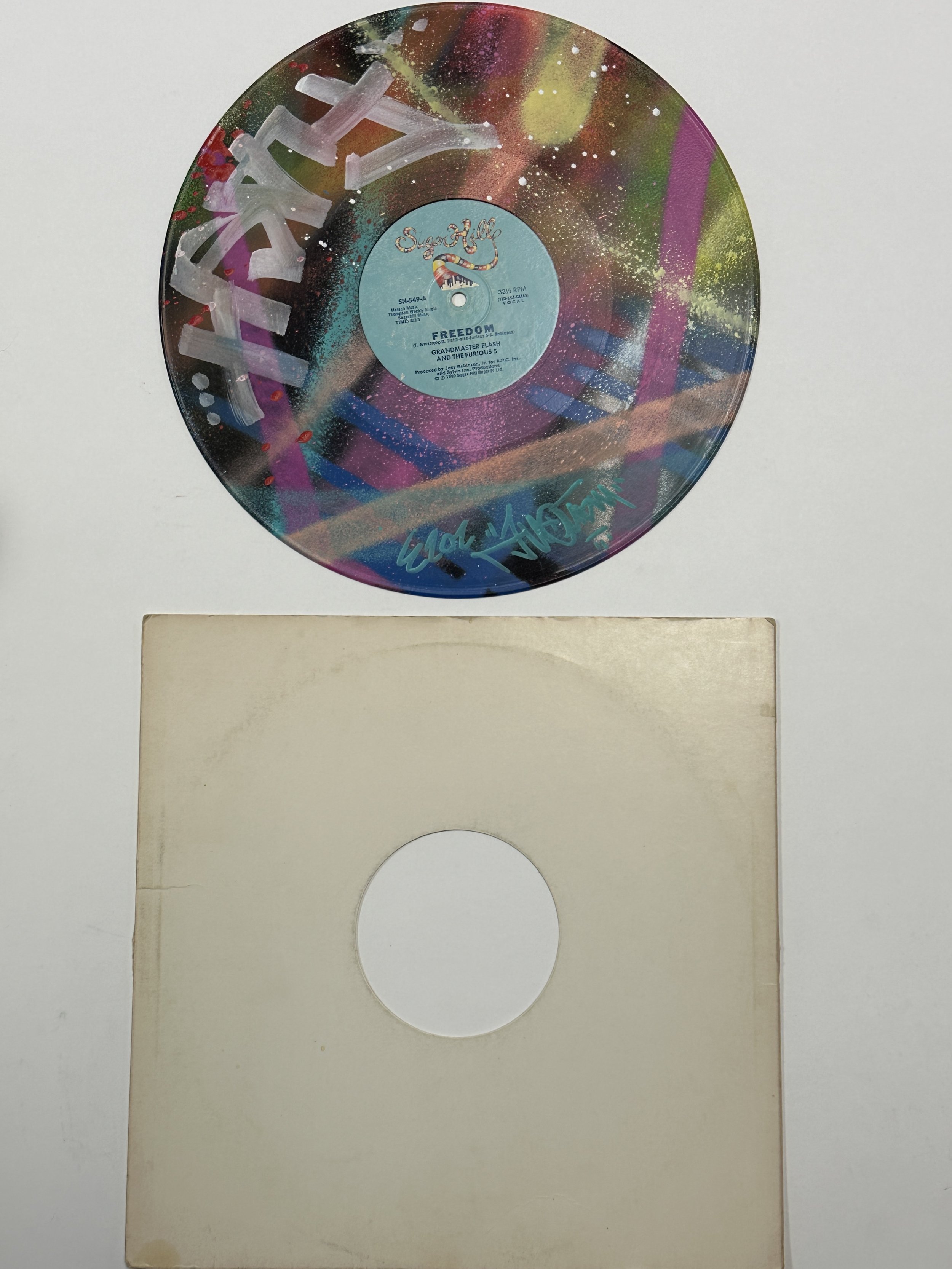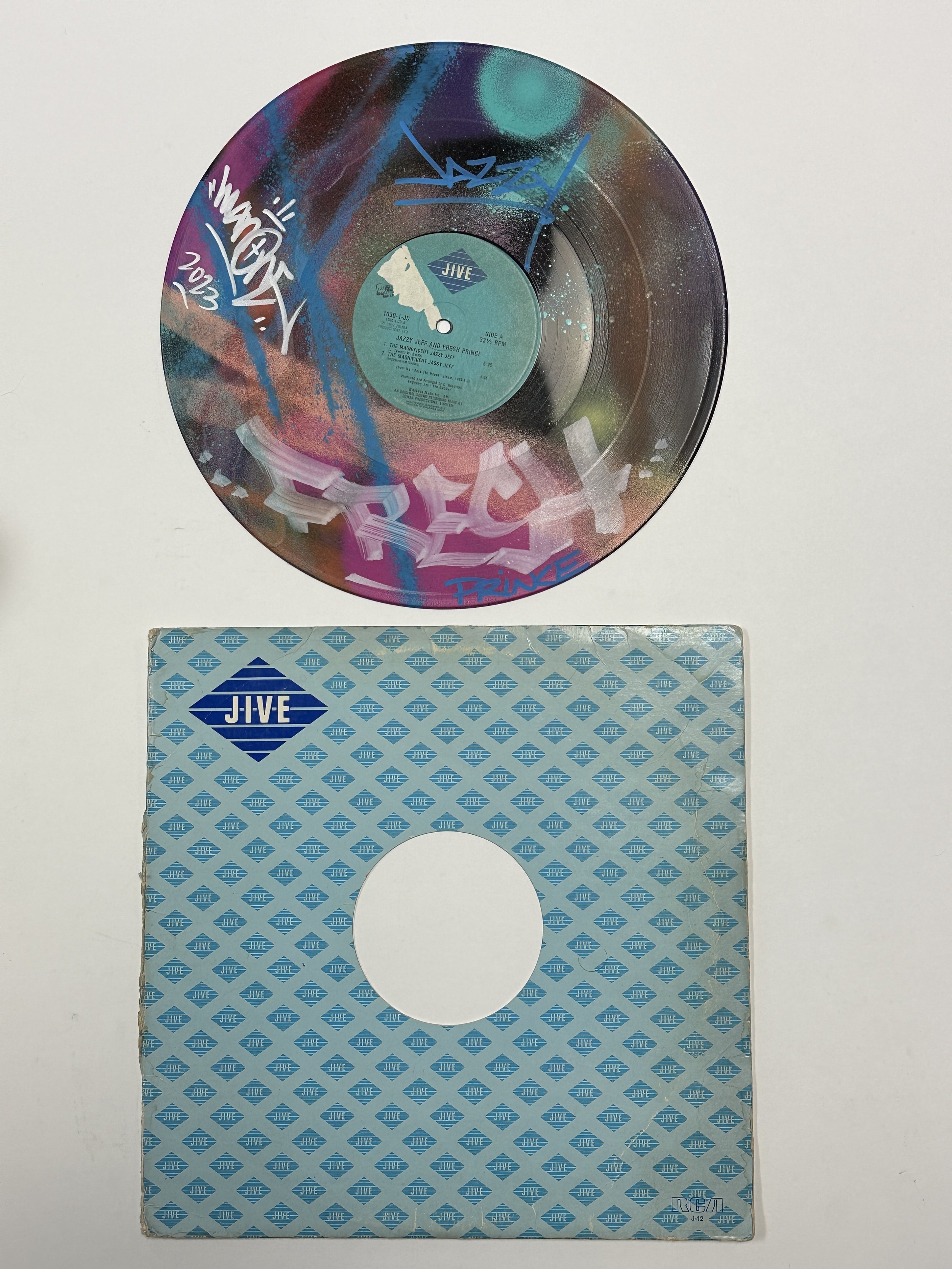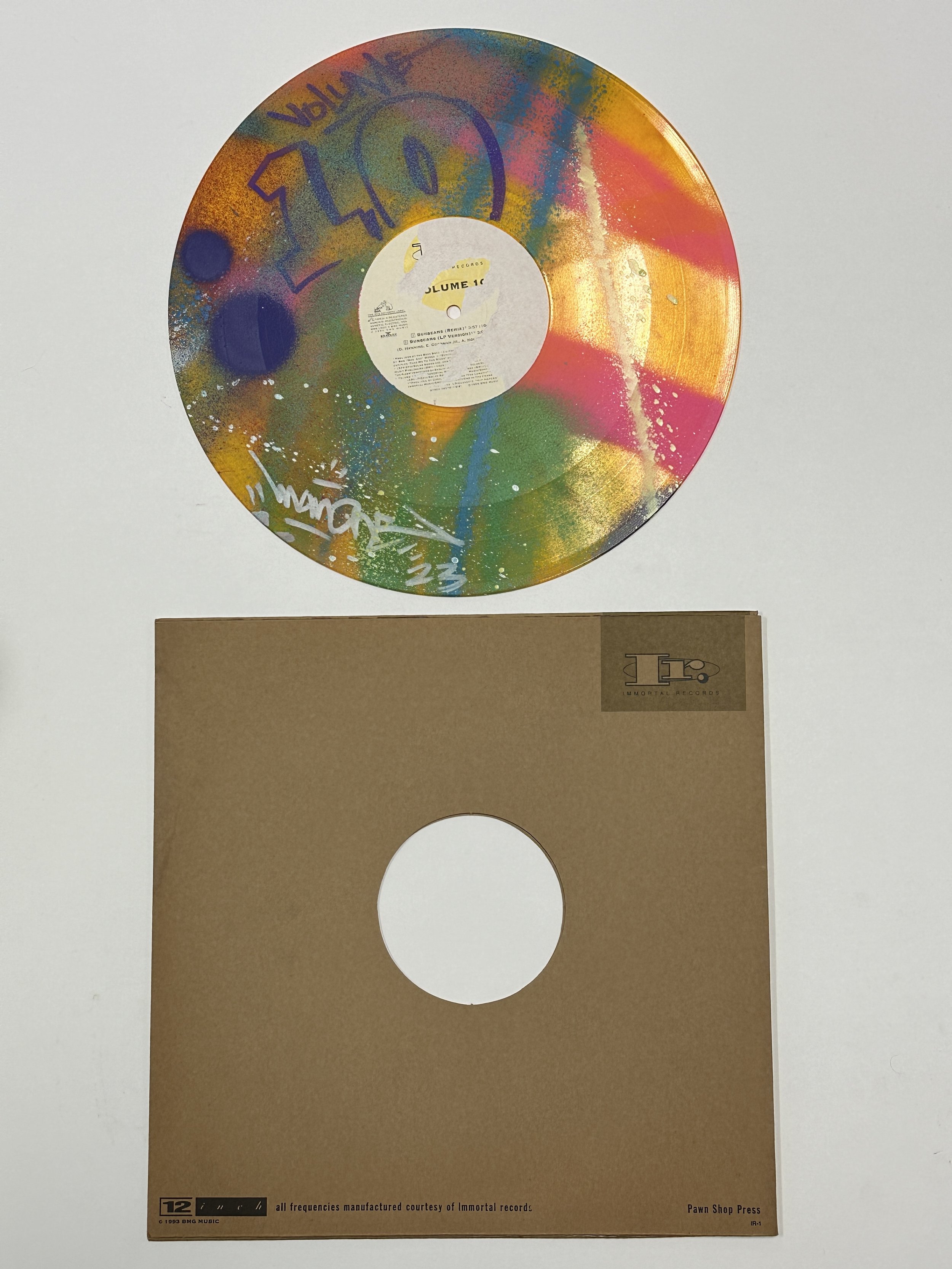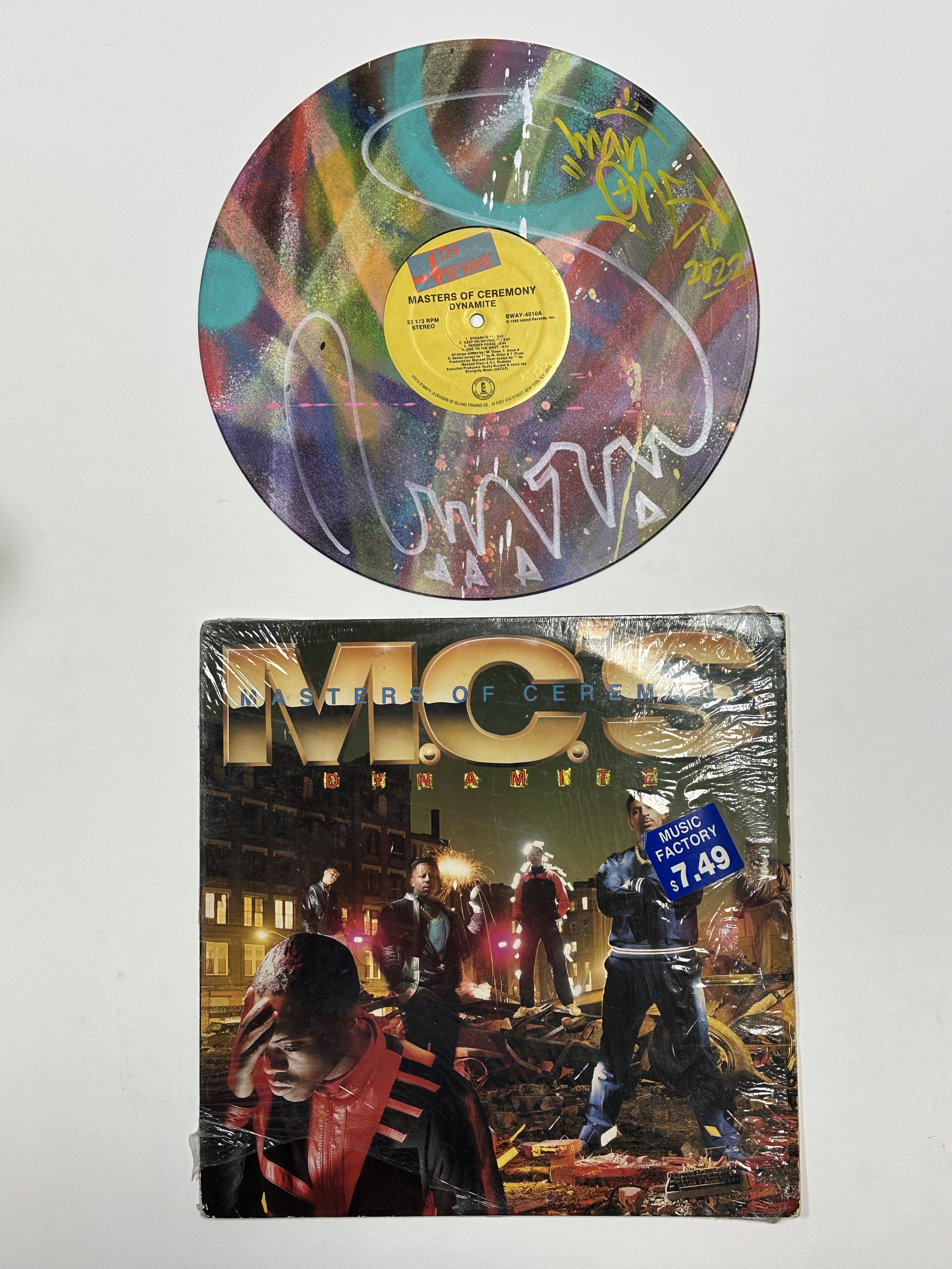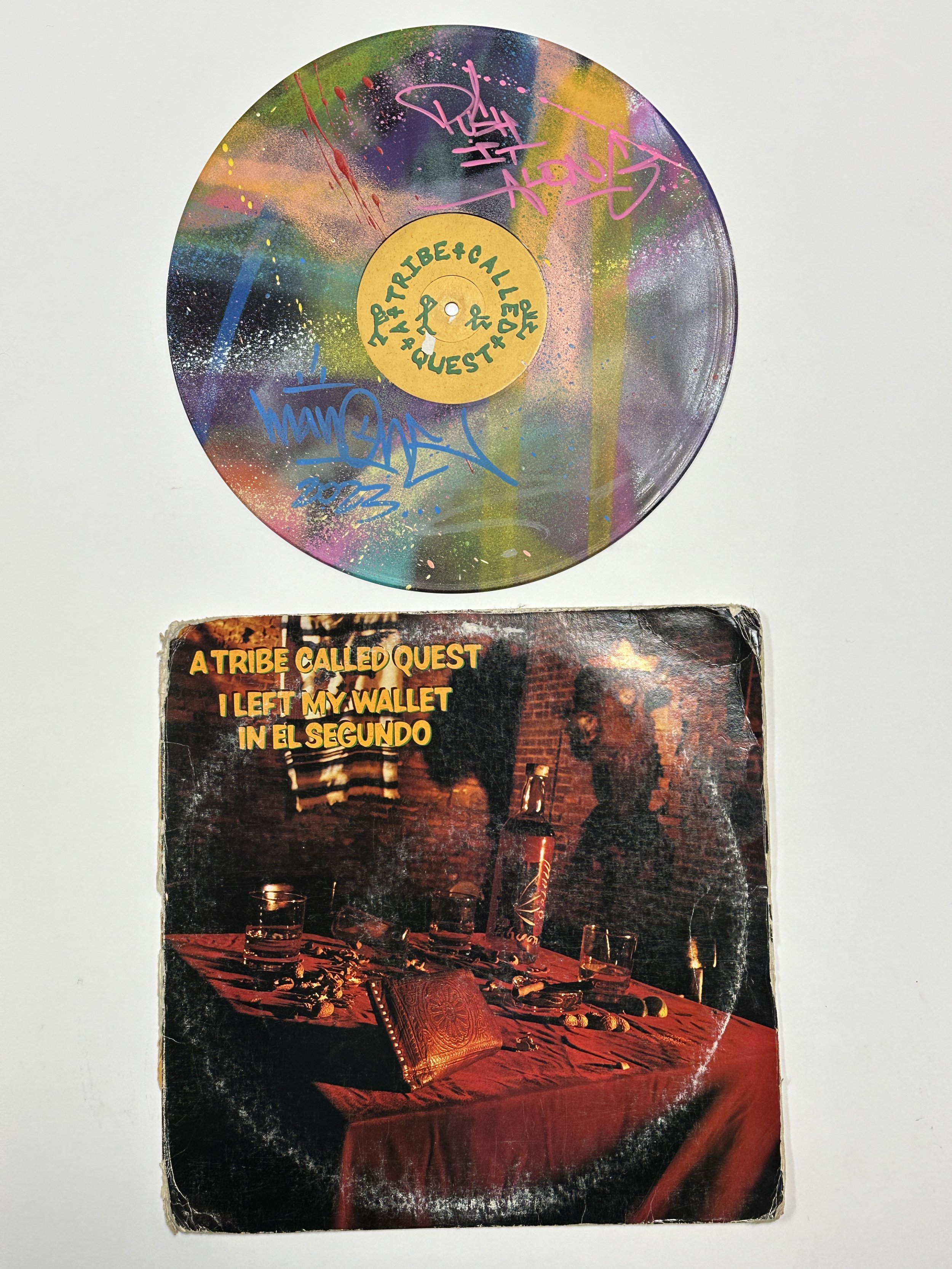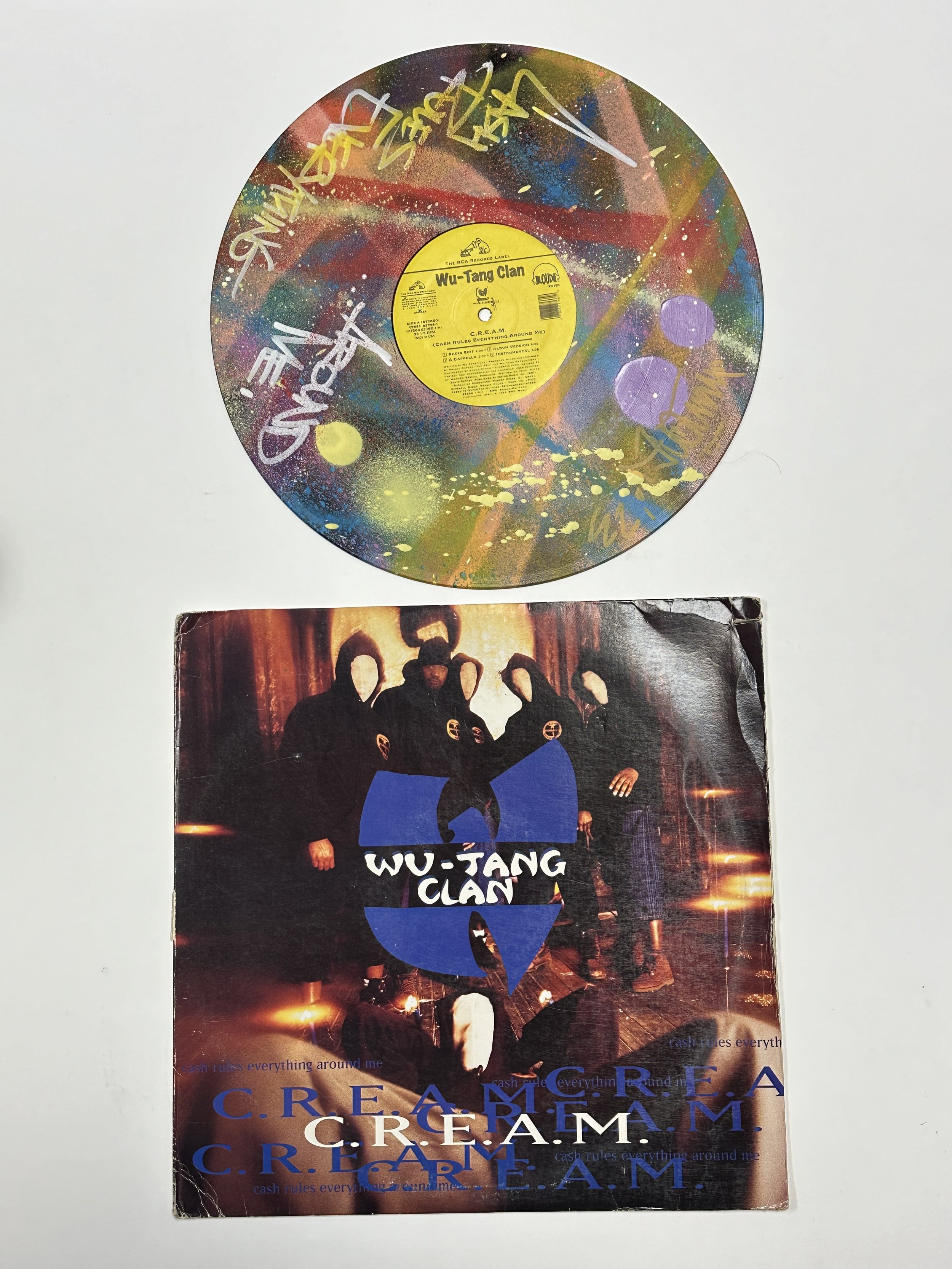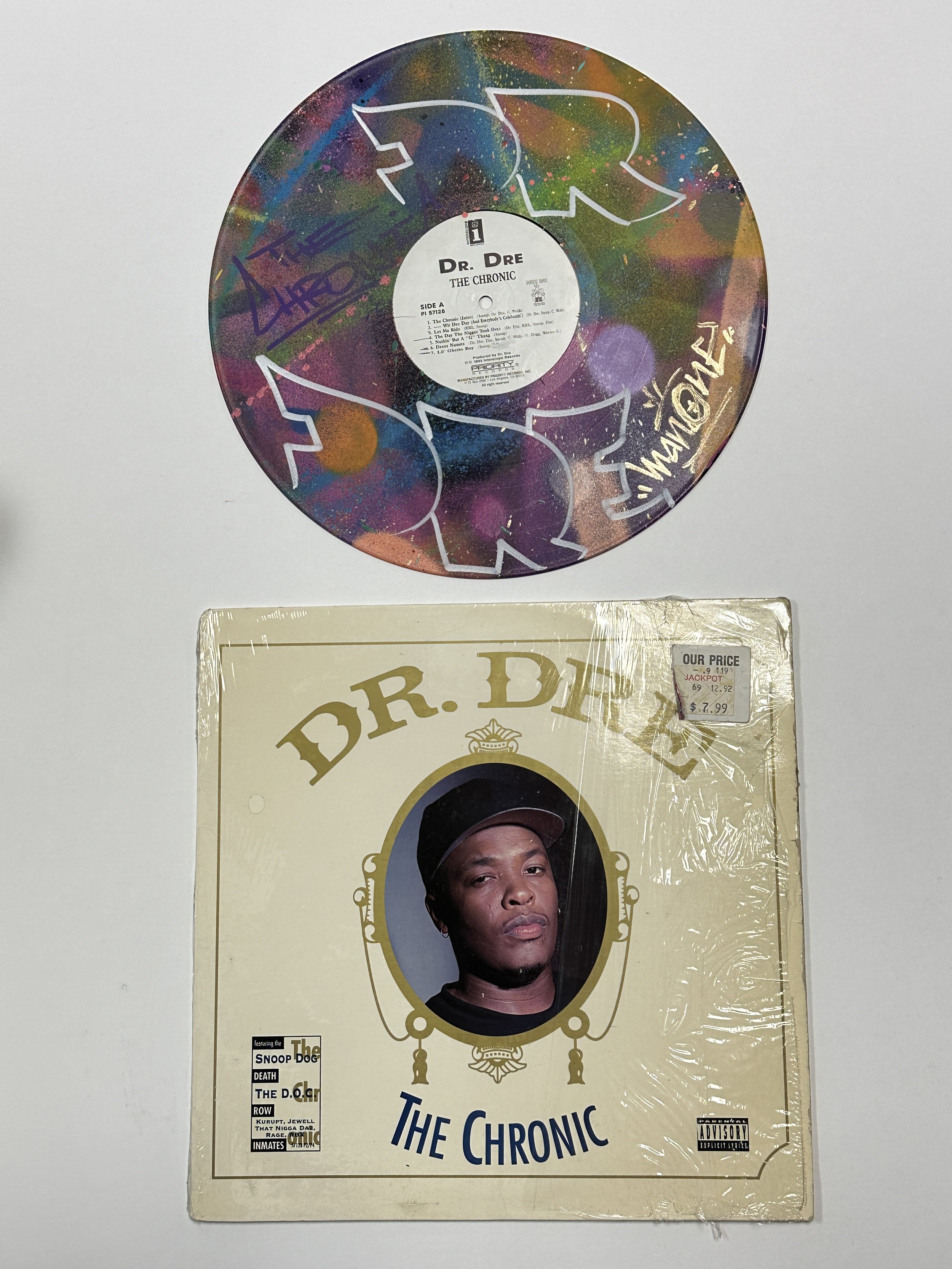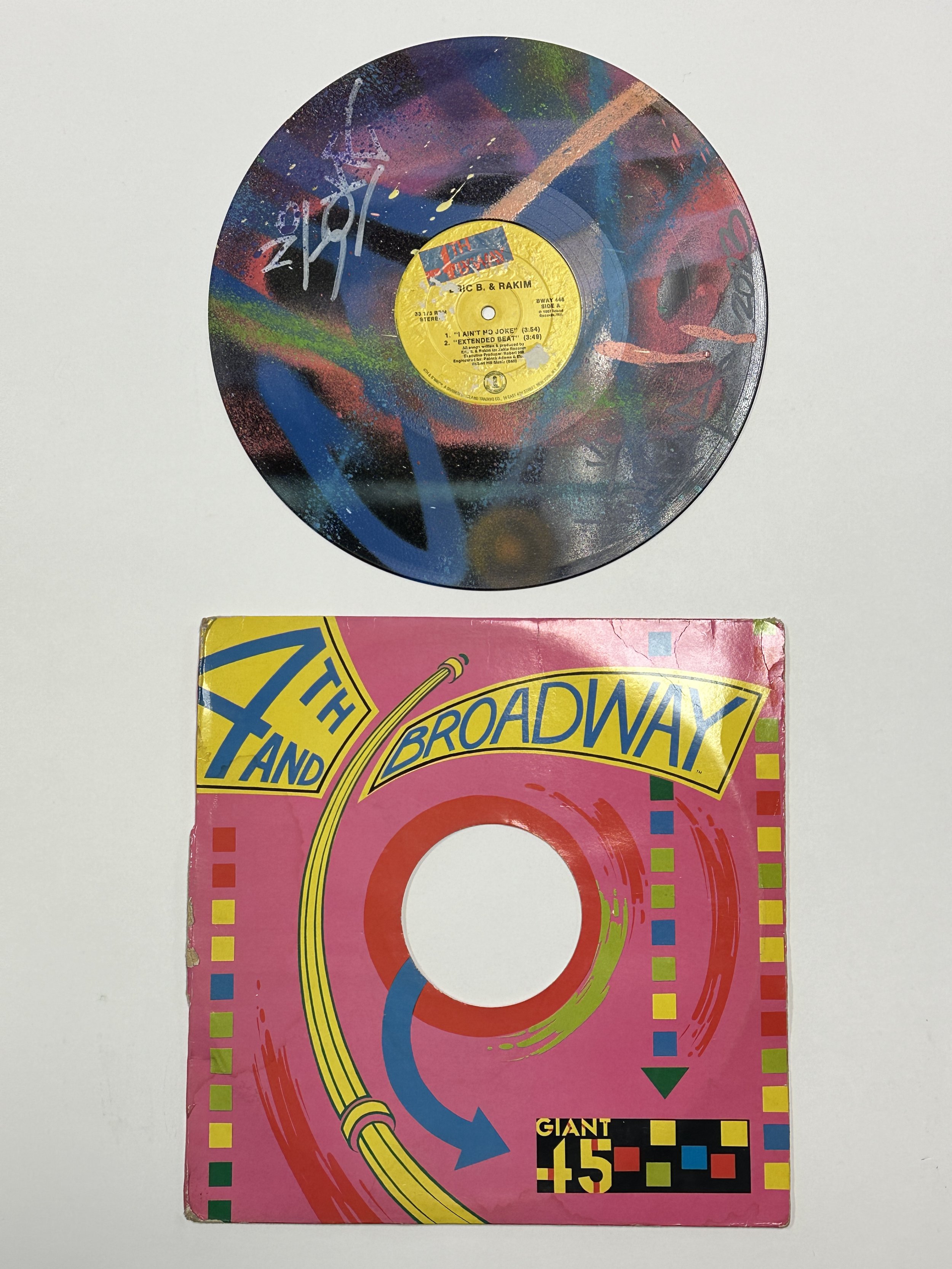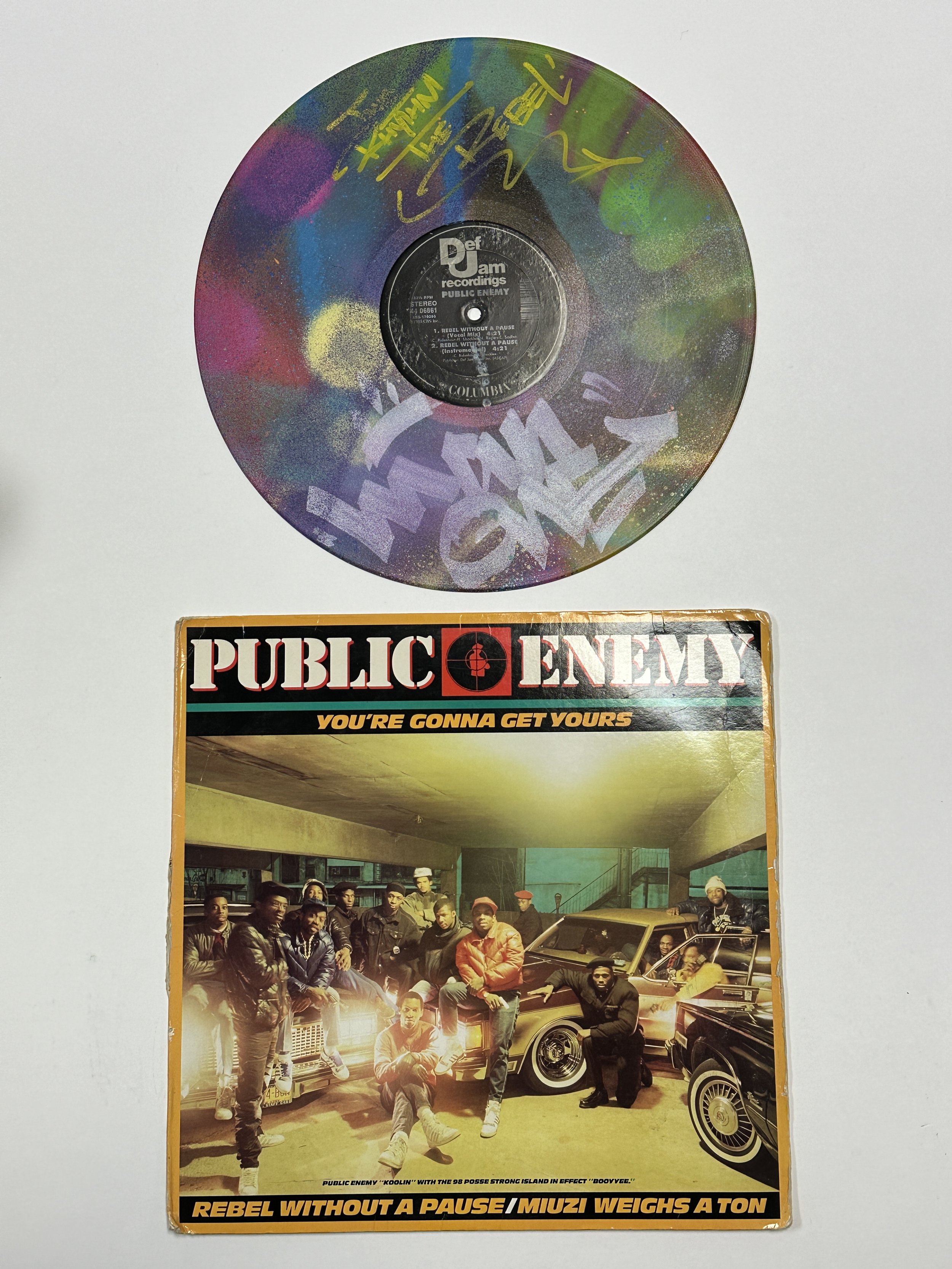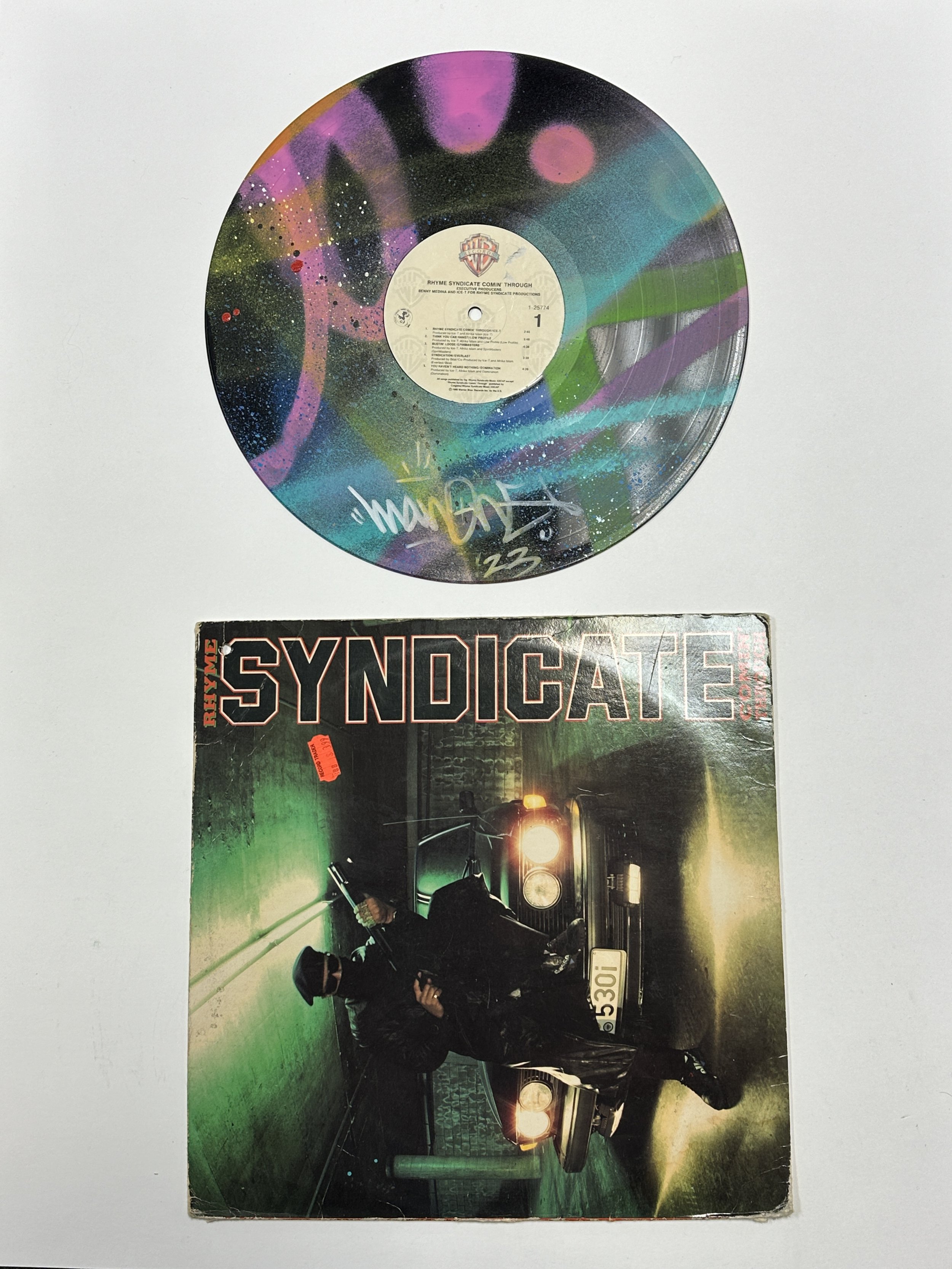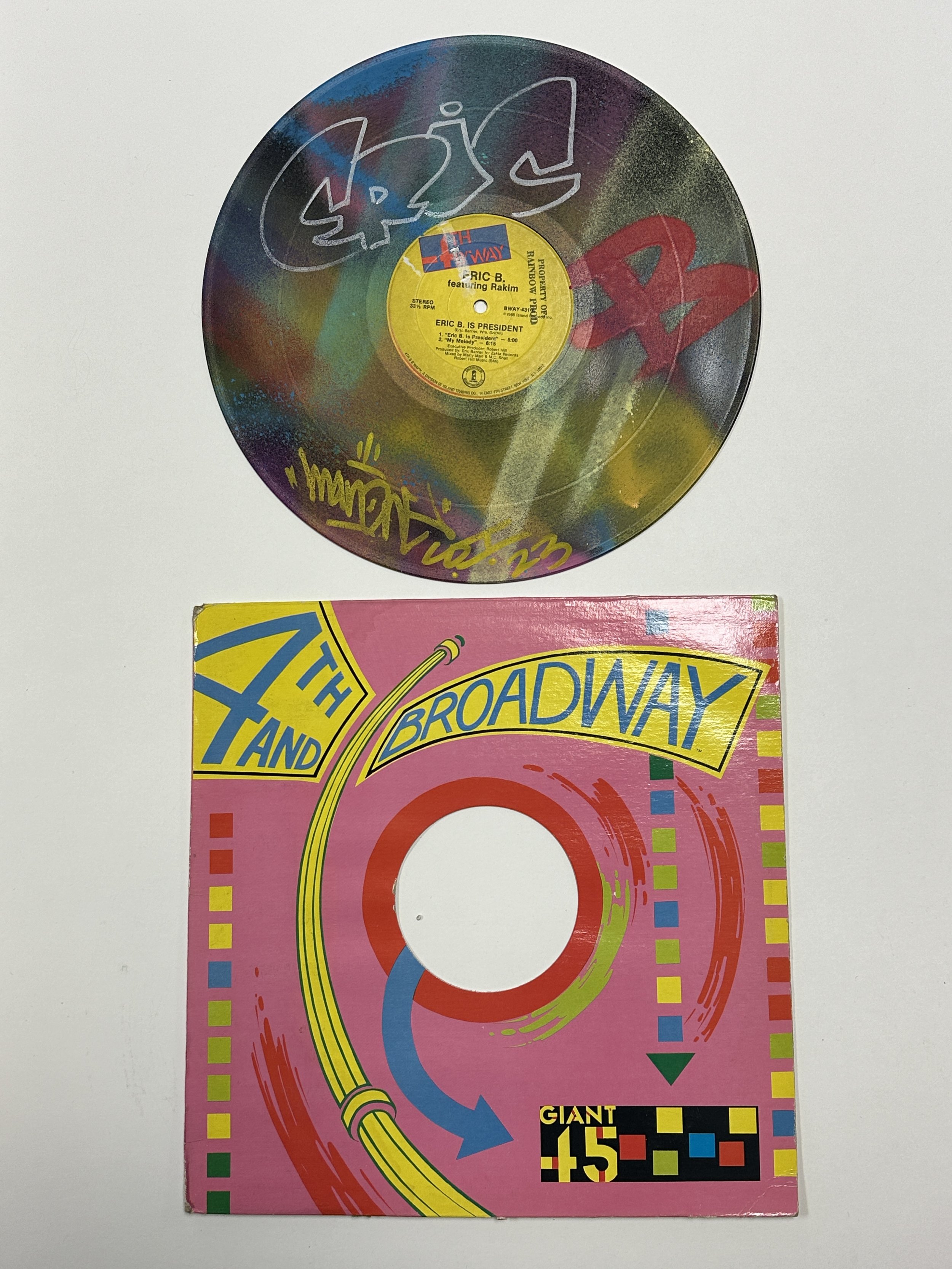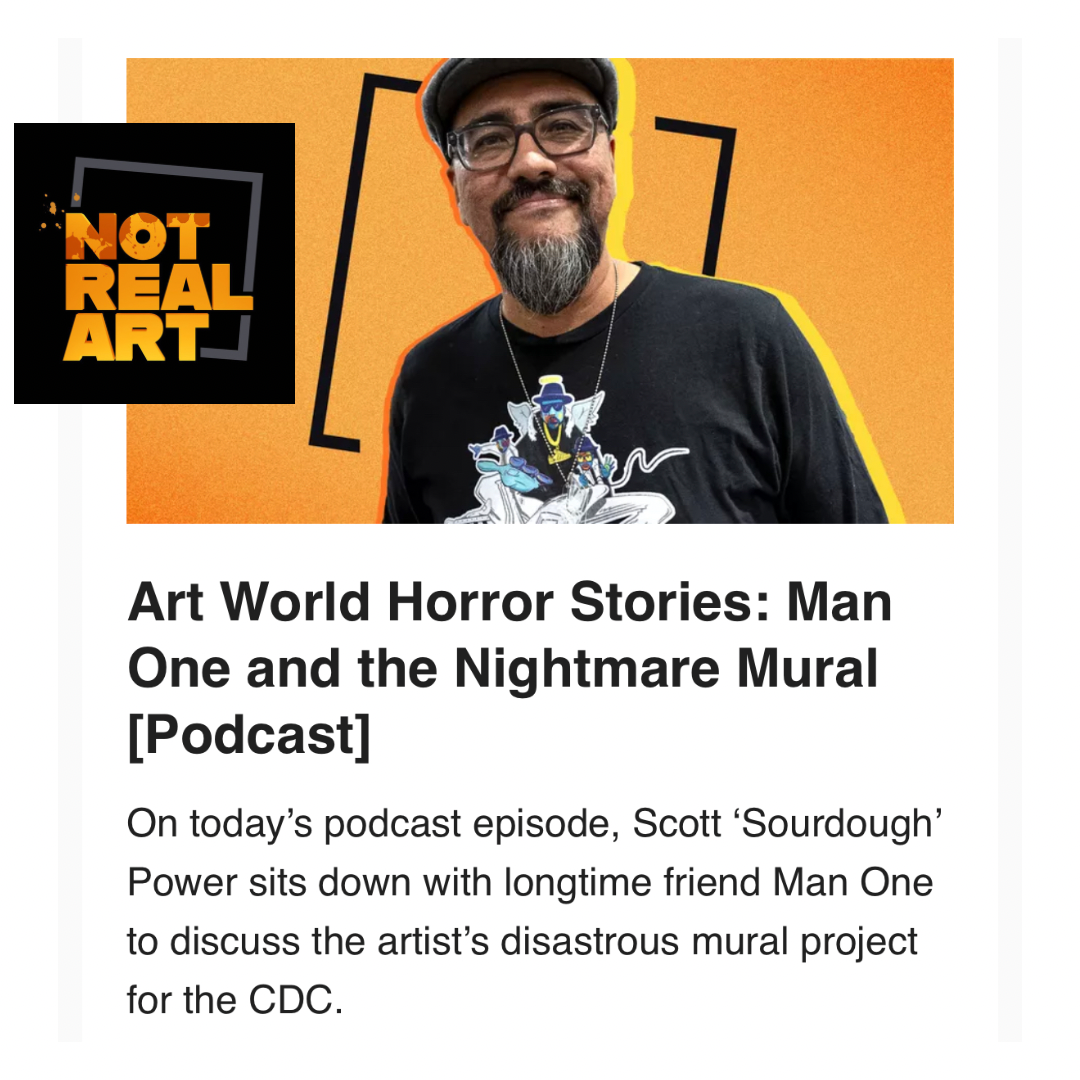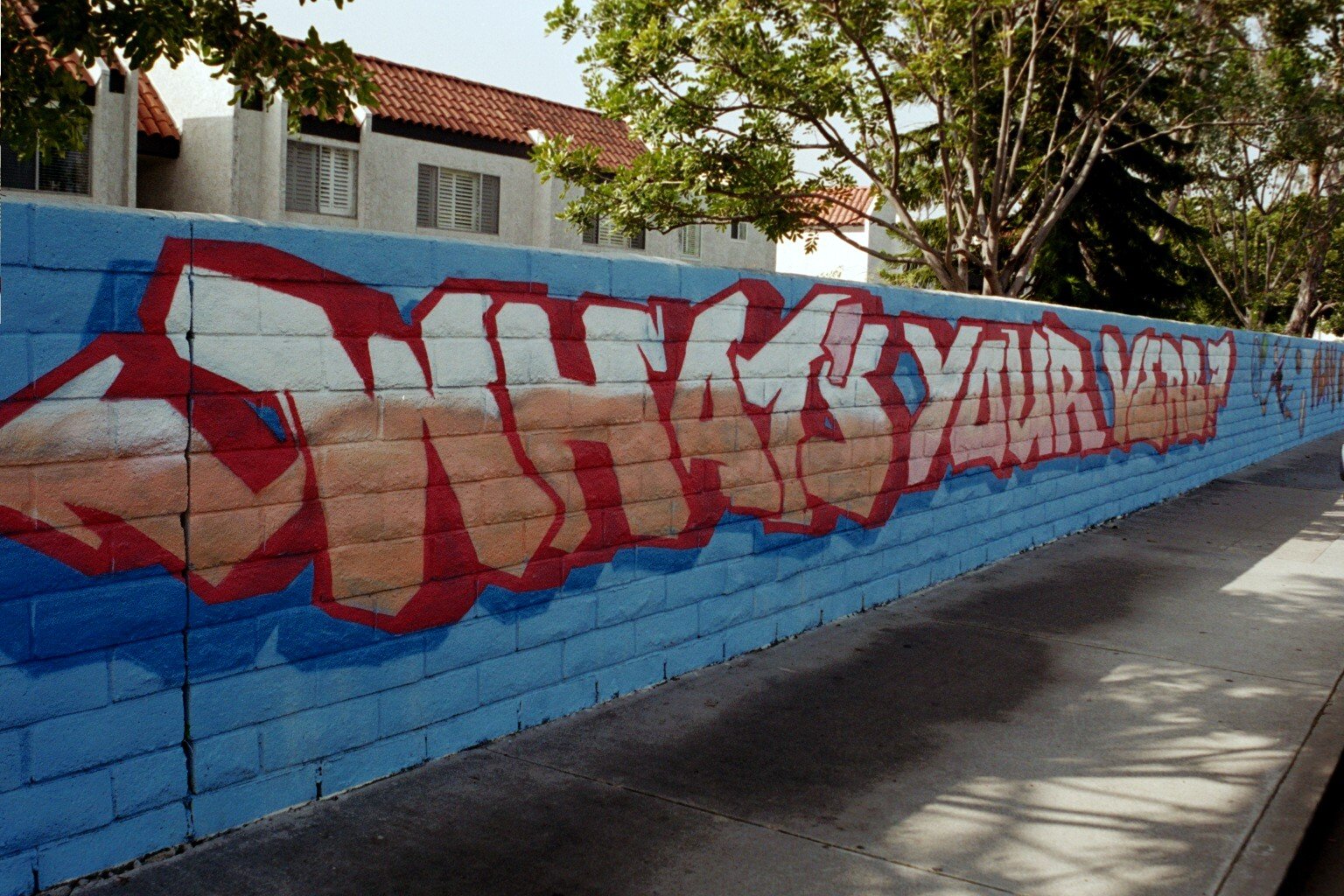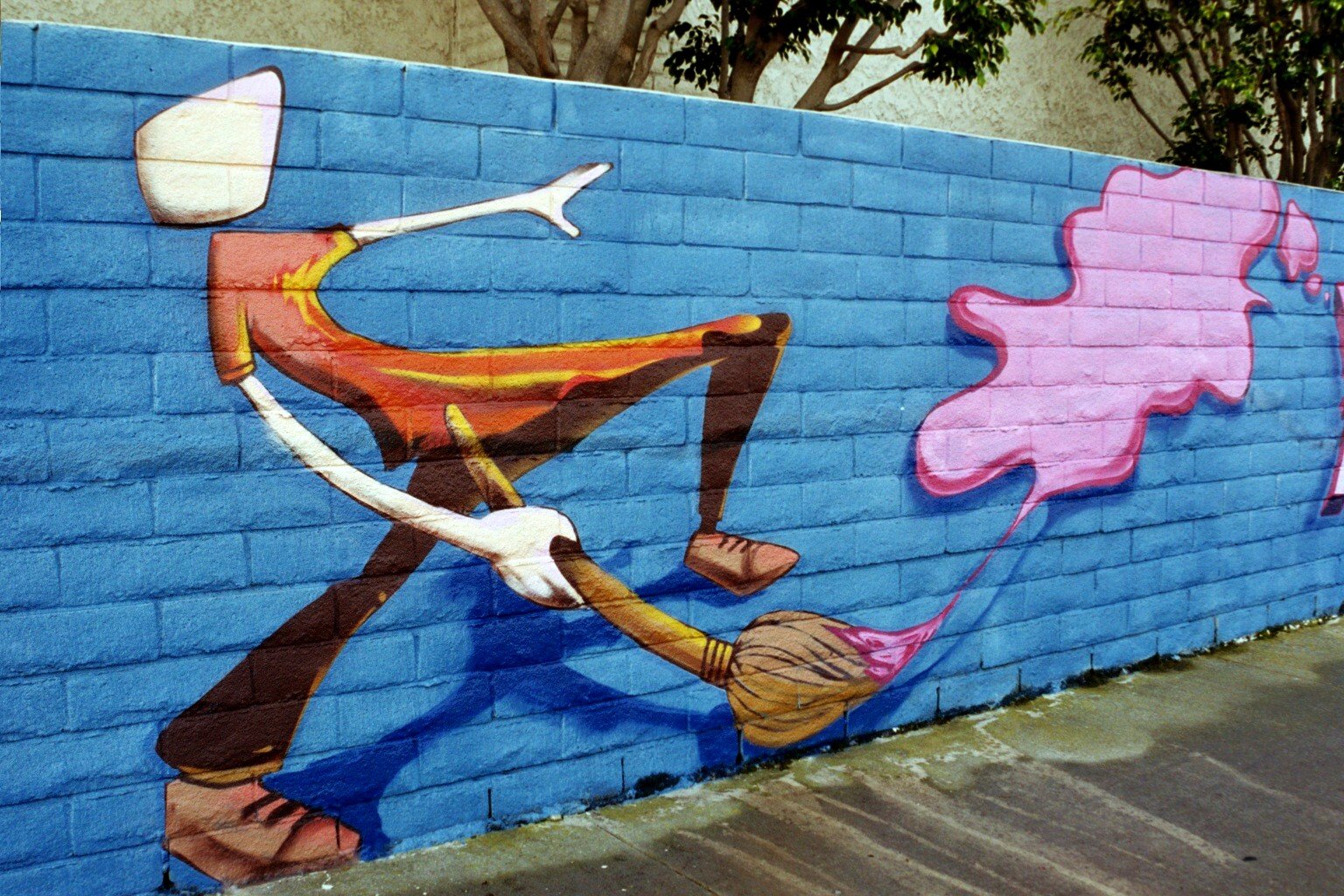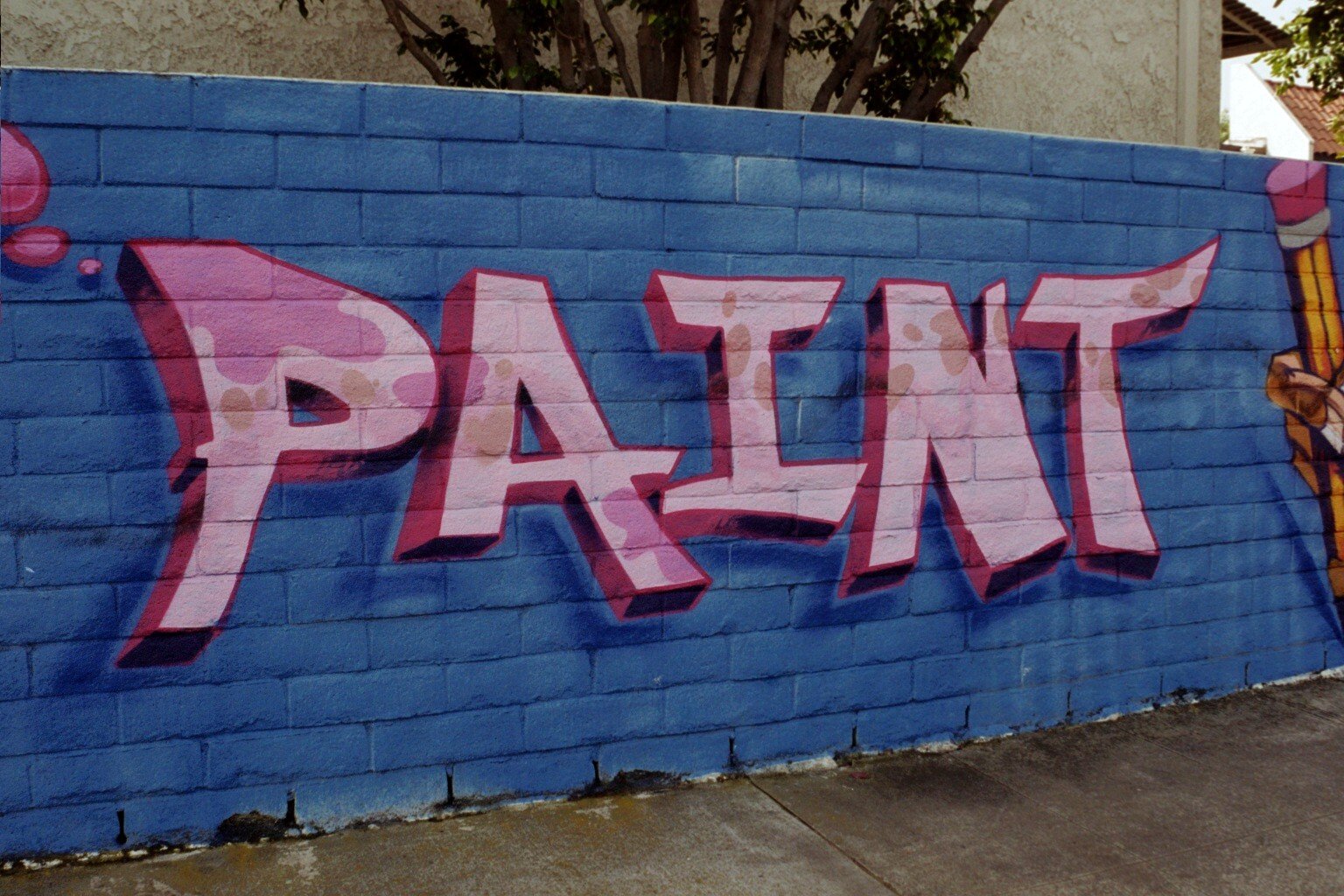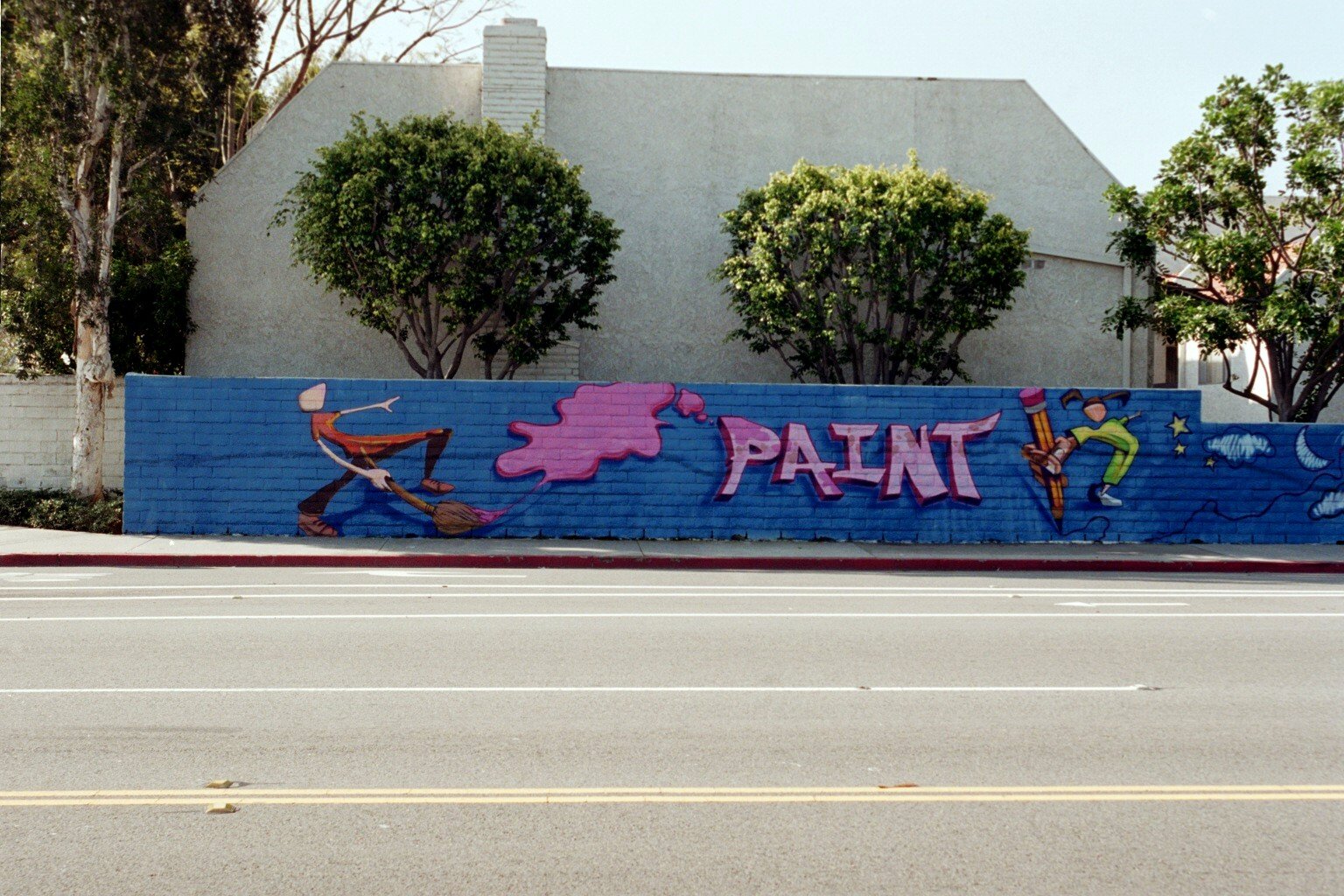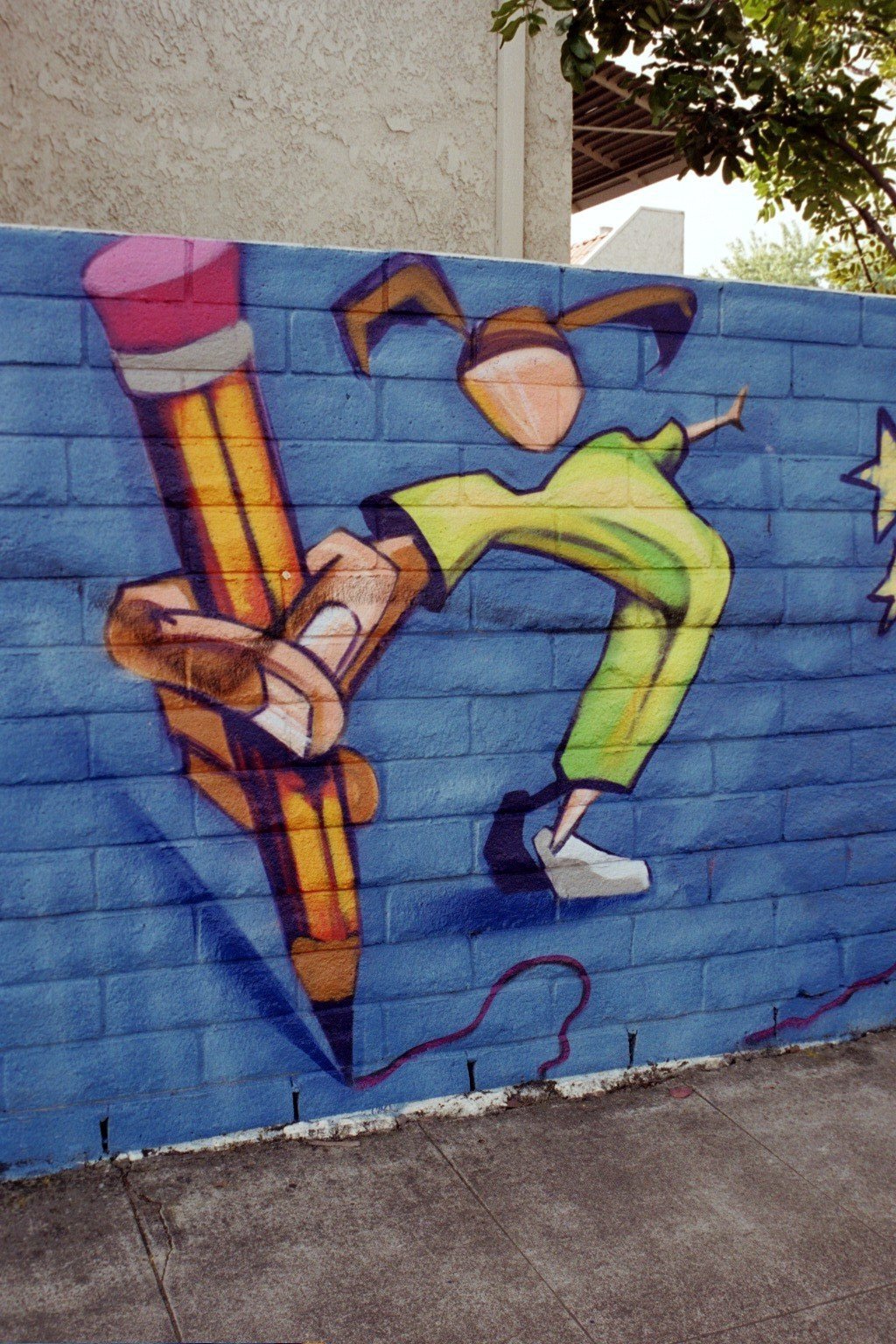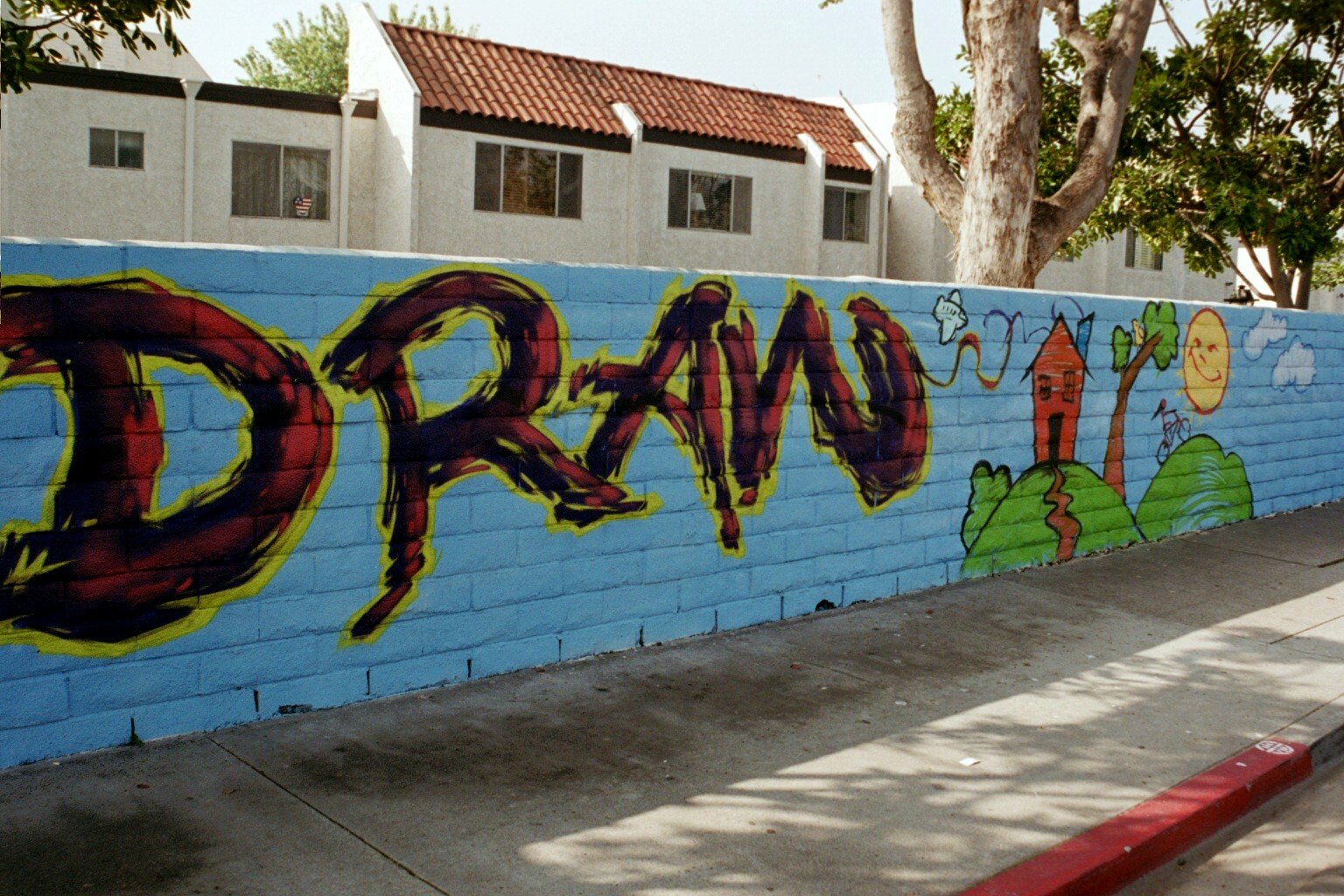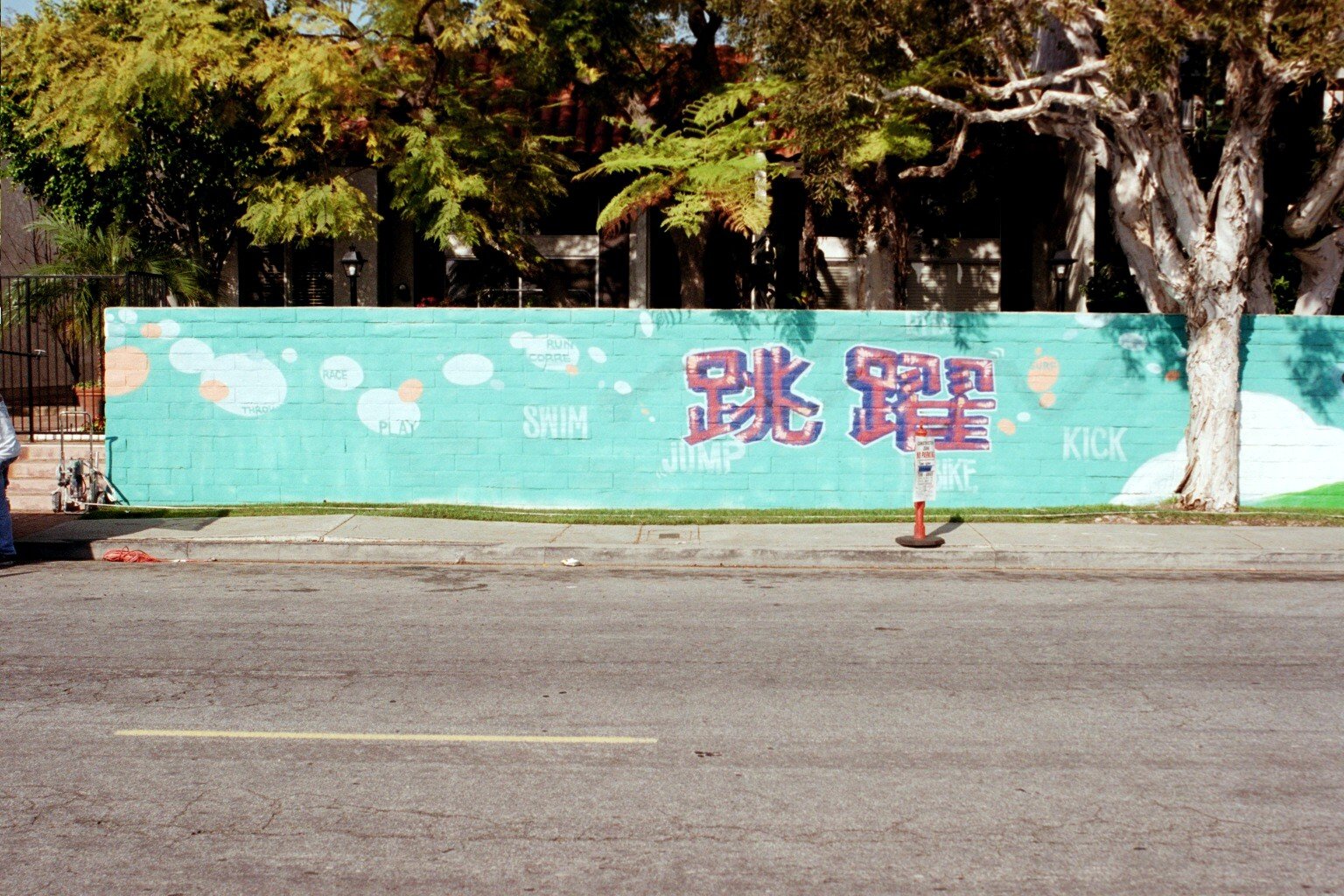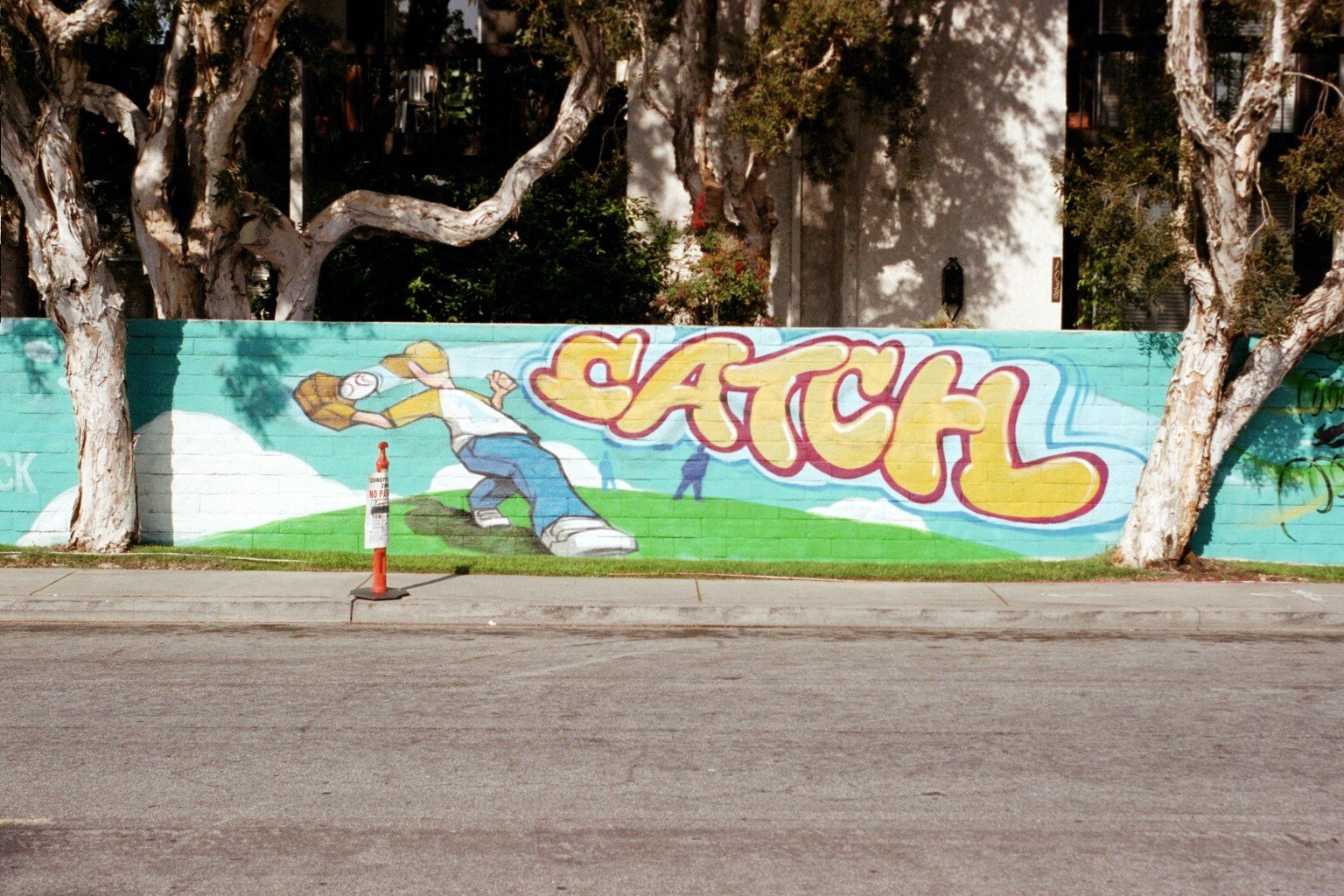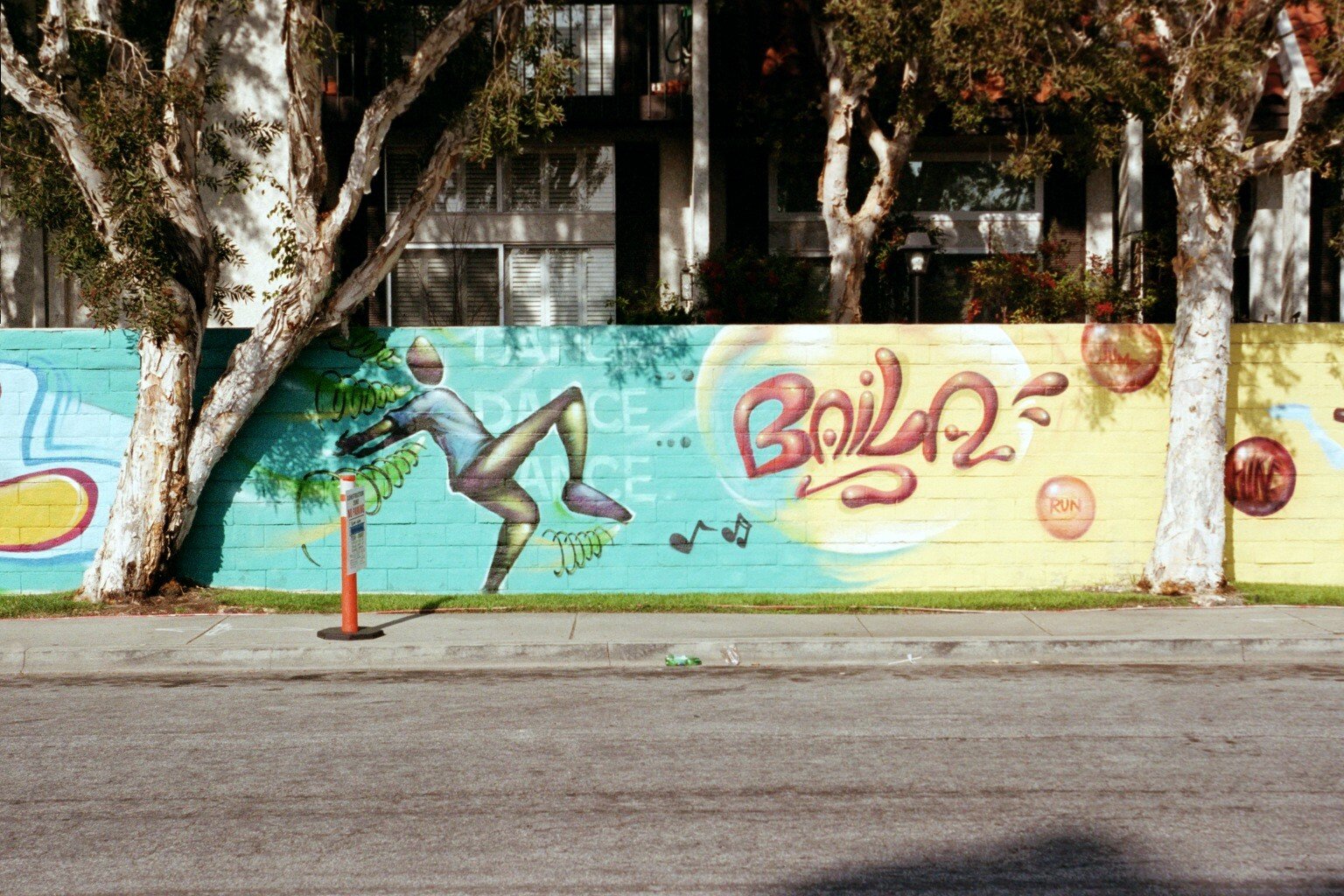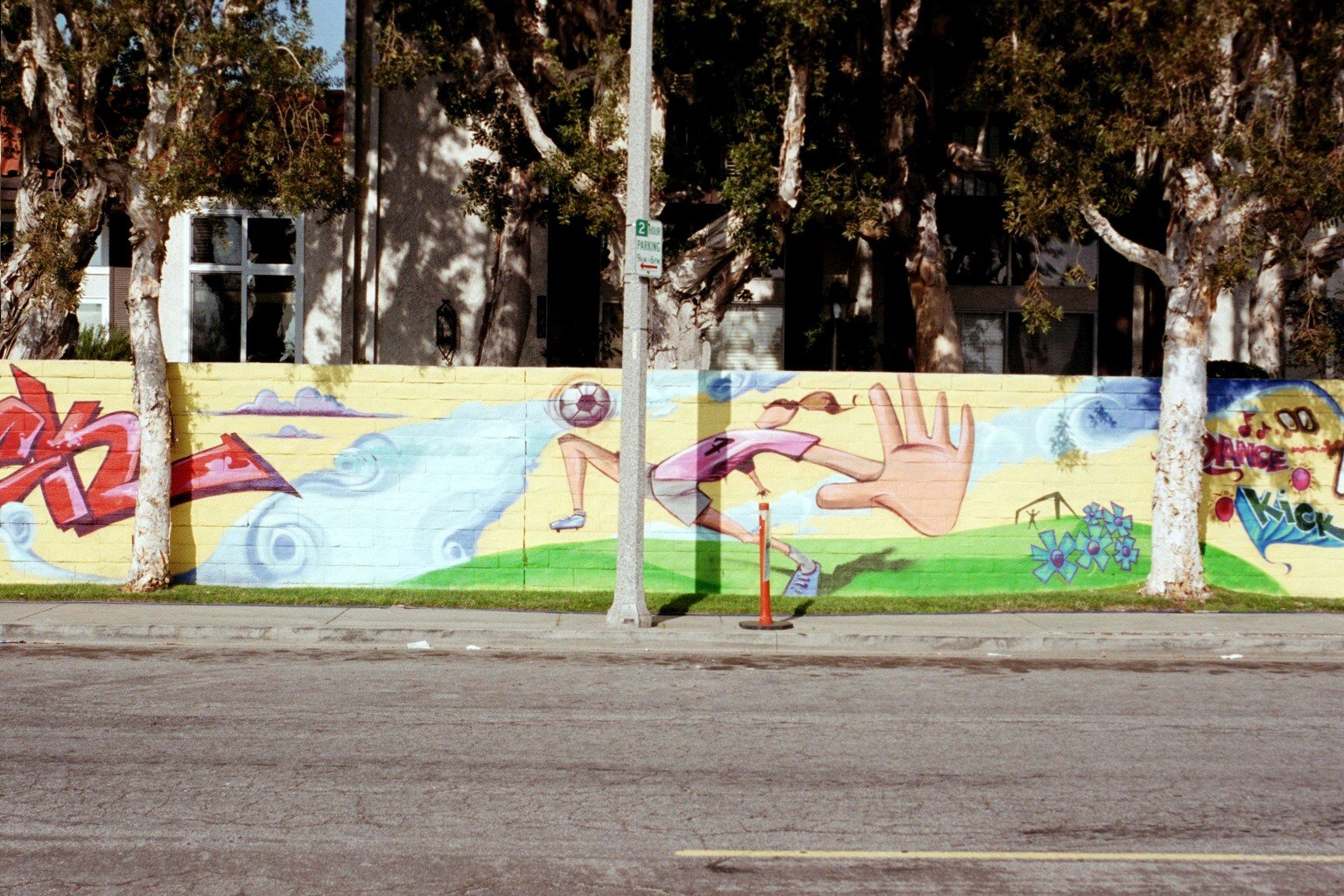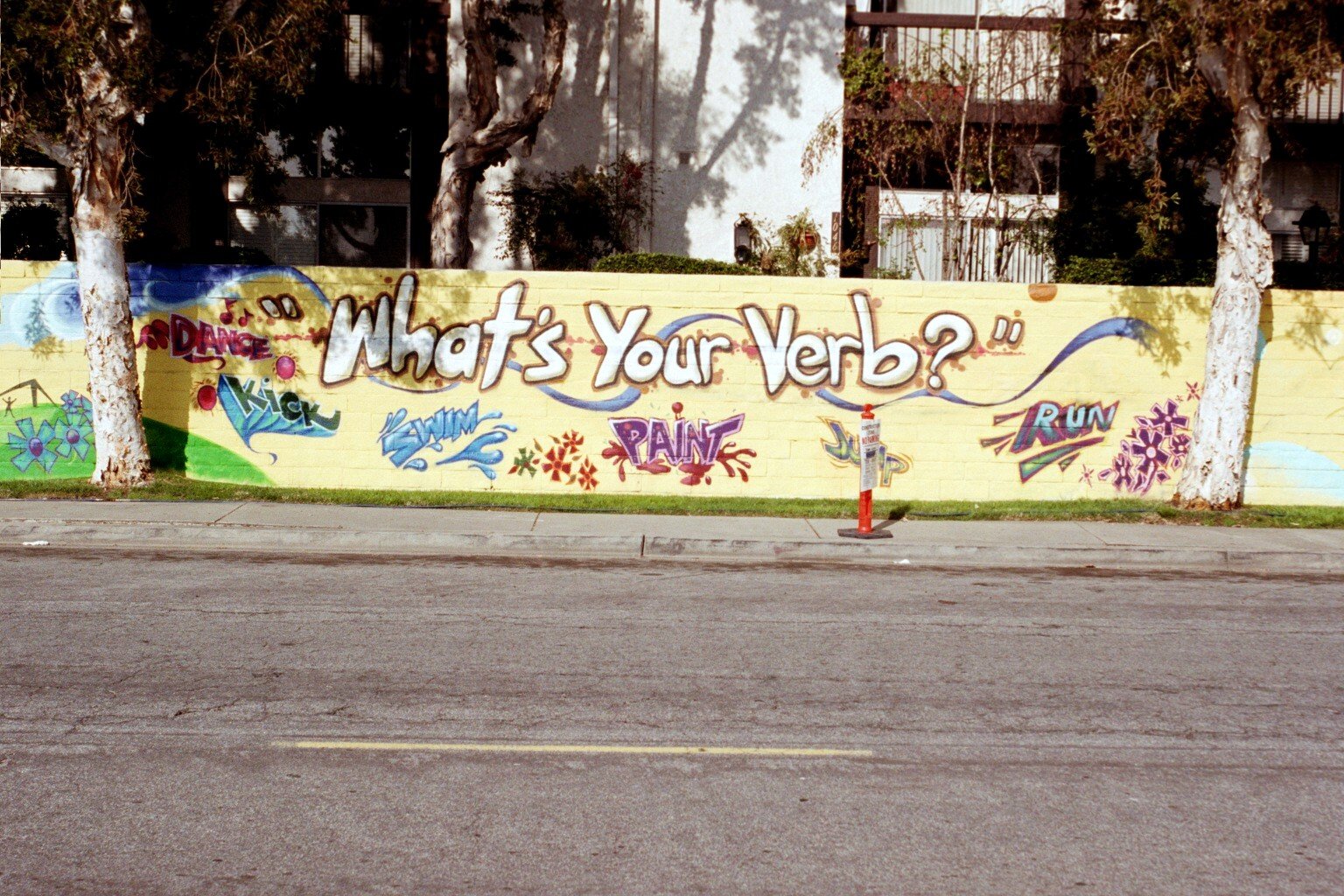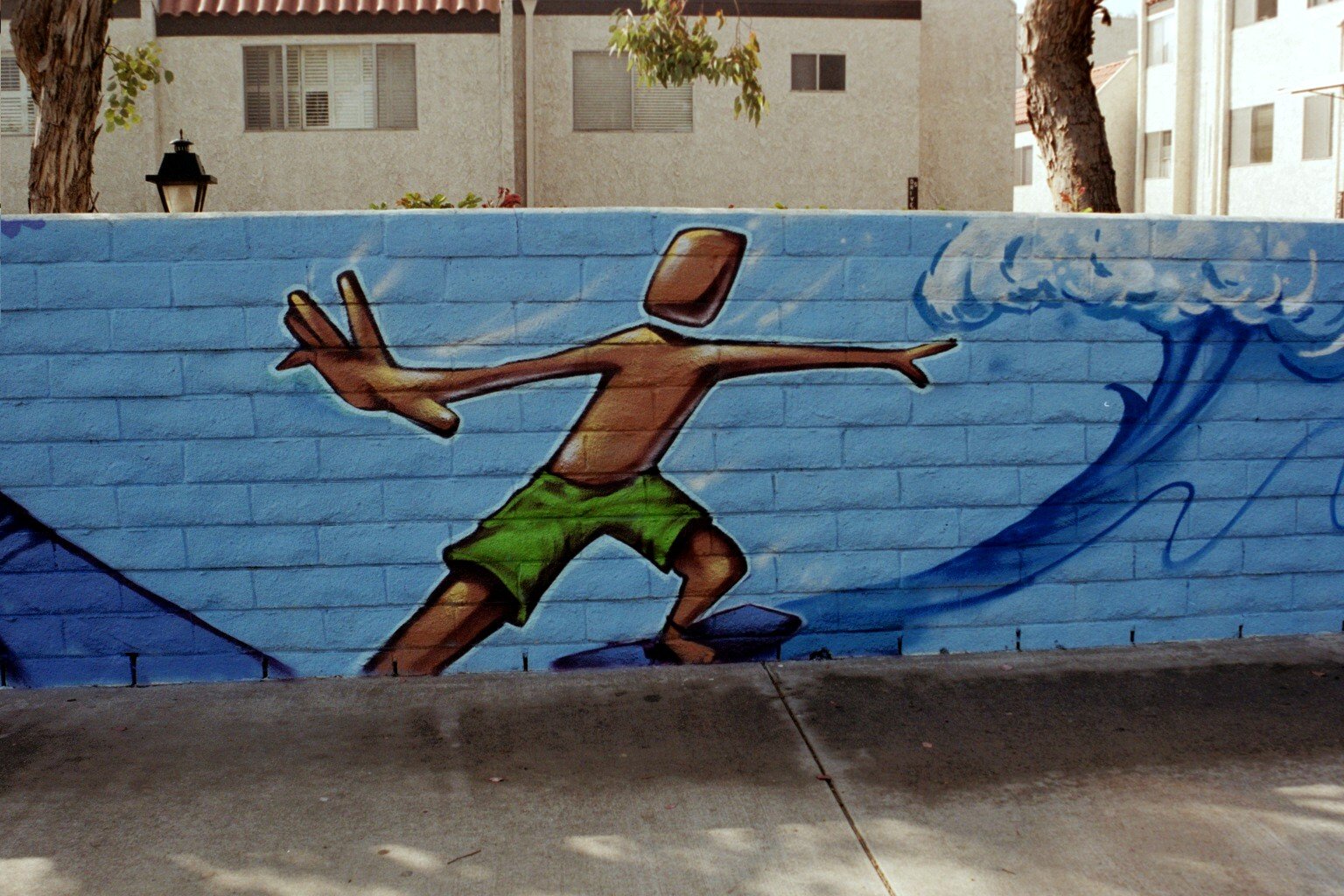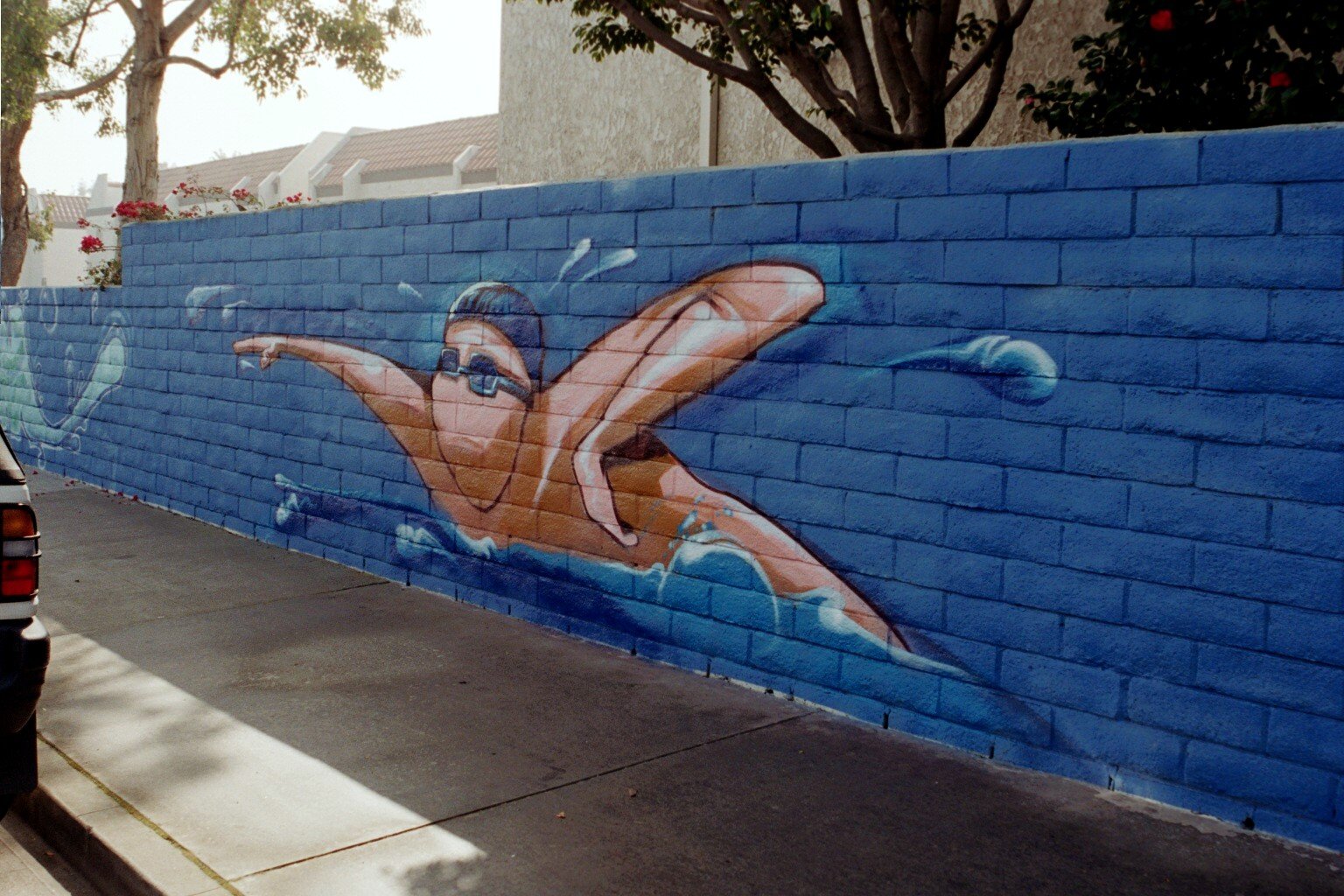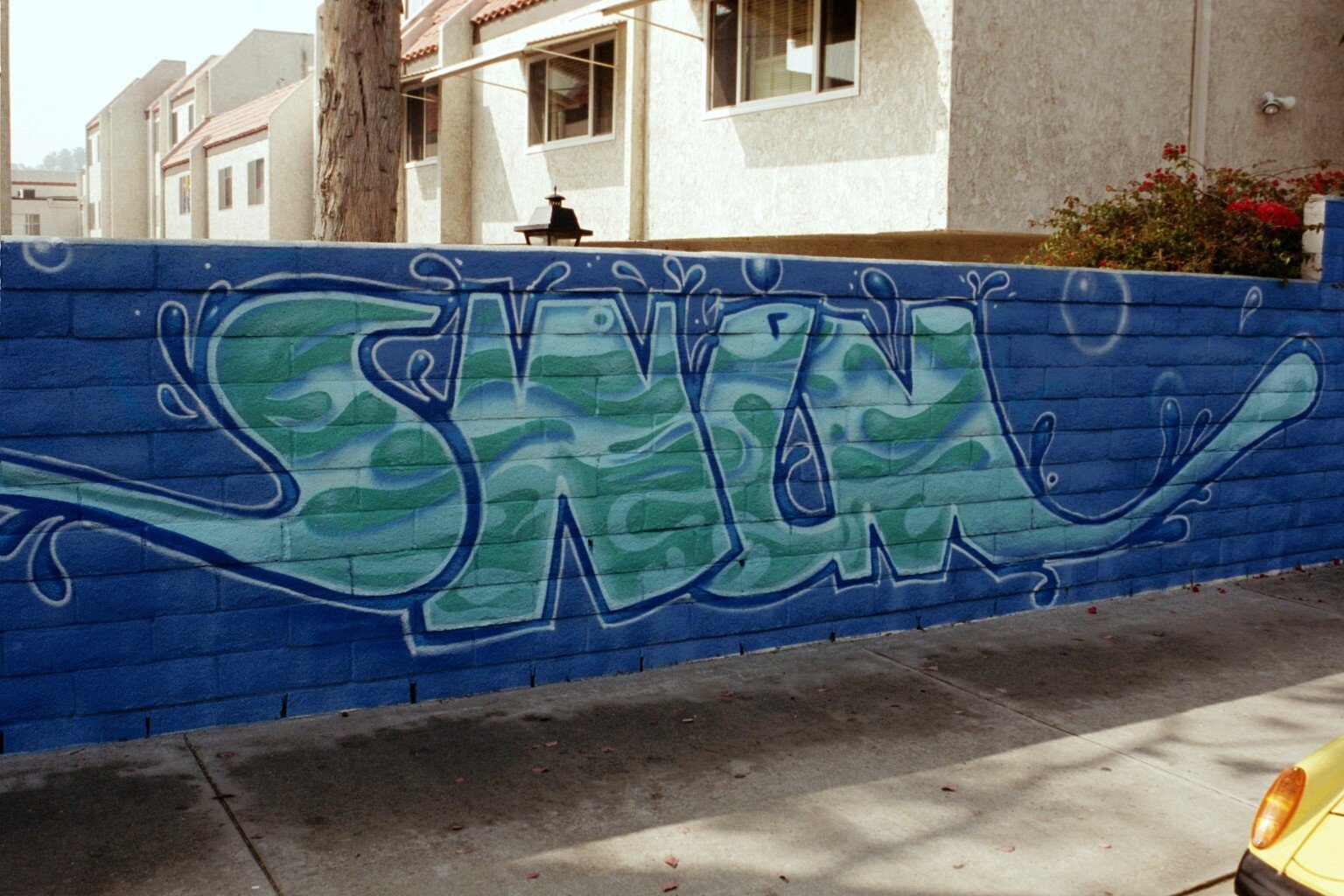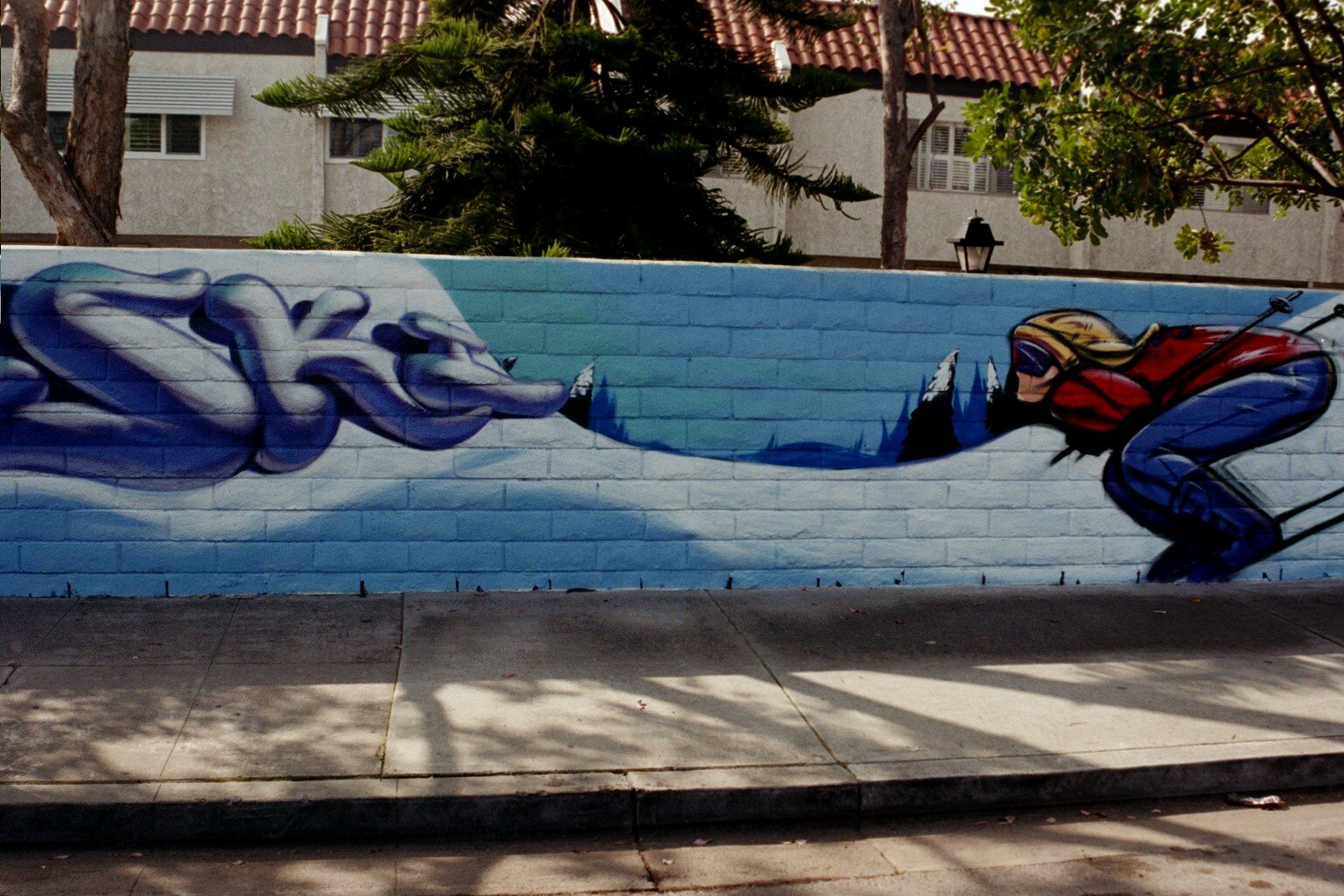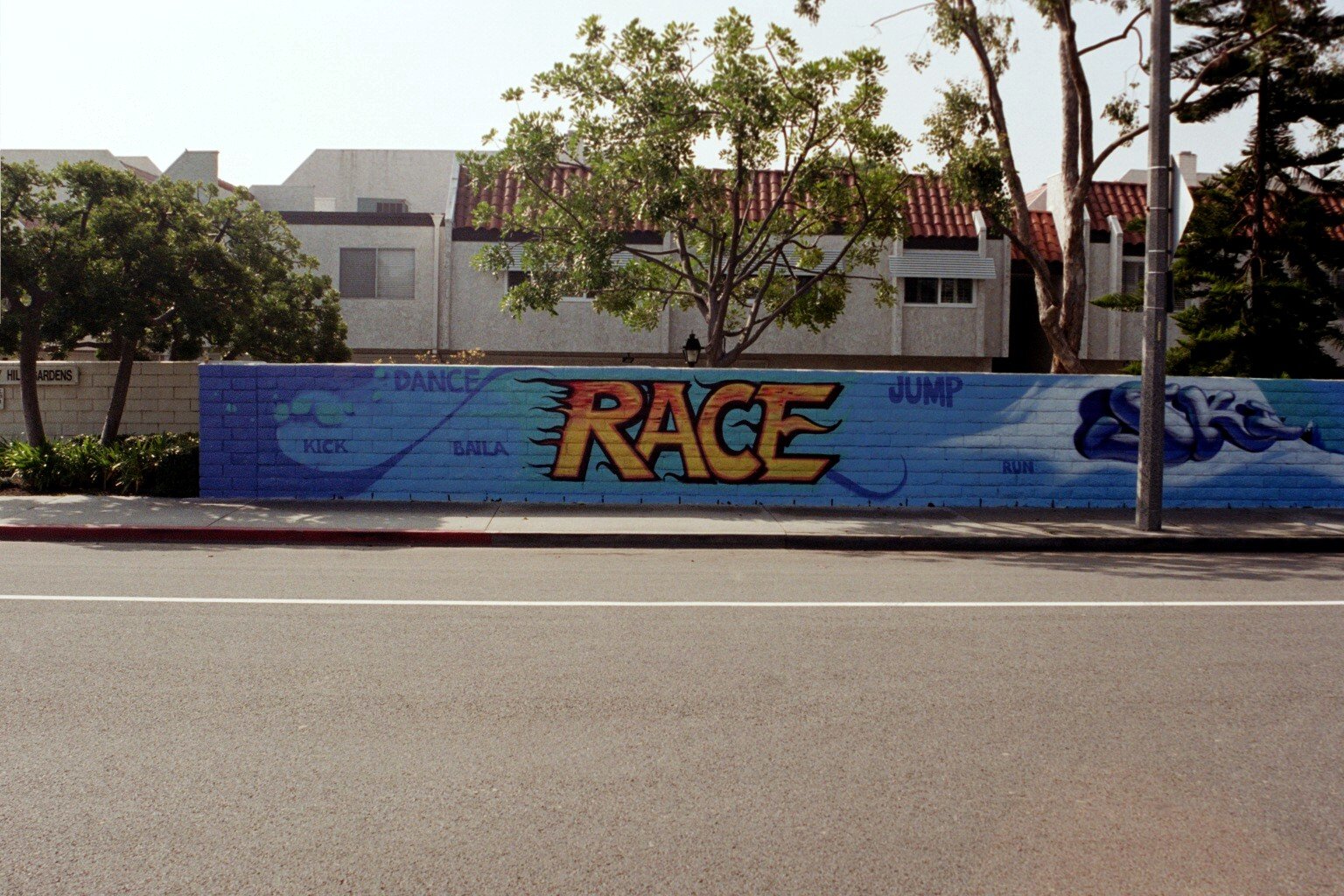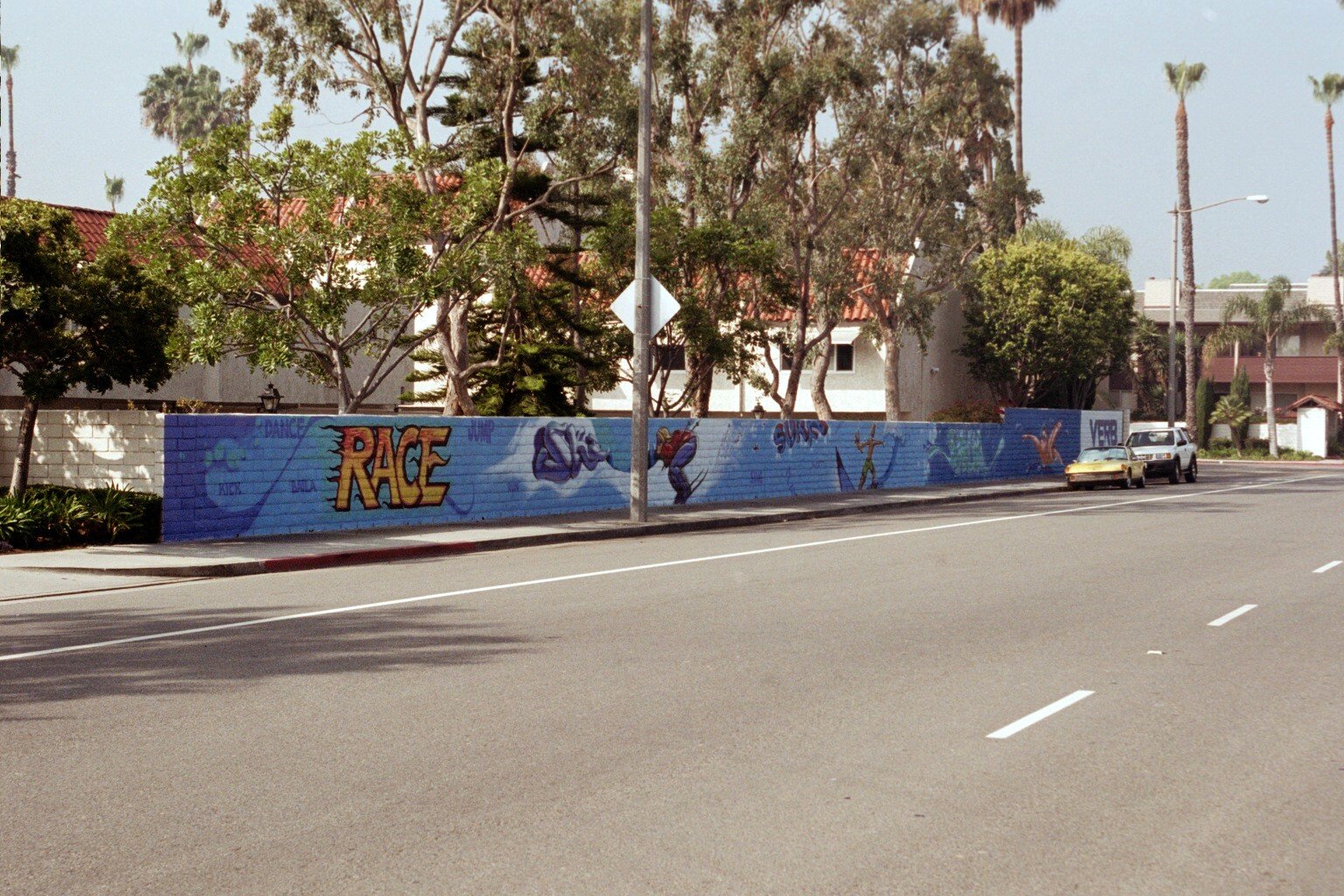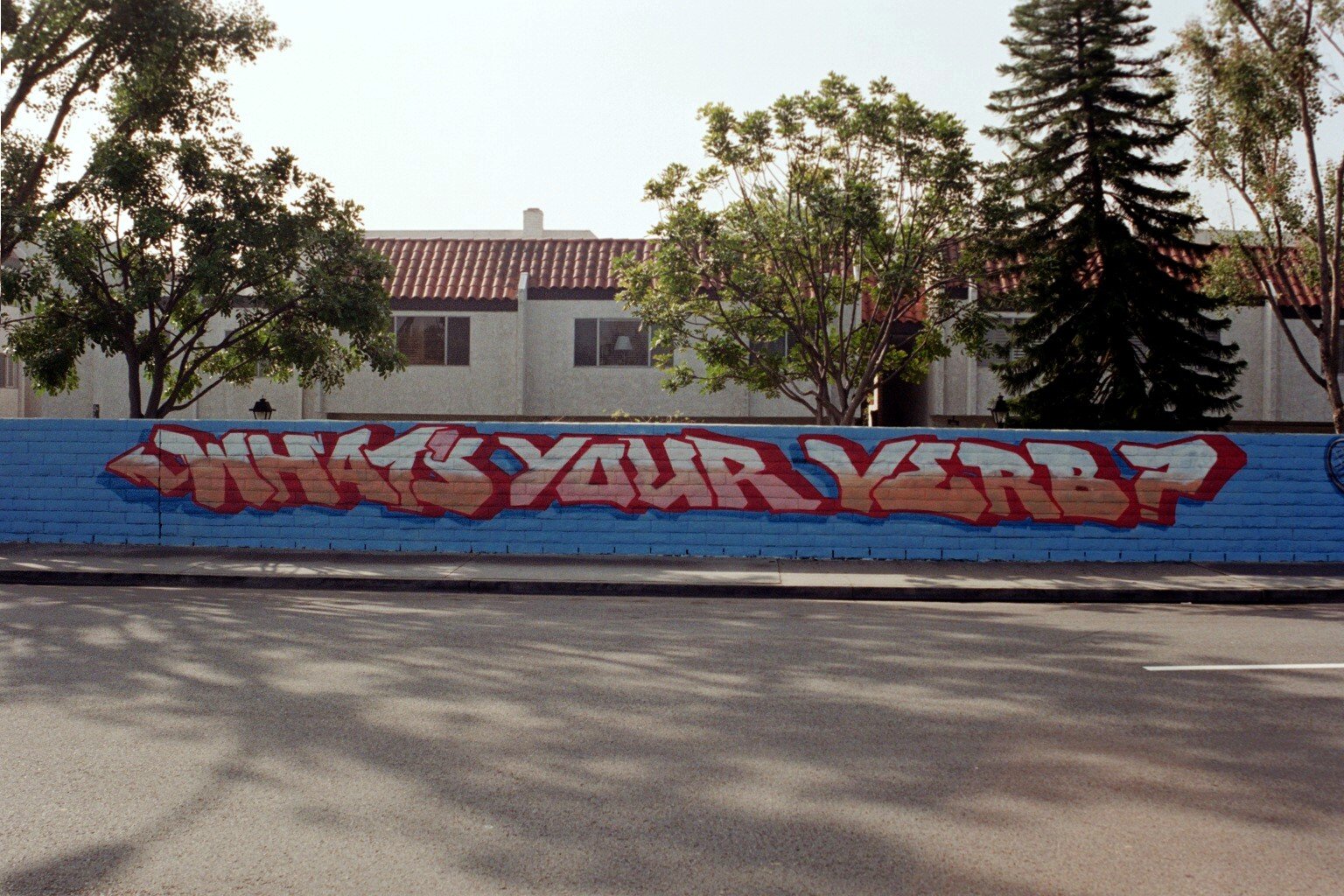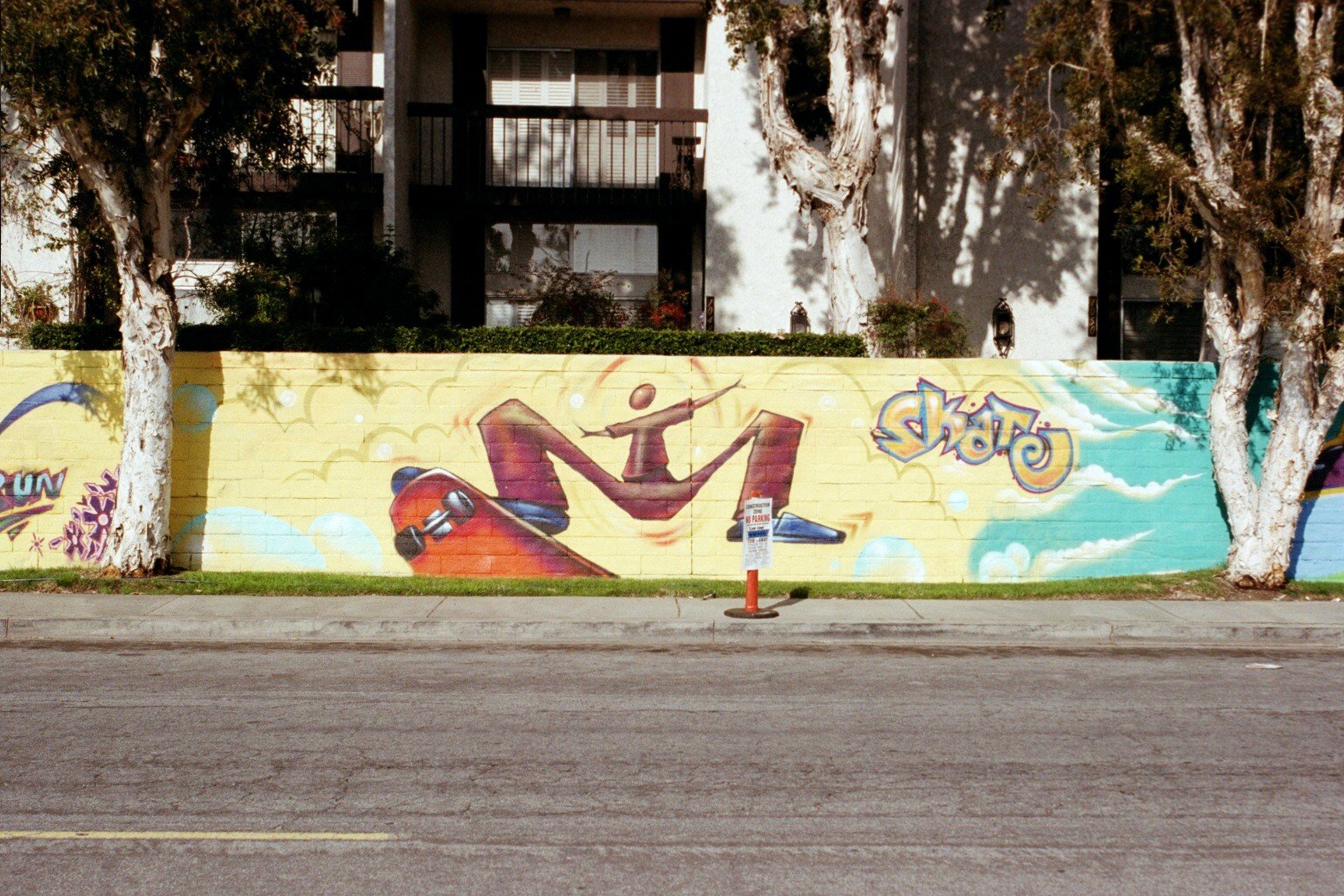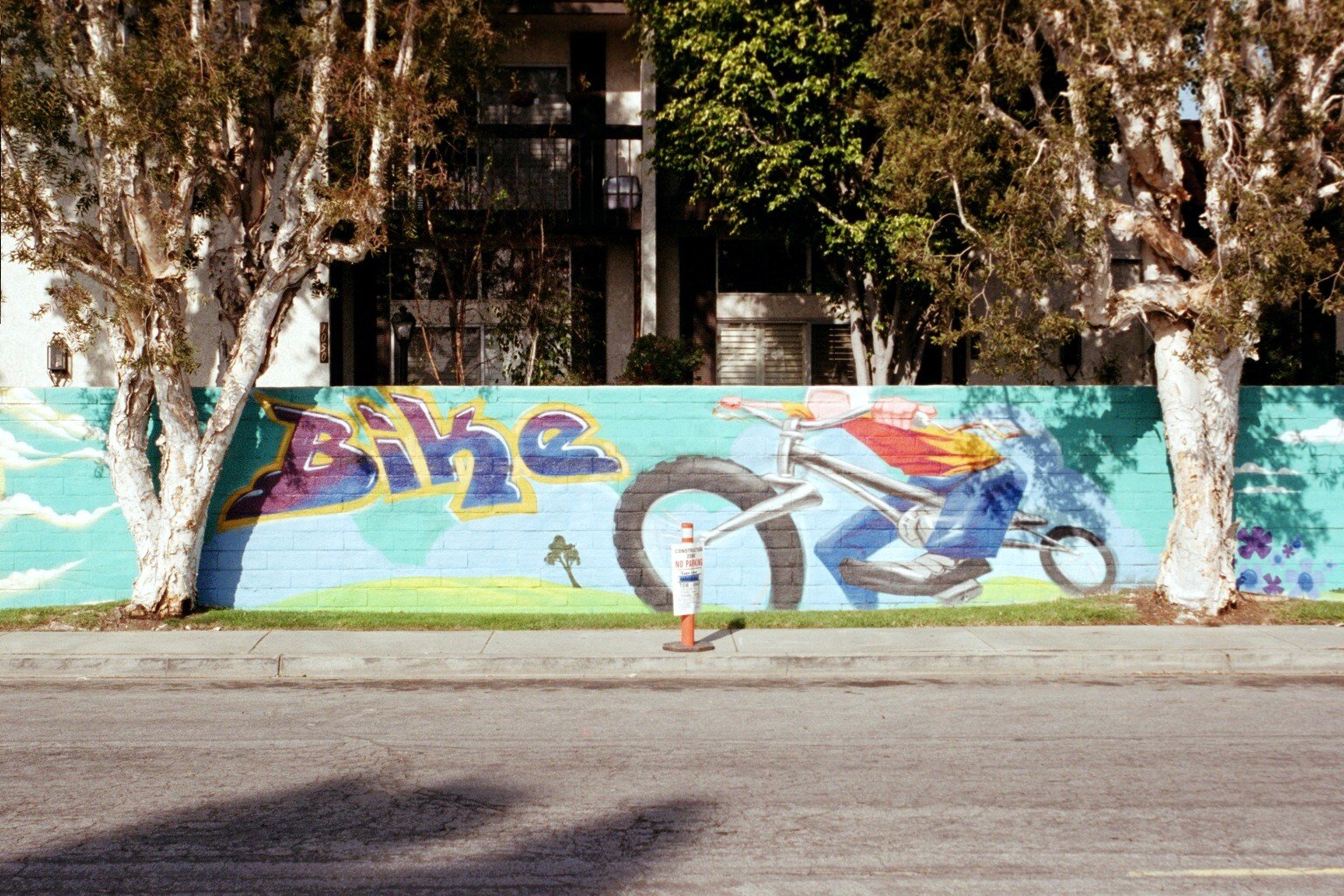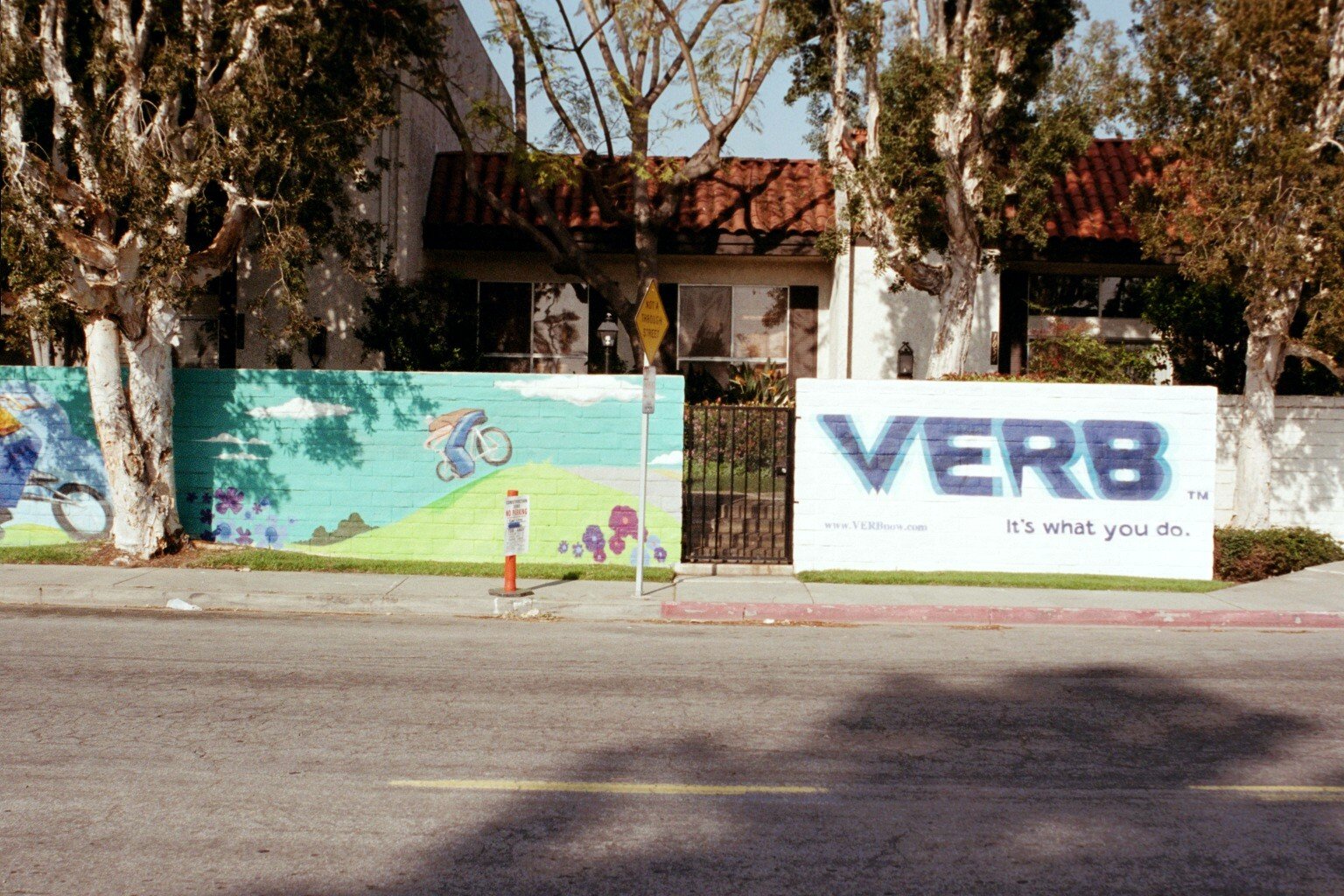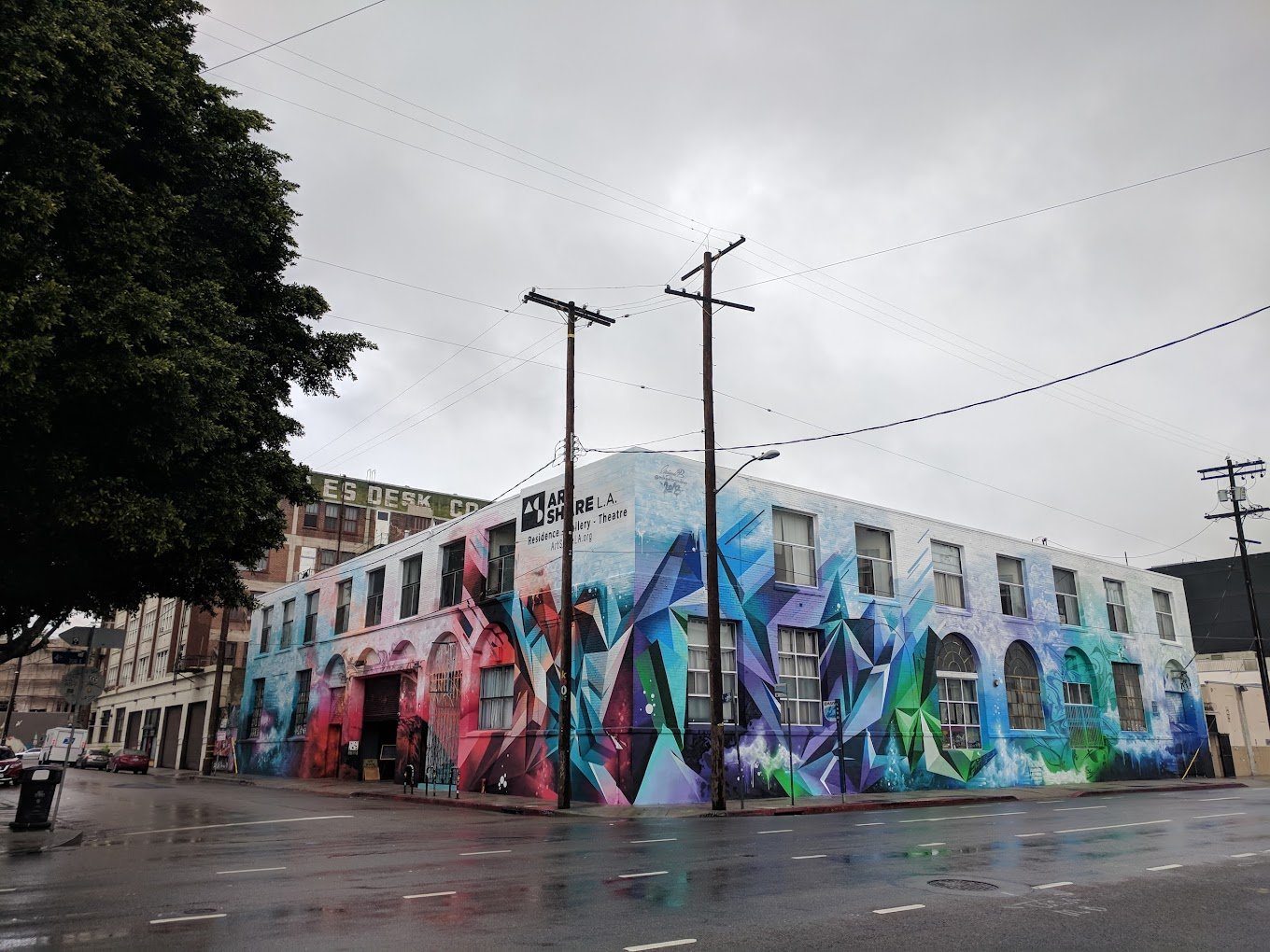Happy to officially announce a new mural project starting very soon in collaboration with the City of Pico Rivera.
Watch the video and stay tuned for more!
HIP HOP 50 GRAFFITI ART ON VINYL SERIES
50 original, hand painted, classic hip hop vinyl albums. All records are original pressings from the 80’s - 1990’s and most come with the original album covers. This is truly one of the most unique series that I’ve created due to its historical and artistic significance for all Hip Hop fans.
First, check out the process on how I created these:
Contact for availability: manone@manone.com
Art World Horror Stories: Man One and the Nightmare Mural [Not Real Art Podcast]
“This is one of those stories where it just keeps getting worse and worse and worse,” says Man One, an LA-based illustrator, curator, and entrepreneur who’s been an active member of the art world for 20 years. “I'm going to forewarn you, this horror story gets worse!”
From racial slurs and defamation to vandalism and cease and desist letters, the project was plagued by obstacles from the start. “Every single day, some old person would stop by, yell at us, flip us off,” Man One says. “This [was] the least threatening mural that I have ever done in my life, and [I was] getting the most flak that I've ever received!” The project’s concept? A fun, colorful mural promoting the benefits of exercise and play for children in the neighborhood. “The first thing [this experience] did was open my eyes, not to be so naive about coming into a community [with a mural] and thinking that people are going to be on board just because it's a positive message.”
Today’s episode is peppered with unexpected surprises and a few life lessons from Man One himself. “Expect the unexpected,” he says. “As an artist, I always have to be aware that there's something that I'm not aware of. There's the unknown. There's something that I'm not seeing, but I’ve got to keep my ears and eyes open so that, when it shows up, I can address it, whatever it may be.”
With more twists and turns than an M. Night Shyamalan film, Man One’s horror story is one for the books. Tune into today’s episode for a dose of art-world dread.
While you listen to the podcast and for some much needed visual context, below are images from the mural Man One created in 2003 for the CDC’s VerbNow campaign.
How could such non-controversial imagery become such a crazy horror story??
It baffles the mind!
What's the Difference Between Street Art vs. Graffiti
The distinction between street art and graffiti in Los Angeles is rooted in the historical context of muralism and the Chicano art movement. Before the 2000s, the term "street art" was not commonly used, and muralism was the prevailing term. As a Los Angeles mural artist, I had my initial exposure to art through the vibrant Chicano murals scattered throughout the city and its surroundings. However, when I ventured into the world of graffiti, I recognized it as the next evolution of Chicano art in my own perspective.
Within the Chicano art movement, graffiti was not considered a part of its ethos. The leading mural artists of the movement like The East Los Streetscapers, Judy Baca, and George Yepes, did not view graffiti as aligned with their artistic vision and the messages they aimed to convey through their murals. Graffiti was seen as a separate entity, associated more closely with experiences and expressions outside the boundaries of the Chicano movement. Notably, the influence of hip-hop culture played a significant role in the emergence and development of graffiti, distinguishing it from the Chicano art movement.
For artists, gaining recognition and respect for their work in the streets was a gradual process. It took years of dedication, persistence, and creating art in the public space before being acknowledged by the established "elders" in the art community. The difference between street art and graffiti in Los Angeles can be traced back to the historical context of muralism and the Chicano art movement. Street art emerged as a distinct term in the 2000s, with notable artists like Shepard Fairey, Banksy, and KAWS gaining fame. Prior to that, muralism was the prevalent term, and graffiti represented a subsequent evolution of Chicano art in my mind. The perspectives of Chicano mural artists and their focus on cultural movements influenced their view of graffiti as a separate entity, while hip-hop culture played a pivotal role in the development of graffiti as a distinct artistic expression.
SOME Key differences between Street Art and Graffiti
The distinction between street art and graffiti in Los Angeles encompasses various key elements, shedding light on the artists' approaches, their sense of community, and the diverse forms of artistic expression they employ. In the context of Los Angeles, renowned for its vibrant art scene, these differences become particularly evident.
Street artists, including Los Angeles mural artists, are characterized by their individualistic approach. They operate independently, distinct from belonging to crews or groups. Street artists conceive specific ideas for their pieces, whether it's in the form of posters, stickers, or large-scale murals, and directly apply them to the streets. Their primary objective is to create visually striking statements or convey powerful messages that resonate with the public. In contrast, graffiti artists perceive the street itself as their artistic domain, using it as a studio to refine their skills and develop their unique style. Immersed in a community-driven subculture, graffiti artists learn from and collaborate with their peers, fostering a sense of camaraderie and collective identity.
It is important to note that street art has evolved into an all-encompassing term, embracing a wide array of artistic expressions created in public spaces. While graffiti remains a prominent form, street art now includes art murals, wheat pasting, installation art, and various other dynamic forms of live art. This inclusivity allows artists to explore diverse mediums, experiment with techniques, and engage with the urban environment in innovative ways. Public spaces serve as their canvases, transforming drab walls into vibrant artworks that provoke thought, challenge societal norms, and contribute to the aesthetic appeal of neighborhoods and cities. Street art blurs the traditional boundaries between art forms and the urban landscape, inviting a visual dialogue with the public and shaping the cultural identity of the community.
In Los Angeles, the distinction between street art and graffiti reflects the individualistic nature of street artists and the community-driven ethos of graffiti artists. Street art encompasses a broad spectrum of artistic expressions, expanding beyond graffiti to include various dynamic forms. Both street art and graffiti contribute to the rich artistic tapestry of Los Angeles, engaging with the public, sparking conversations, and leaving an indelible visual imprint on the city's urban landscape.
Graffiti, on the other hand, primarily focuses on personal expression, crew affiliation, or marking territories. Street art is generally embraced and recognized as a legitimate form of artistic expression, contributing to the cultural enrichment of communities. In contrast, graffiti faces social and legal stigma due to its unauthorized nature, often perceived as a blight on public spaces.
Brands and corporations can mostly prefer street art over graffiti for its legitimacy, positive brand associations, visual impact, authenticity, and social media virality. Street art, created with permission and commissioning, aligns with a brand's image and values. It captures attention with vibrant colors and intricate details, leaving a lasting impression. Sometimes why brands like Street art over Graffiti lies in street art's authenticity and street credibility to resonate with audiences, while its popularity on social media allows for viral exposure. Collaborating with street artists helps brands connect with diverse audiences, creating memorable experiences, and positioning themselves as supporters of art and popular forms of graffiti culture in local communities.
Good People Under Our Sun and Moon
One notable example of commissioned street art I recently created is titled "The Good People Under Our Sun and Moon." This piece was created with permission from the city of Placentia, California and is situated on both sides of Crowther St., under the 57 freeway.
The mural, measuring 185 ft. Wide by 29 ft. High, serves as a visual landmark in the community. Its theme draws inspiration from the mythology of the sun and the moon, exploring their relevance to housing, shelter, and community in our modern society. This authorized mural project reflects the intention of artists to provoke thought, foster unity, and contribute to the cultural fabric of the city. The completion of these extraordinary and huge murals required over 80 gallons of paint, showcasing my dedication and skill to bring this significant artwork to life.
Where to Find the Best Street Art Murals in Los Angeles
The vibrant and ever-evolving street art in Los Angeles has captured the attention of art enthusiasts, cultural observers, and locals alike. From its humble beginnings rooted in political activism to its current status as a recognized and celebrated art form, the journey of the Los Angeles street art scene is a fascinating one. I wanted to briefly touch upon some of those key moments.
1960s-1970s: Identity and Activism
The Chicano and Civil Rights Movements of the 1960s and 1970s sparked political activism, leading to Chicano art murals as a medium for cultural expression and addressing social issues of that time.
1970s-1980s: Rise of Graffiti Writing
Los Angeles became a hub for graffiti writing, with Latino neighborhoods embracing this art form, leaving distinct marks on various mediums including walls and trains.
1980s-1990s: Cultivating Creativity and Community
Street art grew as graffiti evolved, fostering camaraderie and competition among artists. Hip-hop and skateboarding culture played influential roles in shaping Chicano style art, mentalities, and bonds within communities.
Mid-1990s: Struggles and Legitimacy
Stringent anti-graffiti measures led to a decline, but muralists and organizations like SPARC worked to legitimize public art and address social issues.
Late 1990s-2000s: Global Recognition
Street art expanded beyond graffiti writing, embracing diverse styles and gaining international recognition through influential artists like Shepard Fairey, Futura, and Kaws just to name a few in a vey large pool of multi-talented and creative artists.
2000s-2010s: Legitimization and Celebration
Galleries, projects, and festivals played vital roles in legitimizing contemporary street art, with tours and events celebrating LA's vibrant public art landscape. Today, the Los Angeles street art scene continues to thrive and captivate audiences with its diverse range of artistic expressions. From the politically charged murals of the past to the multi-dimensional works found throughout the city, street art has firmly established itself as a powerful and influential artistic movement, a testament to the city's embrace of creativity and the enduring power of art in public.
"Ese Leo" by Man One. Located at 2341 E Olympic Blvd in Los Angeles.
As an artist that thrived during the 70’s and 80s, I created this mural to honor Leo Limon, a pioneer of Chicano art in LA. Leo has been a supporter and activist for graffiti artists, especially those from the East side, for several decades. He is renowned for his "gatitas" or LA River Cats, which he painted in the LA river during the 70s and 80s. This mural is part of my ongoing series #FacesLA, where I pay tribute to influential and beloved artists and community members.
You can see more pictures of my paint day here.
More about Leo’s work can be seen at: www.leolimon.com
Best Street Art in the San Fernando Valley
Nestled within the vibrant neighborhoods of the San Fernando Valley, a project known as Mural Mile has brought a breath of new life into the local art scene. This ambitious endeavor showcases the talent and creativity of renowned artists who have contributed their unique visions to the project.
Artists like Levi Ponce, Germ, Carlos Lopez, and Sofia Mendez contributed to the project, infusing the streets of the San Fernando Valley with their unique artistic visions. As you go throughout Mural Mile, you’ll become mesmerized by the stunning visuals and reminded of the immense talent and creativity that enriches our surroundings. Mural Mile serves as an enduring tribute to the vibrant spirit of the San Fernando Valley and artists who continue to shape its artistic landscape.
Exploring the Best Street Art in Downtown Los Angeles
Downtown Los Angeles is a hotbed of creativity, with an array of vibrant neighborhoods showcasing some of the best street art the city has to offer. In this article, we will delve into two prominent areas, the Arts District and the Container Yard, as well as highlight the captivating art near Art Share LA.
Arts District:
The Arts District in Downtown Los Angeles is a haven for artists and street art enthusiasts alike. Its industrial backdrop provides a striking canvas for a diverse range of artistic expressions. Walking through its streets, one encounters a kaleidoscope of murals, large-scale installations, and colorful graffiti. Artists from around the world have contributed to the district's transformation, with each piece offering a unique perspective and style. From intricate portraits to abstract compositions, the Arts District offers an immersive experience that captures the dynamic essence of urban art.
The Container Yard:
The Container Yard, an innovative art space in Downtown Los Angeles, has become a hub for contemporary street art. This open-air gallery features an ever-evolving collection of murals and installations by both local and international artists. The expansive walls of shipping containers and warehouse spaces serve as expansive canvases, showcasing a diverse range of artistic styles and themes. From vibrant geometric patterns to thought-provoking social commentary, the Container Yard's street art provides an immersive and visually stunning experience.
Art Share LA:
Nestled near Downtown Los Angeles' Art Share LA, a vibrant arts center, lies an array of captivating street art. Artshare LA is a non-profit arts center in Los Angeles, dedicated to supporting emerging artists through exhibitions, workshops, and residencies. They provide affordable studios and gallery spaces, nurturing creativity and fostering connections within the art community. With a commitment to accessibility and community engagement, Artshare LA plays a vital role in driving the vibrant art scene in Los Angeles.
The surrounding streets come alive with colorful murals and graffiti, creating an artistic dialogue with the community. Artists in this area often explore a wide range of topics, including social justice, cultural identity, and environmental issues. The art near Art Share LA serves as a testament to the power of art in fostering community engagement and promoting meaningful conversations.
Discovering the Best Street Art in Santa Monica
Santa Monica, with its iconic beachfront and vibrant atmosphere, offers a unique and captivating street art scene. We will focus on the dynamic and culturally rich neighborhood of Venice Beach, which has become a renowned destination for street art enthusiasts.
Venice Beach Boardwalk:
The iconic boardwalk itself is adorned with a variety of colorful murals and graffiti. As you stroll along the beachfront, you'll encounter numerous artistic creations that showcase the eclectic and bohemian spirit of Venice Beach.
Venice Art Walls:
Located at the heart of Venice Beach, the Venice Art Walls provide a designated space for artists to express themselves freely. These public walls act as an open canvas for both local and international artists, making it an ever-changing gallery of street art.
Man One's Live Art Unites Downtown LA in Civic Pride
I recently took center stage during the exhilarating Los Angeles Kings playoff game 6, bringing a surge of LA Kings Fans to the Crypto.com Arena and surrounding Downtown LA. I was hired by the LA Kings to provide live art entertainment during their Fanfest event before game 6 of the NHL playoffs against the Edmonton Oilers.
I transformed a blank canvas into a vibrant mural symbolizing the hockey team's resilience and unwavering spirit. The piece showcased support for the LA Kings, inviting fans to contribute by writing messages on the interactive artwork. With a retro gold and purple KINGS graffiti design, fans eagerly joined in, forging a powerful connection between the team, their devoted supporters, and the city. This interactive art experience embodied downtown's unwavering spirit, merging sports, art, and civic pride in a vibrant celebration.
I had 3 hours to create the piece from start to finish. I had a great time painting for the Kings and the city of Los Angeles. One of the highlights of the day for me was raffling off a part of this piece I created to a lucky fan! The center of the panel had an unstretched canvas which was the part of the piece that was later raffled off.
Additional Mural Commissions by Man One
Always Sunny by Man One
Located at 300 S. Grand Ave. in Los Angeles
I was commissioned by Rising Realty Partners to create a fun and colorful mural at the 1 California Plaza. This area in DTLA called Bunker Hill is known for it’s incredible architecture and cultural landmarks like Disney Concert Hall and Angel’s Flight to name a few.
Best Sports Murals to check out near Downtown LA when going to a King's Game.
Kobe and Gianna by Mr. Brainwash
Found at 1255 S. La Brea Ave., Los Angeles.
A magnificent mural crafted by the renowned LA artist known as Mr. Brainwash, the figures of Kobe and Gianna Bryant come to life. Alongside them, Kobe proudly dons his iconic no. 8 jersey, while a profound quote from his large stock of popular quotes graces the backdrop of this great Kobe Bryant mural in Los Angeles.
LA Lakers Mural by Jonas Never
Located in Koreatown Los Angeles,
This mural pays homage to the LA Lakers basketball team throughout a few championship eras of Lakers legends sure to become one of the famous murals in Los Angeles. It features prominent players and symbols associated with the team, celebrating 75 years of NBA Basketball.
Laker Greats by Gustavo Zermeno Jr.
Off Melrose Avenue
A showcase of Los Angeles Lakers' greats like Kobe Bryant, Shaq and Magic Johnson with current legend Lebron James staring at the greats looking down upon him. It serves as a reminder of the team's success throughout the years with different players who went on to become legends for the team as well as the game of basketball.
